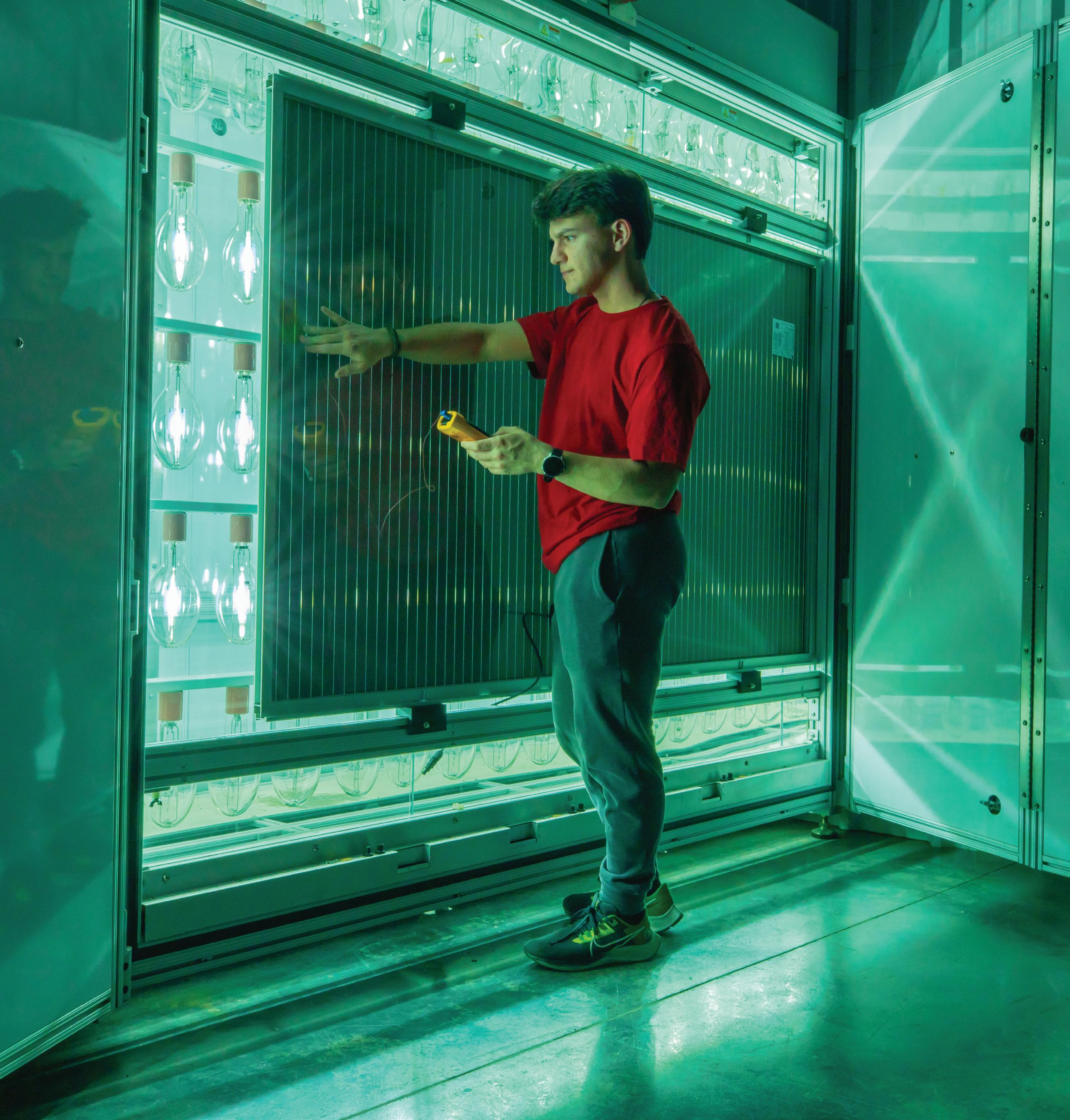
Happy Birthday to Us
As we move beyond our 125th year, the future has never been brighter
SPRING 2024
Sun King Researcher shines as international force in solar energy
Maison d’Etre Center for Louisiana Studies fulfills its destiny at the Roy House

As you read this, the observance of the University’s 125th birthday is coming to a close. It’s been a year filled with reminders of how far we’ve come in that long history and definite signals of where we’re heading.
This issue of La Louisiane captures both the nostalgia of an anniversary celebration and the momentum that’s moving us beyond 125.
As part of our year-long birthday, the University hosted an Academic Showcase earlier this spring. Walking through the Student Union, you could feel the energy and excitement as faculty and staff members and students displayed work that places them on the front lines of some of society’s great challenges and on the cutting edge of emerging issues, too.
There was also a historical exhibit – 20 panels that chronicled and encapsulated the past century and a quarter. Selections from it appear in this issue, so you have the chance to experience it as well. With each page, the dynamism and progress that fueled our growth increases, and the stories of success it reveals will leave little doubt how we were able to move beyond our humble beginnings to become the top-tier university we are now.
As many visitors did, I spent some time during the Academic Showcase reading and reflecting on the exhibit. As I reached its end, I noticed an empty spot after the final panel, and I thought to myself, this is where our next chapter will go.
As this issue of La Louisiane shows, students, faculty, staff and alumni –with the help of donors, friends and community partners – are busy writing that next chapter. Here, you’ll find researchers creating a brighter future. You’ll find stories of preservation and perseverance, and those of support and impact. You’ll meet national champions, world-class scholars, students who are going places and graduates who haven’t forgotten their roots.
Most of all, you’ll get the sense that, while the last 125 years have been monumental, our next chapter will surely eclipse them.
We hope you enjoy this issue of La Louisiane.
Dr. Joseph Savoie


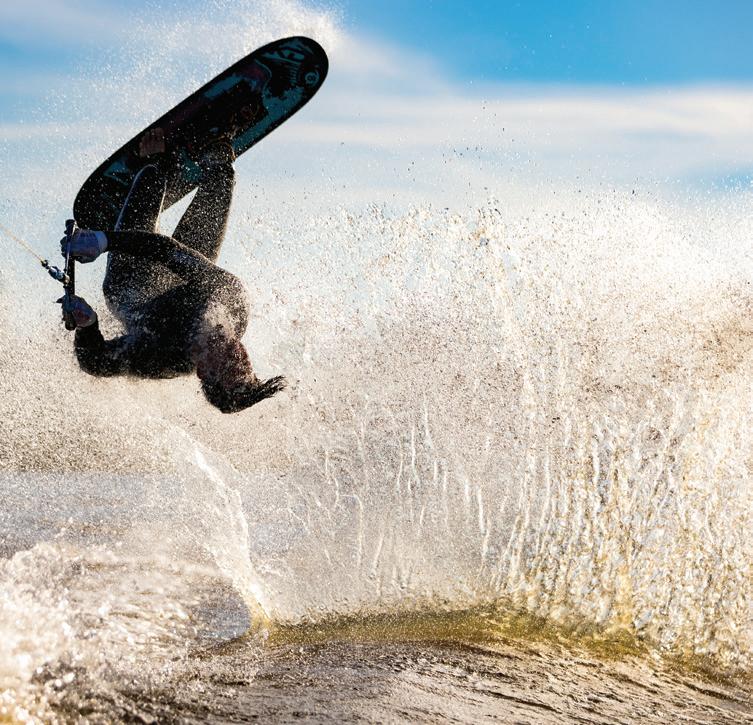
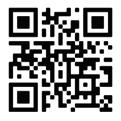
La Louisiane is published by UL Lafayette’s students through the STUDENT GOVERNMENT ASSOCIATION, by UL LAFAYETTE and by COMMUNITY SUPPORTERS 32 36 louisiana. e du/lalouisiane 8 ON THE COVER: The “biggest, coolest” equipment around – like this light-soaking chamber – is among the reasons the University is an international solar energy leader. Photo by Doug Dugas. Dr. Joseph Savoie President University of Louisiana at Lafayette Dr. Jennifer Stephens Associate Vice President Communications and Marketing Volume 30, Number 1. $5 an issue. La Louisiane is published by the Office of Communications and Marketing in the Division of University Advancement (337) 482-6397 LaLouisiane@louisiana.edu © 2024 University of Louisiana at Lafayette University of Louisiana at Lafayette is a member of the University of Louisiana System. Dr. James Savage Editor Marie Elizabeth Oliver Managing Editor Charlie Bier Associate Editorial Director Katherine Frazer Student Editor Kade Parker Editorial Intern Christi Landry Bell, Adam Cortez, Christine Payton, Kathleen Thames Contributing Writers Courtney Jeffries Creative Director André Broussard Graphic Designer Doug Dugas, Paul Kieu Photographers Philip Gould, Danny Izzo, UL Lafayette Special Collections Contributing Photography FEATURES 18 Happy Birthday to Us DEPARTMENTS RESEARCH 2 End of the Road 6 FUEL for the Future ON CAMPUS 8 Roy House Restored 12 Love Language STUDENTS 14 Radio Renaissance 16 Ice Age Finds SPORTS 38 Field Work ALUMNI ASSOCIATION 40 Enduring Legacy ALUMNI 45 Alumna Makes History GIVING 46 Prescription for Success 47 ‘A Wonderful Life’ 32 Sun King 36 Domination VISIT LOUISIANA.EDU/LALOUISIANE FOR A DIGITAL VERSION OF LA LOUISIANE SIGN UP FOR THE @LOUISIANA NEWSLETTER FOR THE LATEST UNIVERSITY NEWS. OCM.LOUISIANA.EDU/SUBSCRIBE Celebrating18 Let’s keep in touch. Update your contact information by visiting alumni.louisiana.edu/membership/update-profile
END OF THE ROAD
Oral histories tell stories of displaced tribe’s plight
BY CHARLIE BIER
The ancestral home of members of the Jean Charles Choctaw Nation was once a sprawling, thriving island where self-sufficiency was rooted in growing crops, raising livestock, hunting, fishing and trapping. Coastal erosion and subsidence, however, has all but wiped out Isle de Jean Charles, which sits 90 miles southwest of New Orleans and about 3 miles off the coast of Terrebonne Parish. Once roughly 32,000-acres, an area about three-quarters the size of Washington, D.C., Isle de Jean Charles has dwindled to about 300 acres. With the island has gone a home to, at its peak, hundreds of Native Americans. Four families remain, sharing an existence with a string of abandoned, dilapidated houses clinging to a strip of land as narrow as a quarter mile in spots.
Dr. Heather Stone is helping to preserve memories of what life was once like on Isle de Jean Charles, a place accessible solely by boat or pirogue before the construction of Island Road in 1953. Stone, an associate professor in the College of Education & Human Development, has collected dozens of oral histories from tribal members that form the heart of her forthcoming book, End of the Road: Forced Exodus from Isle de Jean Charles. The University Press of Mississippi will publish End of the Road as part of its America’s Third Coast Series. Its oral histories will constitute the only known large-scale compilation of personal accounts by members of the displaced and fractured Jean Charles Choctaw Nation. The coffee table-sized book will also feature text by Stone, photos of island life through generations, and images of survey maps to illustrate the progression of the land’s
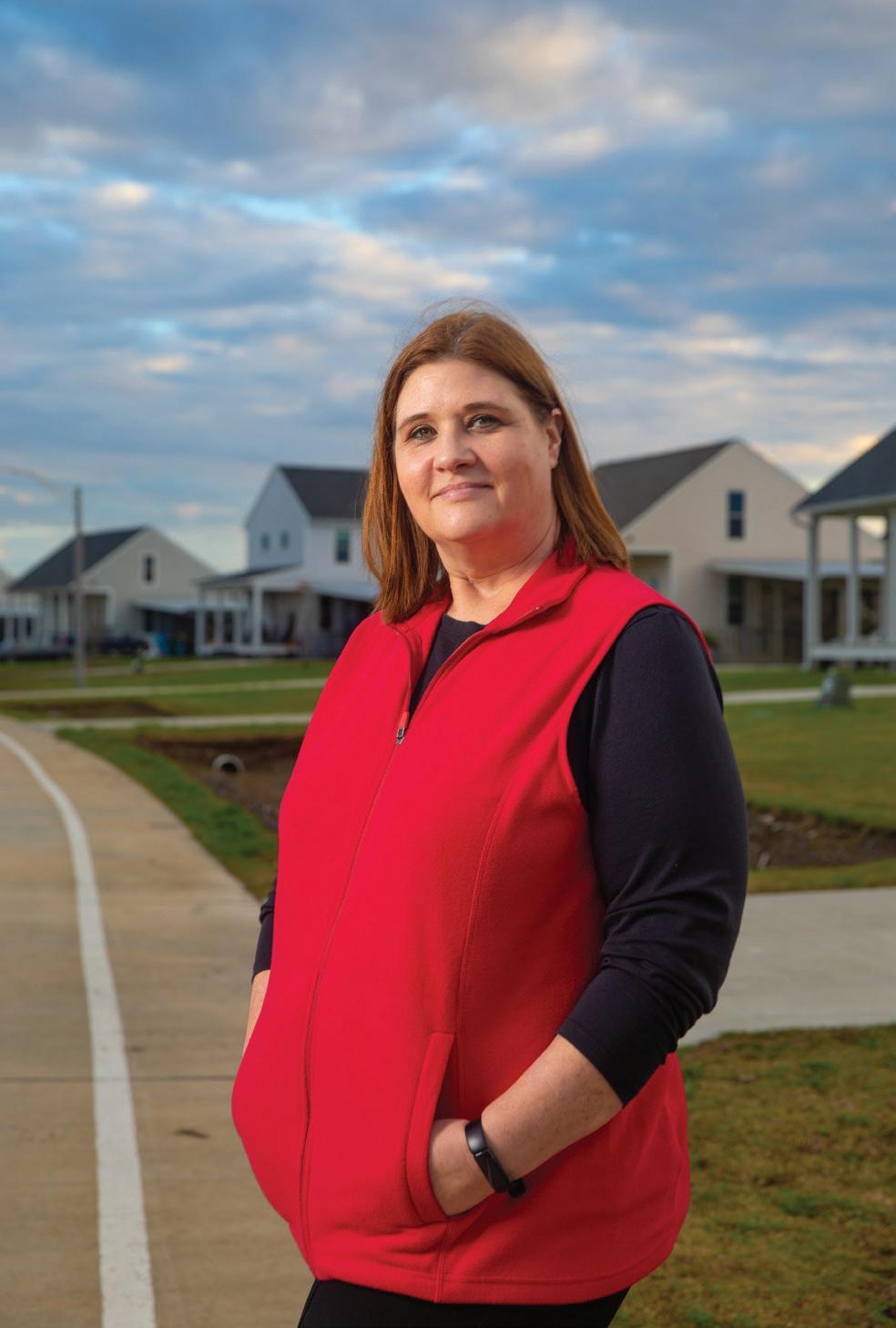
deterioration. The content is structured to engage scholars and general readers alike, she explained. “It tells an overall story of what happened to this tribe and what happened to the land and the outside influences that impacted each.”
End of the Road will also put a resounding personal stamp on a larger story. In 2022, many former residents of Isle de Jean Charles began resettling in a new community. The move was historic, the first such federally funded relocation effort in the lower 48 states for a community impacted by environmental changes. The relocation, to a development about 40 miles north of Isle de Jean Charles called “New Isle,” was funded by a $48 million U.S. Department of Housing and Urban Development grant administered by the state. The resettlement is intended to serve as a model as similar displacement scenarios play out across the nation and world. Tribal members’ oral histories – threaded with customs and traditions as well as elements of history, politics, ethnicity, economics and coastal land loss – both “amplify the community’s voice and increase global awareness of environmental changes and their effects on people in Louisiana and other low-lying communities,” Stone wrote in the preface to End of the Road.
Residents’ opinions about New Isle – and its 32 houses built on what was once a sugar cane field – are mixed. Former Isle de Jean Charles resident Chris Brunet said he’s “still adjusting” to life in his new neighborhood and summed up the complicated relocation during a recent interview with La Louisiane. “If we still had the land, I wouldn’t be here,” he said.
2 LA LOUISIANE | SPRING 2024
Dr. Heather Stone at New Isle, the home of many former residents of Isle de Jean Charles.
DOUG DUGAS
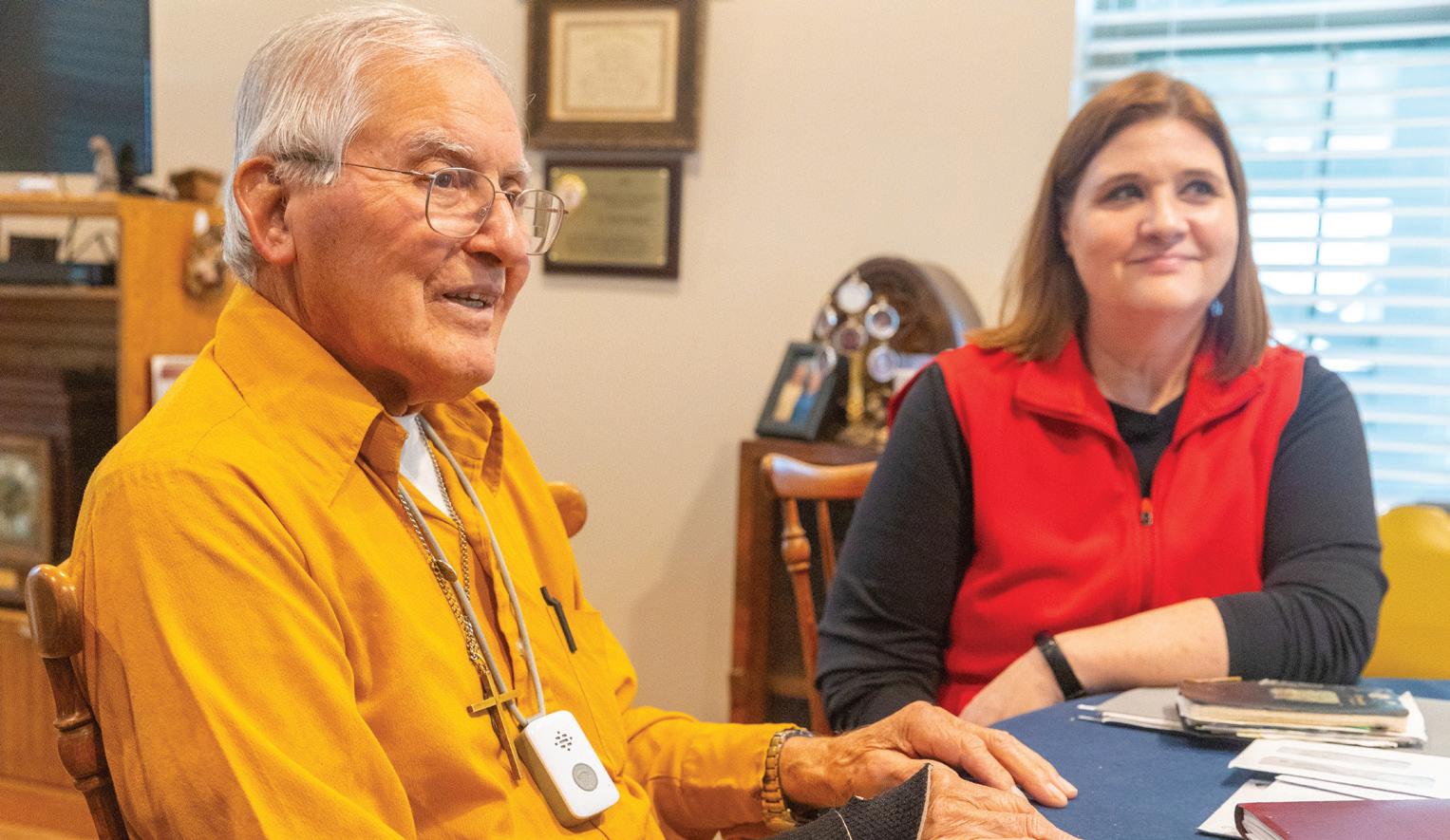
“In spite of the floods and in spite of the hurricanes, I would have stayed on the island. It’s like people who live in Tornado Alley. It’s part of your environment. Sometimes it turns and gets you, but you still stay. It’s where you feel at home.”
Stone’s time spent researching the island, building relationships with residents, collecting interviews, and conducting archival research in Washington, D.C., and Baton Rouge began in 2016, the year the relocation grant was awarded. Stone, who has spent long

stretches in a rented home near Isle de Jean Charles, has witnessed plenty of island history. She has seen the Jean Charles Choctaw Nation, which was previously the Biloxi-Chitimacha-Choctaw tribe, adopt its current name. Stone has watched the transition of the nation’s leadership pass from former tribal chief Albert Naquin to his nephew, Deme Naquin. She has observed the fallout caused by Hurricane Ida in 2021, which effectively delivered the final blow to Isle de Jean Charles. And, sadly, Stone has lost friends. “In the

LA LOUISIANE | SPRING 2024 3
Dr. Heather Stone catches up with the Rev. Roch Naquin of the Jean Charles Choctaw Nation. At right is a water-damaged prayer for intercession.
Jean Charles Choctaw Nation member Chris Brunet shares memories of Isle de Jean Charles with Dr. Heather Stone.
DOUG DUGAS
DOUG DUGAS

past eight years, many tribal elders have died and now almost everyone has had to move away, which is ironic because the tribe originally settled on the island due to a forced exodus,” she said.
The nation’s path going forward will center, in part, around its ongoing push for federal recognition, a long sought after designation that’s proven elusive. Such status, according to the U.S. Department of the Interior’s Bureau of Indian Affairs, recognizes American Indian or Alaska Native tribal entities as having government-to-government relationships with the U.S. That translates to the right to self-govern and eligibility for funding and services from the bureau. It also means meeting voluminous, exacting federal requirements and guidelines. “The ultimate goal is to become a sovereign nation,” Deme Naquin explained, “but that’s not an easy task. We’re finding that out.” As with many Native American tribes, researching and compiling generations worth of historical records, where often little or none exist, fleshing out genealogical trees, or establishing property ownership chains can be daunting, if not impossible.
Especially for the Jean Charles Choctaw Nation. Accounts vary as to which tribe first inhabited the island, which is believed to have been settled in the early 1800s. Isle de Jean Charles’ population jumped considerably with an influx of Native Americans from other states, many of whom sought refuge on Isle de Jean Charles rather than endure the Trail of Tears following the Indian Removal Act of 1830.
Over the years, marriages between members of different tribes and with residents of surrounding communities have
further complicated understanding of the nation’s evolution and history. Still, federal recognition is attainable, Naquin explained. “We know a lot of our history – it’s just not documented.” Federal recognition, according to the Bureau of Indian Affairs, can in some cases be granted by U.S. court decisions or an act of Congress. But the nation, which has worked diligently across many years to gather and curate materials that stitch together its history, isn’t waiting on external assistance. “We’re frustrated it hasn’t happened yet. So, we can’t stop working and pushing for ourselves,” Naquin reasoned. For her part, Stone said an academic book like End of the Road can’t begin to provide “what the nation needs for federal recognition. But hopefully, members can use the oral histories to support their work and assist their bid in some way, whether that’s by creating widespread awareness or catching the attention of someone in a position to offer substantial help.”
End of the Road, for which no publication date has been set, caps a body of exhaustive research by Stone that’s yielded a trove of materials. UL Lafayette will share ownership of written and digital versions of the oral histories, and items such as transcripts, photos and maps. Copies of the materials will be housed among University archives and accessible to the public; copies will also, as part of a joint agreement, live with the tribe. “In addition to serving as a resource for scholars and researchers, I hope the totality of what I’ve collected will be a public archive that tribe members can be proud of and that will be accessed and valued by future generations who are curious about their history,” Stone explained.
4 LA LOUISIANE | SPRING 2024
Deme Naquin, Jean Charles Choctaw Nation tribal chief, talks to Dr. Heather Stone at an abandoned house on Isle de Jean Charles.
DOUG DUGAS
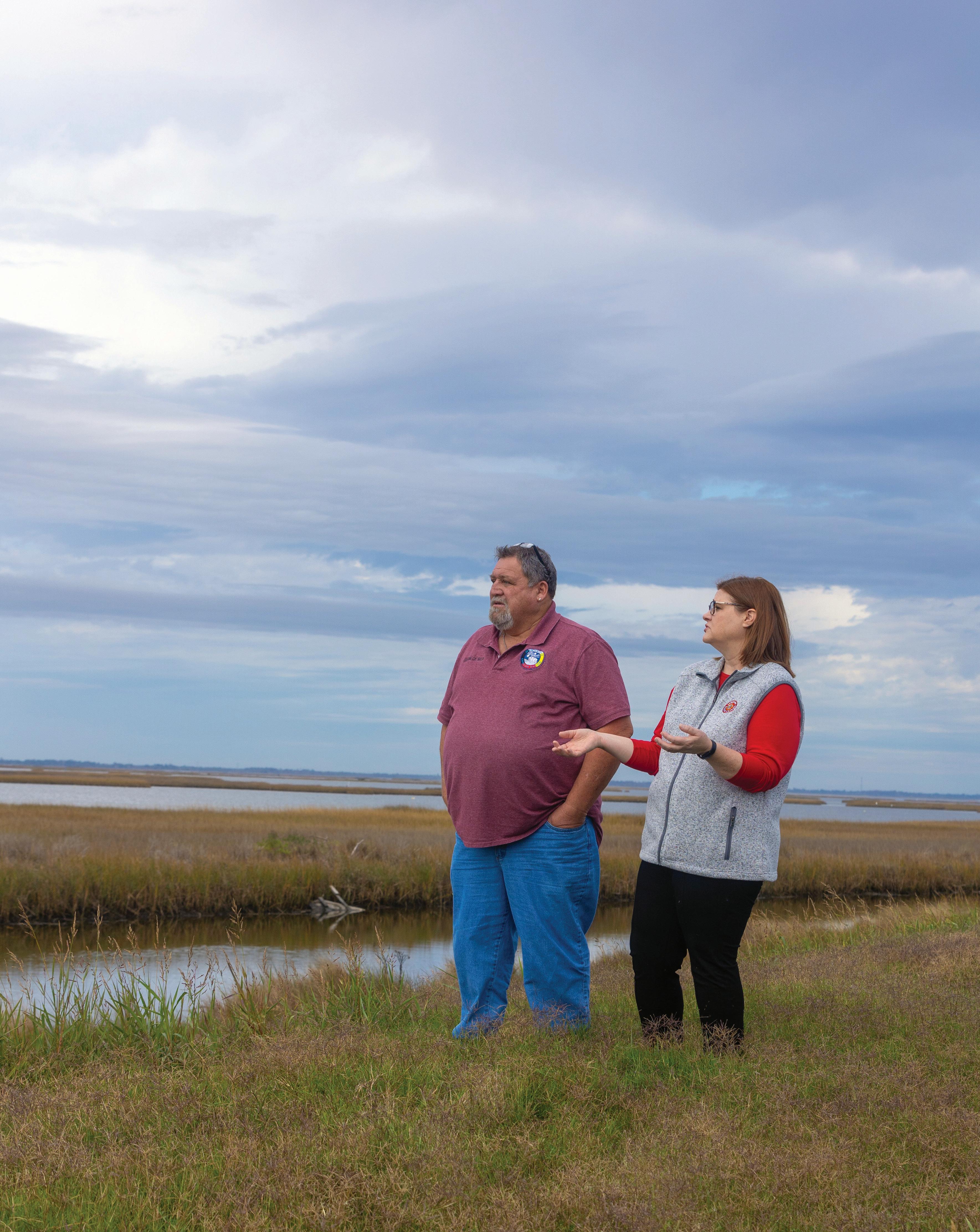
GRANT EXPANDS RESEARCH’S REACH
The Gulf Research Program of the National Academies of Sciences, Engineering, and Medicine recently named Dr. Heather Stone among five early-career research fellows for its Education Research track. Stone earned the fellowship based on several research projects, including work related to Isle de Jean Charles. She plans to use a portion of the fellowship’s $76,000 award on a virtual reality project for K-12 students.
Stone will lead College of Education & Human Development students in creating lesson plans to teach K-12 students about Isle de Jean Charles via virtual reality. Younger students wearing headsets will be able to navigate a virtual representation of the island while hearing recordings of members of the Jean Charles Choctaw Nation as they talk about their ancestral home, its history, and their customs and traditions.
Deme Naquin and Dr. Heather Stone look out over a stretch of marsh that was once solid ground.
RESEARCHERS ENERGIZING LOUISIANA
The University of Louisiana at Lafayette is fueling the state’s energy future.
Backed by a $160 million National Science Foundation grant – the largest and most competitive grant the agency has ever awarded – an interdisciplinary team of UL Lafayette researchers is working with colleagues at other state colleges and universities and with industry partners to invigorate Louisiana’s energy landscape. Among the goals of the NSF Engines grant: fostering job growth, creating innovative solutions and nurturing a skilled workforce to confront energy challenges at home and around the globe.
The Future Use of Energy in Louisiana, or FUEL, grant provides “opportunities to expand and strengthen both University and industry collaborations, conduct use-inspired research and development, technology commercialization and workforce development,” said Dr. Jonathan Raush, principal investigator for UL Lafayette on the grant and associate professor of mechanical engineering. The project will focus on issues such as development of an industrial hydrogen economy, water management, energy efficiency and sustainable manufacturing. “Working collaboratively, the execution of these programs will help move Louisiana to be the global R&D leader for solving energy-related challenges,” Raush said.
The grant enables the University to leverage over seven decades of partnerships with the oil and gas industry, noted Dr. Ramesh Kolluru, vice president for Research, Innovation and Economic Development. “Over the past 20 years, the
FACULTY AUTHORS FROM THE BOOKSHELF
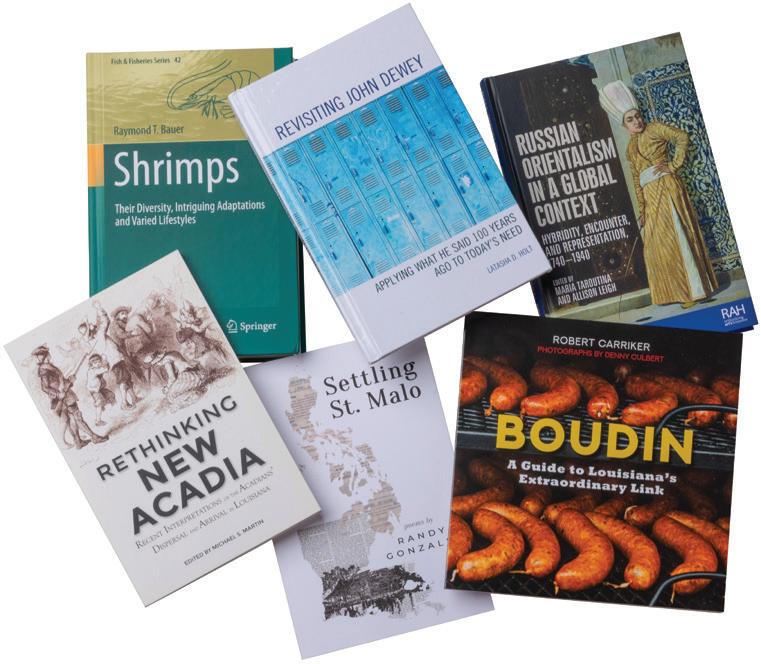
Decapod shrimps are nutritious and tasty. However, as Dr. Raymond T. Bauer, an emeritus professor of biology, shows in Shrimps, the crustaceans are amazingly diverse in size, shape, color, behavior and natural history, and are key ecological components of marine and freshwater habitats. From Springer.
Now in its second edition, Boudin: A Guide to Louisiana’s Extraordinary Link slices into the food’s history and mystique. The update features new photography, historic and modern recipes, and the story of the birth of the boudin king cake.
Dr. Robert Carriker, a professor of history, is the book’s author. From UL Press.

University has diversified its energy-related research and academic programs to include biofuels, solar, carbon capture and storage, blue and green hydrogen, EV and battery technologies as well as innovative energy materials resulting in significant economic development and technological successes. Our ‘all-of-the-above’ energy management strategy derives from a deep commitment to ensuring the nation’s energy dominance and energy security.”
The University has more than 55 faculty members involved in energy-related research, development and outreach, and is working with more than 30 private companies.
Dr. Kumer Das, assistant vice president of Research and Innovation, Noah Bergeron, associate director for the Office of Innovation Management, and Dr. Barbara Marchetti, an instructor in the Department of Chemistry, are co-principal investigators for the FUEL grant.
Partners include the Louisiana Department of Natural Resources, the Louisiana Board of Regents, the Baton Rouge Area Chamber, Greater New Orleans Inc., ExxonMobil, Shell and Baker Hughes.
Settling St. Malo transports readers to a time when Louisiana had the nation’s largest Filipino population. Dr. Randy Gonzales, an associate professor of English, delivers a collection of poems whose substance, language and rhythms are informed by oral histories, diaries, letters and other primary materials. From UL Press.
John Dewey, one of history’s greatest educational philosophers, warned over a century ago that American education needed a reset. Revisiting John Dewey considers his arguments against the backdrop of the current educational system and challenges readers’ assumptions about what teachers and students face in today’s classrooms. Dr. Latasha Holt, the book’s author, is an assistant professor of education. From Rowman & Littlefield.
Russian Orientalism in a Global Context explores how Russia’s historic relationship with Asia was represented in architecture and in fine, decorative and performing arts from the mid-18th century through the beginning of Soviet rule. Dr. Allison Leigh is among the book’s editors. She is an assistant professor of art history. From Manchester University Press.
Rethinking New Acadia presents fresh ways of thinking about the dispersal of the Acadians and their arrival in southwestern Louisiana in the mid-1700s. Among the book’s essays are examinations of their relationships with the land and waterways of their new home and their interactions with the region’s native and enslaved peoples. Dr. Michael S. Martin, a professor of history, is the book’s editor. From UL Press.
6 LA LOUISIANE | SPRING 2024
HISTORIC GRANT
VIRTUAL REALITY PUTS HEALTH CARE’S FUTURE IN FOCUS
BY MARIE ELIZABETH OLIVER
Linh Tran faced an unexpected challenge in her community nursing course when her instructor brought her class to a low-income housing development to administer complimentary wellness checks. Getting the residents’ permission to test their vital signs and blood pressure didn’t take much convincing, but the students also needed to evaluate patients’ living spaces. Tran’s patient didn’t have time for a walk-through, and she eventually had to tag along with one of her classmates to complete the requirement.
The process revealed a problem that persists in health care training. Realworld practice is crucial but creating equitable experiences for students can prove difficult. Obstacles like patient buy-in and safety play a major role. For students and faculty in the LHC Group • Myers School of Nursing in the College of Nursing & Health Sciences at UL Lafayette, virtual reality presents an attractive alternative. Technology can provide realistic experiences without relying solely on people’s goodwill. It’s going to be the future, they said, and nurses learn by doing.
“We research about how we (as humans) interact with computers,” said Salazar. “So, we have to have psychology involved in our research.”
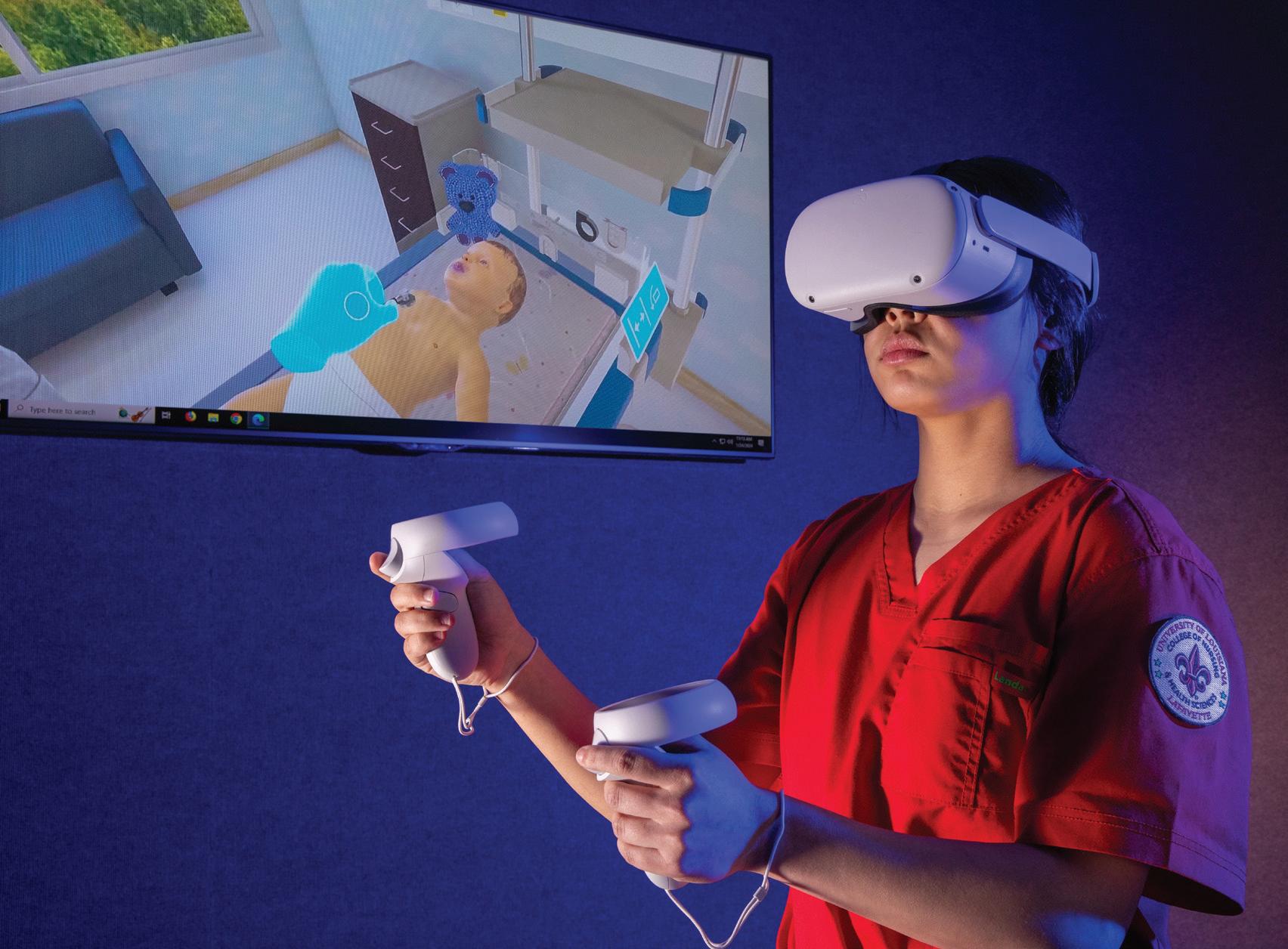
Nursing students can practice evaluating a newborn’s vital signs in the college’s new VR lab.
The School of Nursing had the opportunity to put this to the test, thanks to a grant from the Advance Student Research Experience. Nursing faculty members collaborated with colleagues in the Department of Psychology in the College of Liberal Arts and School of Computing & Informatics in the Ray P. Authement College of Sciences to conduct a studentled research project that used virtual reality to simulate a home visit, like the one Tran and her classmates conducted. Psychology professor Dr. Hung-Chu Lin served as the project’s principal investigator. She said she was thrilled to expand her virtual reality research, especially with undergraduates and her colleagues in nursing and computer science.
“We need people coming from different perspectives,” said Lin. “Not only their knowledge, but also their real technical support, to be able to do things like this.”
Dr. Arun K. Kulshreshth, director of the Human-Computer Interaction Laboratory and an associate professor in the School of Computing & Informatics, helped the nursing school adapt opensource software from the University of Wisconsin-Madison and purchase virtual reality headsets and computers. Roberto Salazar, a doctoral student in Kulshreshth’s lab, customized the program so that when students put on the VR headsets, they could explore the interior of a home and identify potential hazards. The research team gave students the opportunity to participate in the virtual reality simulation, then evaluate their experiences. Salazar said working with the psychology department to conduct the experiment opened his eyes to the value of integrating their research.
Tran, who accepted a job in the neurology department at Duke University Hospital in North Carolina after her graduation in December, participated in the study as a student researcher and presented the team’s findings at the UL Lafayette Undergraduate Research Conference. She said the experience helped confirm her desire to pursue a graduate degree in nursing. “If you have a group of people from multiple disciplines, you can create something wonderful,” said Tran.
Lin, Kulshreshth and Dr. Michael Hebert, then an instructor in the School of Nursing, published an article featuring the results of their mixed-methods study in the Journal of Community Health Nursing. Hebert said this project gave them all a taste of what was possible. “There are so many things that we are looking at as a team. We know we’re going to have more and more that we can test. You get all those people together in one room – it’s powerful.”
Advance aims to increase student productivity and success through engagement in mentored research, innovative projects and creative endeavors. As part of the Student Center for Research, Creativity and Scholarship, its goal is to provide research opportunities for all undergraduate students.
LA LOUISIANE | SPRING 2024 7
INTERDISCIPLINARY RESEARCH
DOUG
DUGAS
MAISON D’ETRE Center for Louisiana Studies fulfills destiny at the Roy House
BY MARIE ELIZABETH OLIVER
It’s two weeks before Christmas and the J. Arthur Roy House could easily pass as the set of a Hallmark movie. Evergreen garlands, wreaths and jaunty crimson bows drip from its 122-year-old Queen Anne double balcony. Inside the vestibule, a towering cypress staircase creates the ideal backdrop for a romantic meet cute. But something else is playing out here today – an equally charming reunion between old friends.
Dr. Barry Ancelet and Dr. Vaughan Baker are founding members of the Center for Louisiana Studies. They met in the 1970s as members of an academic cohort who cultivated what is now an internationally recognized hub of scholarship within the College of Liberal Arts at the University of Louisiana at Lafayette. “The Center,” as they affectionately call it, is
celebrating the final days of its 50th year. I’m here to learn how it all got started. But first, they have a question.
“Do you know about the Merovingians?”
I consider fibbing, then shake my head sheepishly at the professor emeritus of Francophone studies and the former head of the Department of History and Geography.
Instantly, they’re in lecture mode. The Merovingians, referred to by some as the first kings of France, “were a bit maligned,” said Ancelet. “The do-nothing kings,” chimed in Baker, explaining their reputation as figureheads, hidden away except for ceremonial occasions. This reference is important, they told me, because it speaks to the Center’s humble origins, tucked behind a double glass wall in a tiny room on the third floor of Edith Garland Dupré Library.
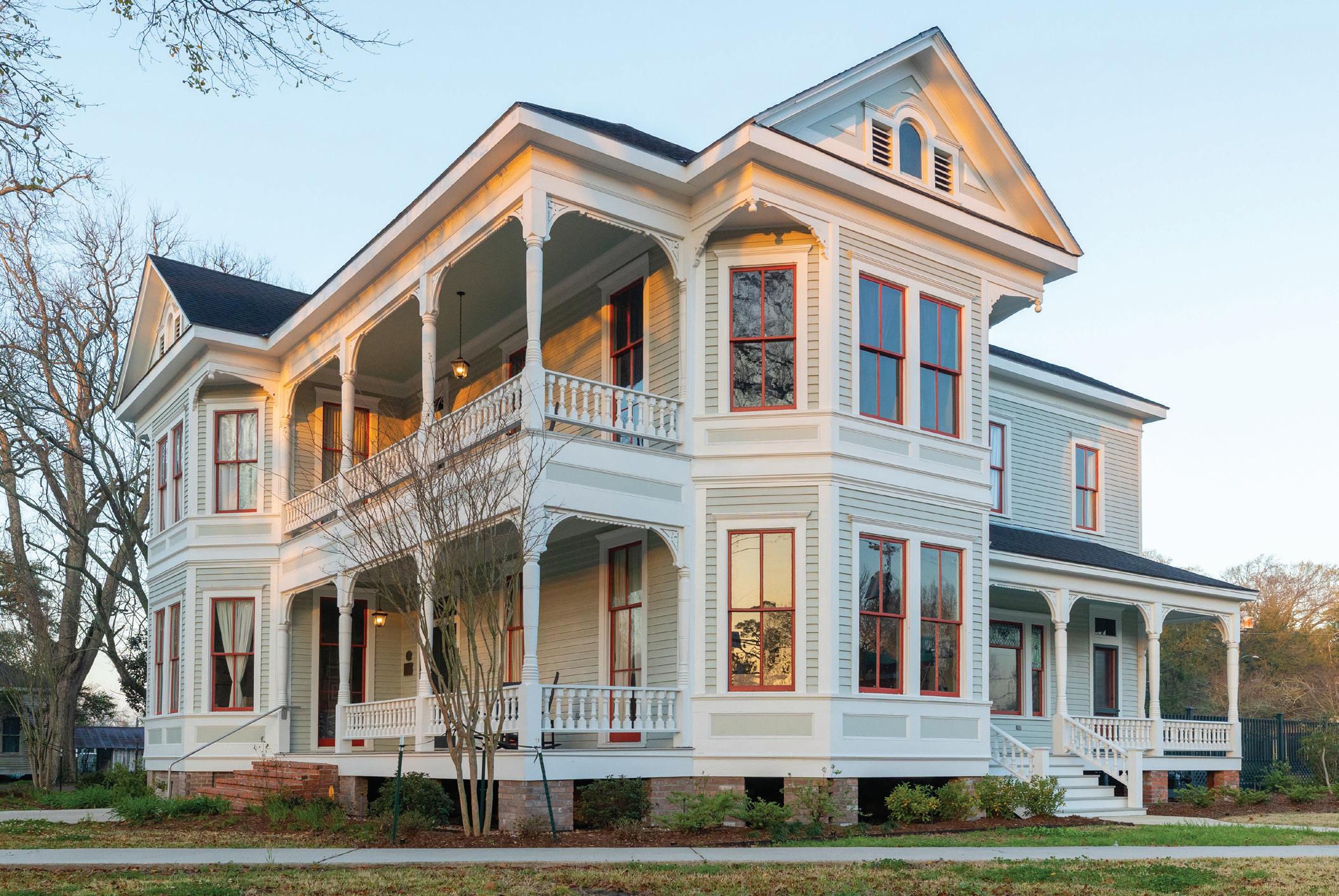
8 LA LOUISIANE | SPRING 2024
Lafayette architect Scott Chappuis and designer Rita Durio contributed their expertise to the historic preservation of the Roy House.
DOUG DUGAS
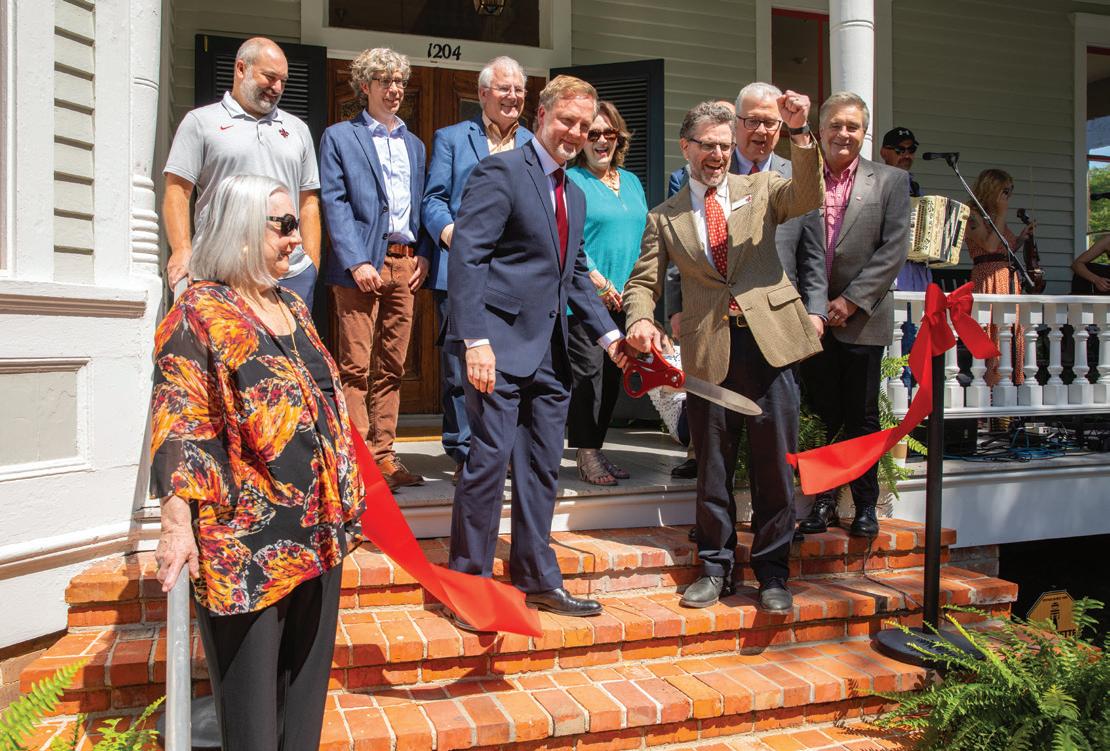
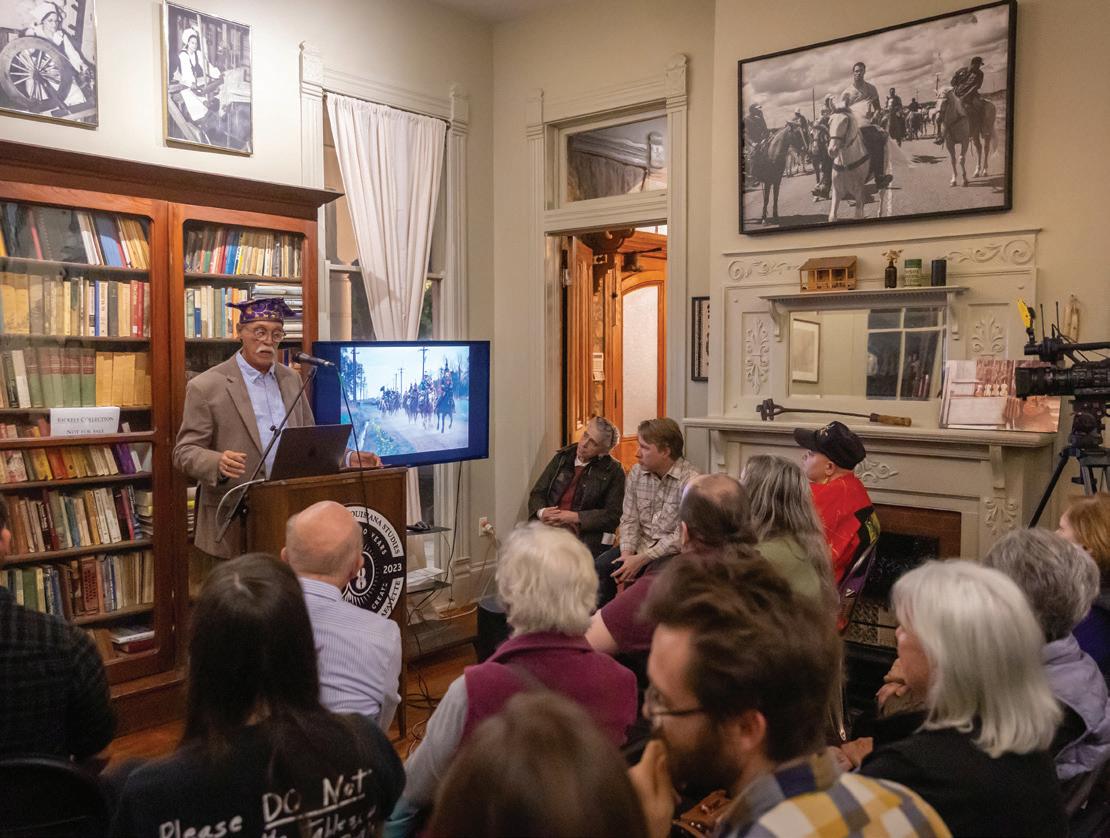
That location couldn’t be further (figuratively) from the Roy House, the historic landmark across campus. The Center’s new headquarters sits prominently at the buzzing intersection of Johnston Street and University Avenue. After an approximately $1.5 million, multiyear restoration campaign, shepherded across the finish line by the Center’s current director Dr. Joshua Caffery with support from private donors and a grant from the National Endowment for the Humanities, the oldest building on campus has been reborn as a beacon for Louisiana culture.
The alchemy that originally manifested this vision came together, like most good things in south Louisiana, over rice. As Ancelet and Baker tell it, the Center’s founding director, Dr. Glenn Conrad, convened a crew of scholars from multiple disciplines for reoccurring roundtable discussions. These meetings evolved organically into salon-style dinner parties, anchored by Ancelet’s smothered wild game gravy. Baker attributed the Center’s early academic achievements to this natural social camaraderie and a shared belief in the power of stories lurking in their own backyard.
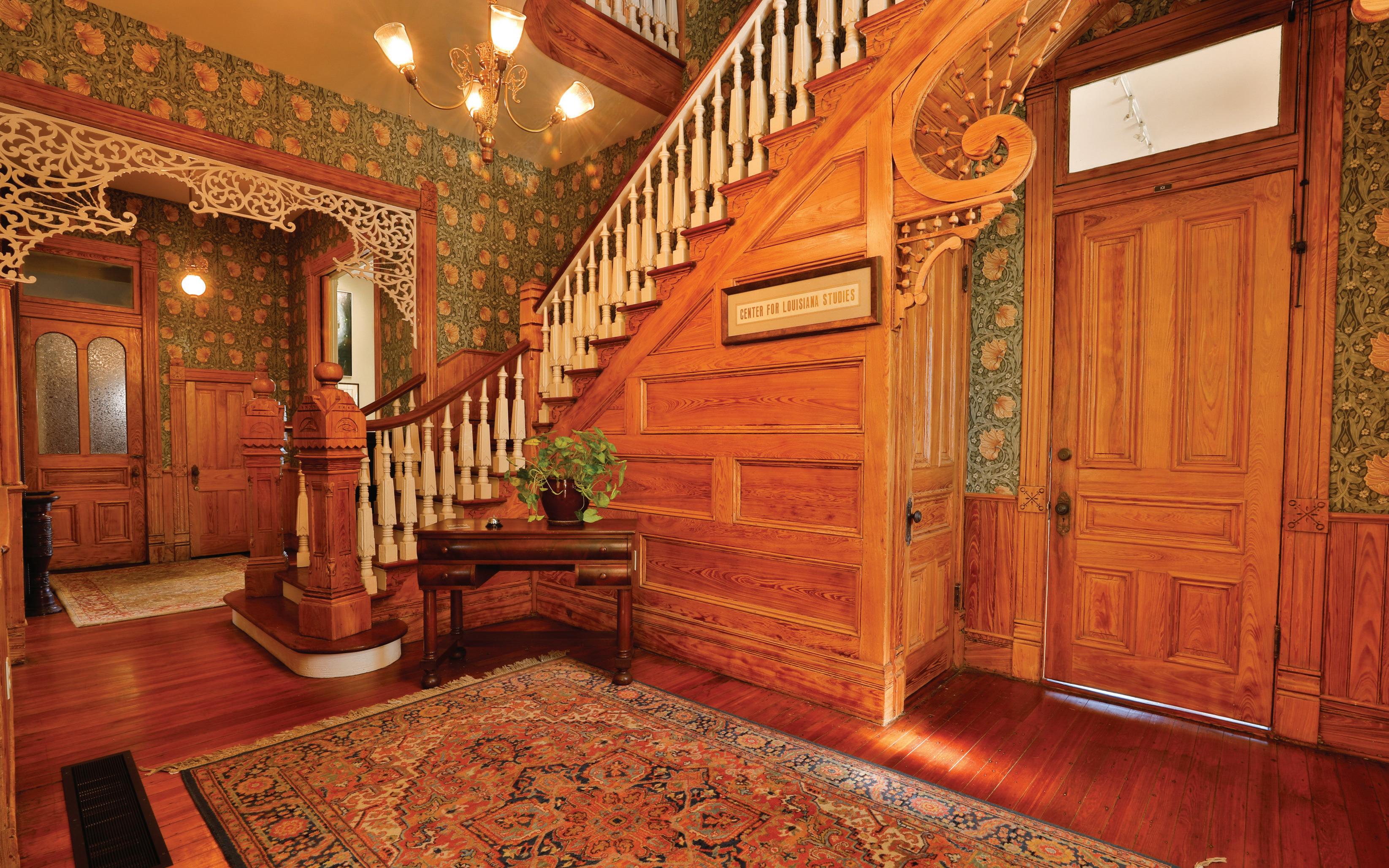
LA LOUISIANE | SPRING 2024 9
The Roy House’s renovation included restoring the Eastlake-style staircase and foyer woodwork, all built from Louisiana cypress.
The Roy House’s ribbon-cutting ceremony in May 2023. From left: Dr. Vaughan Baker, Scott Hebert, Scott Chappuis, Robert “Popie” Billeaud, Dr. Joshua Caffery, Rita Durio, Dr. Jordan Kellman, Dr. Joseph Savoie and John Blohm.
Dr. Barry Ancelet hosts a community workshop on traditional Courir de Mardi Gras songs at the Roy House.
DOUG DUGAS
DOUG DUGAS
DOUG DUGAS
But blazing a new path within the University took some elbow grease. The cadre privately called themselves the “Order of the Merovingians” as a cheeky nod to the growing pains – and the physical and scholarly isolation – they felt in the beginning.
“What we were doing on the one hand was perceived as provincial, but what those folks hadn’t factored in was the fact that the universe is composed of an infinity of localities. You can do a really good job at this because you’re here and you’re in it, and you have access to it. Why wouldn’t you do that?” said Ancelet. “Why would we go off to South Africa and try to understand apartheid? That wasn’t our thing. This was our thing.”
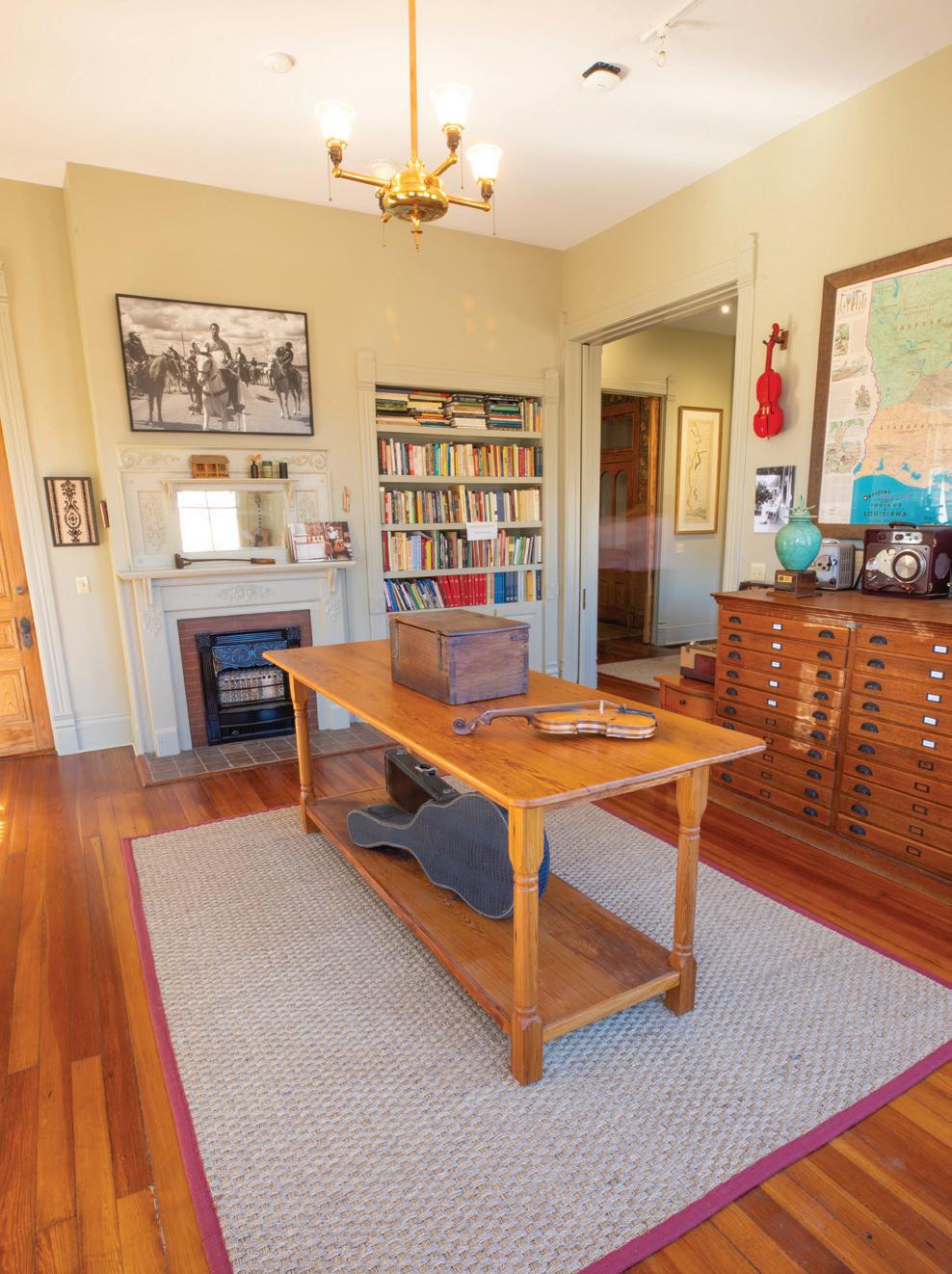
The “this” he’s referring to could fill an entire section of a library, or a bookstore, as evidenced by the stacks of bound material for sale from UL Press surrounding us in the Roy House parlor. It’s everything we hold most sacred: from our
Visitors can access the center’s archives in the Roy House’s reading and listening room.
songs, recipes, photographs, traditions, folklore and histories to the stories of resilience and unsung heroes that define our distinct brand of Southern culture. The Center preserved these in print. It also brought them to life in festivals, concerts, albums, radio programs, symposiums and community events. This outreach remains central to the Center’s mission.
“It came out of that team effort,” said Baker. “It took academe out of the ivory tower and into the streets. And it was amazing for all of us on both sides, the people who were experiencing it, and those of us who were producing it. It redefined Louisiana studies is what it did.”
The Merovingians moniker didn’t last for long as Ancelet, Baker and Conrad, along with their peers, Dr. Carl Brasseaux, Dr. Mathé Allain and Dr. Amos Simpson, began receiving widespread recognition for their scholarship. They renamed themselves the Order of the
The first-floor bookshop features all current UL Press titles, as well as map prints and goods from local artisans.
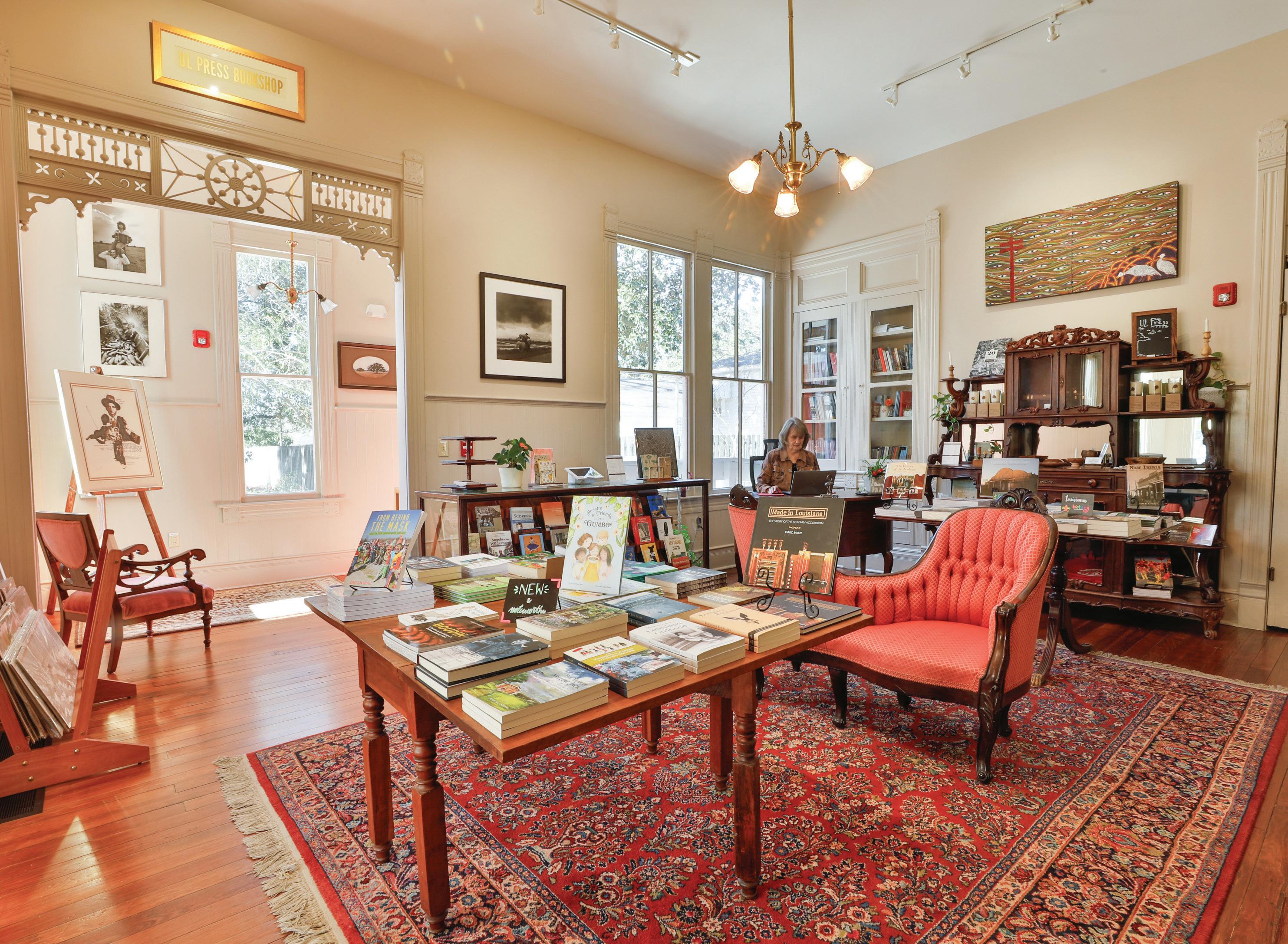 DOUG DUGAS
DOUG DUGAS
DOUG DUGAS
DOUG DUGAS

Palmetto, in honor of the native evergreen known for its adaptability and vigorous growth. “The University administration came to really appreciate seriously the work that was being done here,” said Ancelet, referring to former President Dr. Ray P. Authement. “He saw the impact of it.”
This support led to the Center’s physical expansion on the third floor of the library to showcase its growing archives. In addition to the acquisition of historical documents and other primary materials, field recordings became a key ingredient to the collection. Ancelet said these preservation efforts widened resources available for future researchers. Baker said reaching beyond documents allowed the Center to capture and tell a more inclusive story about the cultures of Louisiana. “What happened with folklore, and with women’s studies and African American studies – you can’t use traditional sources, because they are left out,” said Baker. “So, you have to find new source material.”
Fast forward a few decades, and the Center boasts the world’s largest collection of Cajun and Creole primary source material. This diverse collection of oral histories, field recordings and visuals from all 64 Louisiana parishes remains in the Center’s library archive. The move to the Roy House, however, fulfilled a long-standing vision to make the work more accessible. The house isn’t just office space – its public face matches its public mission. The Roy House serves as an interactive community center, research destination and bookstore. Peek around its ornate moldings today and you’ll find an archivist, research coordinator, program director, UL Press staff and graduate students who are eager to share their expertise.
Camille Harrington is earning her master’s degree in French while working as a graduate assistant at the Center. Her passion for her Cajun heritage grew out of conversations with her grandfather around the kitchen table. She said because of its origins as a family home, the Roy House facilitates a similar intimacy for cultural discussions – which is especially meaningful to her generation.
“It makes our work accessible,” said Harrington. “I think there’s going to be a lot more interaction between the community and the Center.”
Harrington gives tours of the Roy House and said she loves explaining to guests how the original owner of the house, J. Arthur Roy, chose the home’s location because of its proximity to an institute of higher learning. Roy was a Lafayette businessman and early supporter of what was then Southwestern Louisiana Industrial Institute at the turn of the last century. He completed the house in 1901, around the same time the campus was being built. “This house has always watched over the development of the University,” said Harrington. “There’s just something kind of sweet about that.”
Caffery said since opening in 2023, the Roy House has received visitors from around Acadiana who are thrilled to see the old house restored to its former glory. It has also hosted international scholars and recording artists who come to explore the Center’s world-class archive of Louisiana French songs. He said the appreciation for its architectural and musical preservation speaks to the Center’s broader mission. A published folklorist, poet and Grammynominated musician, Caffery said he deeply values the University’s role as an innovator, but also as a caretaker.
“Sometimes you build something like a beautiful house or a beautiful song, and you’re not necessarily going to improve on that,” said Caffery. “So, you might as well find a way to keep it around.”
Now it’s two weeks before Mardi Gras, and Ancelet has returned to the Roy House. He’s donned a purple, medieval-style professor’s cap to lecture to a standing-room-only crowd. The Center has recently revived its “In Your Own Backyard Workshops” for the first time in 10 years, and this presentation on south Louisiana Mardi Gras songs has attracted an infant, octogenarians and every generation in between. The presentation culminates with a raucous singalong led by masked revelers crooning en français. The Merovingians’ legacy lives on.
LA LOUISIANE | SPRING 2024 11
French graduate student, Camille Harrington, left, has witnessed the architecture of the Roy House “put people at ease.”
DOUG DUGAS
SAY HELLO TO CAMPUS’ MOST IN-DEMAND MODERN LANGUAGE
Apinkie, index finger and thumb raised in unison means, “I love you.”
It’s a phrase in American Sign Language almost everyone understands. It’s also become a ubiquitous symbol of Ragin’ Cajuns pride. The same fingers that represent “ILY” in the ASL alphabet outline the shape of “UL.”
Leah Dawsey embodies these overlapping realities. Dawsey grew up as part of a vibrant, multigenerational Deaf community in Lafayette, where many of her friends have Usher Syndrome. The genetic condition is linked to hearing loss at birth and eventual vision loss. Acadiana has one of the nation’s highest concentrations of Usher Syndrome.
“People know so much about Cajuns, but they don’t realize that there’s a subcategory of Cajuns who are here, who are us,” Dawsey signed. Dawsey communicates primarily through ASL, and this interview was conducted through her interpreter.


Dawsey earned a bachelor’s degree in history from the University of Louisiana at Lafayette and went on to receive her master’s degree in Deaf studies from Gallaudet University in Washington, D.C. Now as a fulltime instructor in the Department of Communicative Disorders at UL Lafayette, she’s teaching and designing new courses to meet a growing demand from students who choose ASL as their modern language requirement. They can’t approve the override requests fast enough, said department head Dr. Ryan Nelson. “I think the fact that there are 14 sections and still a waitlist says a lot.”
This fall, the department will offer the first ASL minor in the University’s history. It comes at a time when ASL is enjoying increased visibility across pop culture: from the film CODA receiving Best Picture and Best Actor honors at the 2021 Academy Awards, to high-profile sign language performances at the Super Bowl, representation on Netflix shows and regularly trending videos across social media platforms like TikTok. “Our whole major is about inclusiveness and diversity and giving voice to the voiceless,”
BY MARIE ELIZABETH OLIVER
said Nelson. “We’re creating more opportunities for people to have ways to represent the world.”
Katie Potier, a doctoral student in applied language and speech sciences, works alongside Dawsey as a full-time ASL instructor. Sitting in an empty classroom on the second floor of Burke-Hawthorne Hall a few weeks before a new semester begins, the pair emphasized that teaching ASL to a new generation is crucial to preserving Deaf culture and essential for providing equitable language access to a community whose needs often get overlooked.
As a former Deaf education teacher in Texas and Louisiana, Potier said she saw a decline in ASL for multiple reasons, including the misconception that teaching children to sign would prevent them from learning to speak and read in English. However, she has seen the pendulum begin to swing in the opposite direction. Potier said there is now a shift in the field of Deaf education to a bilingualbicultural teaching philosophy, where ASL is the foundational language of communication. English is taught through writing, like other foreign language immersion programs. She said this approach has gained acceptance.
“The research supports it,” said Potier. “So hopefully that keeps going so that we don’t have that huge gap in language and literacy skills.”
Potier and Dawsey envision their ASL and Deaf studies curriculum becoming a pipeline for future teachers for the Deaf and hard-of-hearing communities. It’s also a gateway for training certified interpreters and speech therapists, who can use their ASL fluency to support more inclusive language environments in education and beyond. Dawsey said in her experience, there have never been enough qualified interpreters to meet the demand in the Lafayette area.
“They can be the support for the upcoming Deaf community,” signed Dawsey.
Learn more about the ASL minor at louisiana.edu/lalouisiane.
12 LA LOUISIANE | SPRING 2024
LOVE LANGUAGE
Instructor Leah Dawsey leads a counting lesson in American Sign Language.
ASL instructors and students host a summer children’s camp. To learn more visit cajunscamps.com.
DOUG DUGAS
DOUG DUGAS
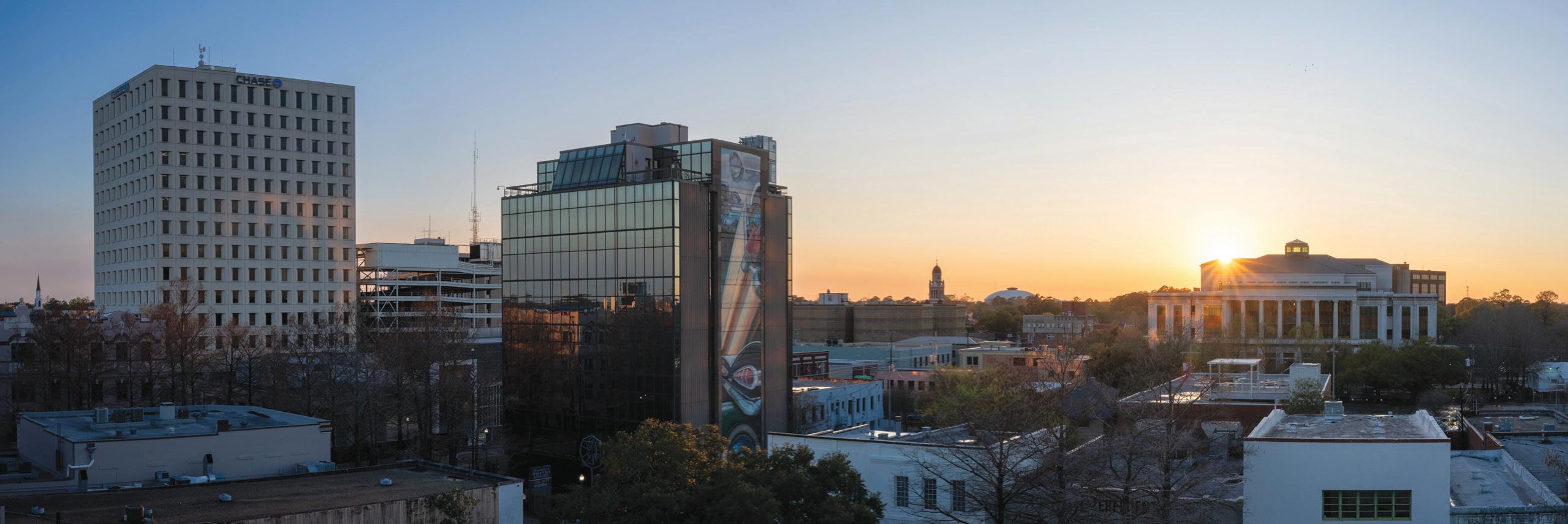
REPORT DETAILS UNIVERSITY’S IMPRESSIVE IMPACT
$2.7 BILLION.
That’s the commanding statewide impact the University of Louisiana at Lafayette had in 2021-2022, the topline results of a recent comprehensive analysis that demonstrate the University’s role as a major economic force for the region and beyond.
Among the report’s findings: UL Lafayette helped support 34,610 jobs, or one of every 78 jobs in the state. In Acadiana alone, the University’s economic influence reached $1.7 billion, sustaining over 25,100 jobs, or one out of every 15 jobs in the region.
These findings are from an independent economic analysis conducted by Lightcast, a global consulting firm known for assessing the economic impact of educational institutions.
Dr. Joseph Savoie, UL Lafayette president, commissioned the study. “The report represents our strength as a significant contributor to the economic health of the region and state, and underscores opportunities for increasing our contributions. It also indicates that state funds provided to the University are investments that pay measurable dividends,” he said.
“The report also signals that we are better positioned than at any time in our history to grow exponentially in a range of areas, including scholarship, research and collaboration with outside entities,” added Dr. Ramesh Kolluru, vice president for Research, Innovation and Economic Development.
The report revealed compelling insights, including alumni’s substantial $2.2 billion contribution to the state economy, projected


increased lifetime earnings of $1.1 billion for UL Lafayette students, and research spending generating an added income of $141.7 million for Louisiana.
Additionally, the University’s operational spending and community service infused millions into the state economy.
Access the economic impact report at louisiana.edu/lalouisiane.


LA LOUISIANE | SPRING 2024 13
Operations Spending Impact $111.1
Research Spending Impact $141.7
Spin-off Company Impact $153.3
Visitor Spending Impact $1.4 million Student Spending Impact $31.1 million Volunteerism Impact $1.8 million Alumni Impact $2.2 billion TOTAL IMPACT $2.7 BILLION JOBS SUPPORTED 34,610
million
million
million
ECONOMIC ENGINE
PAUL KIEU
RADIO RENAISSANCE
Meet the students bringing KRVS back to its roots
Students filter into a conference room inside the KRVS studios for their weekly strategy meeting. The walls are adorned with old music posters and portraits featuring Louisiana musical legends like Clifton Chenier and Canray Fontenot. Their conversation ranges from brokendown cars to nostalgic songs and cat cafés, before quickly rounding back to station management. They are the faces of student radio broadcasting on KRVS 88.7 HD2, a new digital channel playing music curated by and for students.
The channel, dubbed KampusFM, hit the airwaves on Oct. 31, 2023, nearly four months after the anniversary of KRVS’ first broadcast 60 years before. When KRVS began broadcasting in 1963, it was student run, billing itself as the “strongest force on campus in building up the University school spirit.” Today, with a potential audience of thousands of University of Louisiana at Lafayette students plus a broader global audience through the NPR affiliate’s online platform, KampusFM is ready to carry that legacy to a new generation of listeners.
Listeners who tune into KampusFM on weekday mornings will likely hear the voice of Kaley Mestayer broadcasting from the station’s control room. Mestayer, a business management senior, is the rookie station’s first DJ and handles live spots during 15-minute breaks when students are changing classes. The rest of the programming is automated, running into the evening and overnight hours with pre-recorded service announcements by other student volunteers.
Part of what distinguishes KampusFM from a generic playlist is utility. Between a setlist featuring indie bands such as Pony Girl and K-pop stars such as Jungkook, Mestayer provides updates on student organization meetings and upcoming events on campus. According to Mestayer, keeping listeners current with what’s happening adds value to the station as a source of information to the student body. “We’ve kind of wrapped this whole concept
BY KADE PARKER
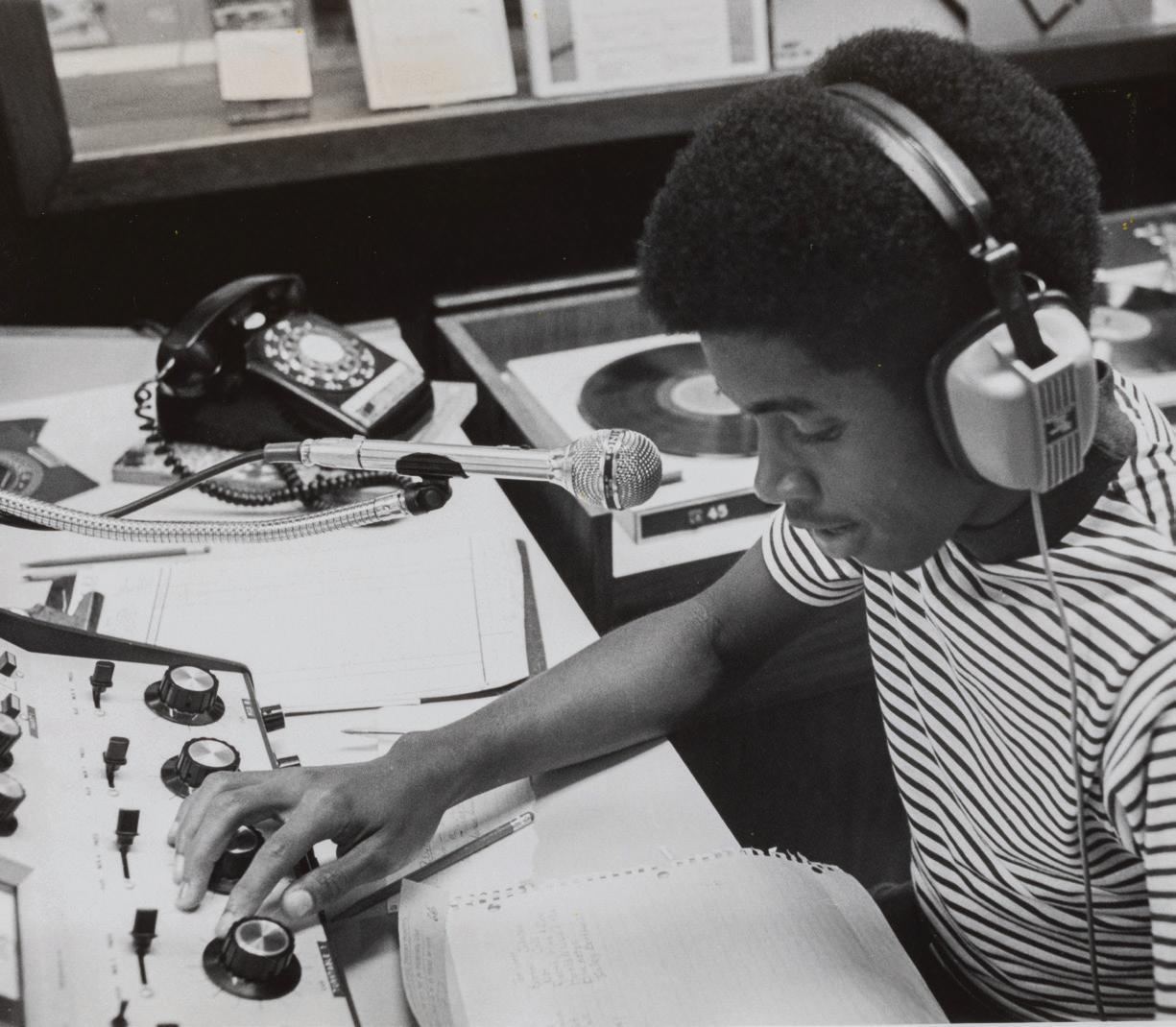

14 LA LOUISIANE | SPRING 2024
KampusFM members from left: Cathryn Battles, Chloe Matherne, Micah Thurman, Tamir Bryant, Ray Selle, Kaley Mestayer, Lucy Ortiz, Lane Hallum, Beth Harris and Adam Cortez.
Fred Jolivet adjusts audio levels in the KRVS studio in a 1977 L’Acadien photo.
SPECIAL
DOUG DUGAS
COLLECTIONS
around what people are doing all day instead of just blasting music at them indiscriminately, which I think is really cool,” said Mestayer.
KampusFM’s role as an “information pipeline” was part of Kris Wotipka’s vision when he laid the groundwork for the student station. Wotipka, lovingly referred to as the “Old Dude” by the students, is the director of operations for KRVS and a guiding force as the station gains its footing.
Tune into KampusFM on KRVS 88.7 HD2 on digital radio, KRVS.org or the KRVS app.
HD1 carries regular KRVS programming, while HD3 brings 24/7 news coverage from NPR.
Wotipka has been integral to KampusFM’s early launch but emphasized that the students retain creative and strategic control of the station. He said he’s impressed by how fast the students are adapting to running the station, exceeding the time frame of the station’s launch and early operation by a few months. “My whole goal for this was to plant some seeds, watch it develop, and then every once in a while, give it a little nudge here or there,” said Wotipka. “As soon as the students feel ownership in what they’re doing, then it’s personal, and they will fight for it.”
KRVS’ first broadcast 60 years ago was limited to 10 watts, covering an area that was barely able to reach the campus’ edge.
Now, the station broadcasts at 100,000 watts and, with the addition of the HD digital streams, can reach listeners worldwide. Technology has changed since that first broadcast six decades ago, but the station’s mission remains the same. Cheryl Devall, KRVS general manager, said this latest embodiment of student radio is an homage to the origins of KRVS. “It’s really a way to honor the way the station began,” said Devall. “I want people at UL Lafayette to know that we are here. We are here to serve, and we are committed to an educational mission on so many levels.”
KampusFM relies on a core group of student volunteers who handle marketing, graphic design, playlist curation and recruitment efforts. These students come from various majors and backgrounds and naturally fit into roles that best serve their strengths and talents.
Marketing senior Tamir Bryant, who contributes to the station’s promotional activities, said he appreciated the collaborative nature among his fellow volunteers. He said he’s fortunate to be a part of a great team. “We have an interesting group of people that would have never run across each other,” said Bryant. “I think that’s what’s kind of beautiful about it. I don’t know how I got this lucky.”

LA LOUISIANE | SPRING 2024 15
KampusFM DJ, Kaley Mestayer, takes notes before broadcasting her morning announcements.
TUNE IN
DOUG DUGAS
ICE AGE CULTURES REVEALED
A team led by UL Lafayette researchers has excavated thousands of Native American artifacts from a site in the Kisatchie National Forest in north central Louisiana that date to the end of the last Ice Age. Extensive laboratory analysis and research of the trove will enable researchers to make determinations about past cultures.
The fieldwork has already yielded a substantial discovery. The excavation was conducted at a floodplain terrace overlooking a creek in the forest, a site occupied over hundreds of generations by nomadic groups. Researchers uncovered the first evidence of a permanent structure in Kisatchie. That’s a considerable find, given just 4,000 sites among the national forest’s over 604,000 acres have been explored.
Dr. Mark Rees, a professor who leads UL Lafayette’s Louisiana Public Archaeology Lab, is principal investigator for a more than $700,000 U.S. Forest Service grant that’s funding the multiyear project.
GLOBAL
STUDENTS SHINE
The Southern Solar team of mechanical engineering students cruised the waters of the Mediterranean Sea off the French Riviera without stepping foot on a luxury liner. Their voyage came aboard a solar-powered watercraft the team designed and built in the Louisiana Solar Energy Lab.
The “Beausoleil” landed students Lelia Deville, Brennan Guarisco, Jordan Smith, Taylor Thistlethwaite and Claire Werther a berth in last year’s Monaco Energy Boat Challenge. Southern Solar became the first U.S. team to compete in the international event.
It didn’t disappoint, placing highly in races against 31 college and university teams from 21 countries. Team members also contributed to the international dialogue about sustainable boating.
The Monaco Energy Boat Challenge brings together boating industry leaders in one of the world’s smallest, yet wealthiest, countries. The focus is alternative energy solutions, and student contributions are key. Their small-scale crafts help inform and spur technology and development for everything from superyachts to pleasure boats.

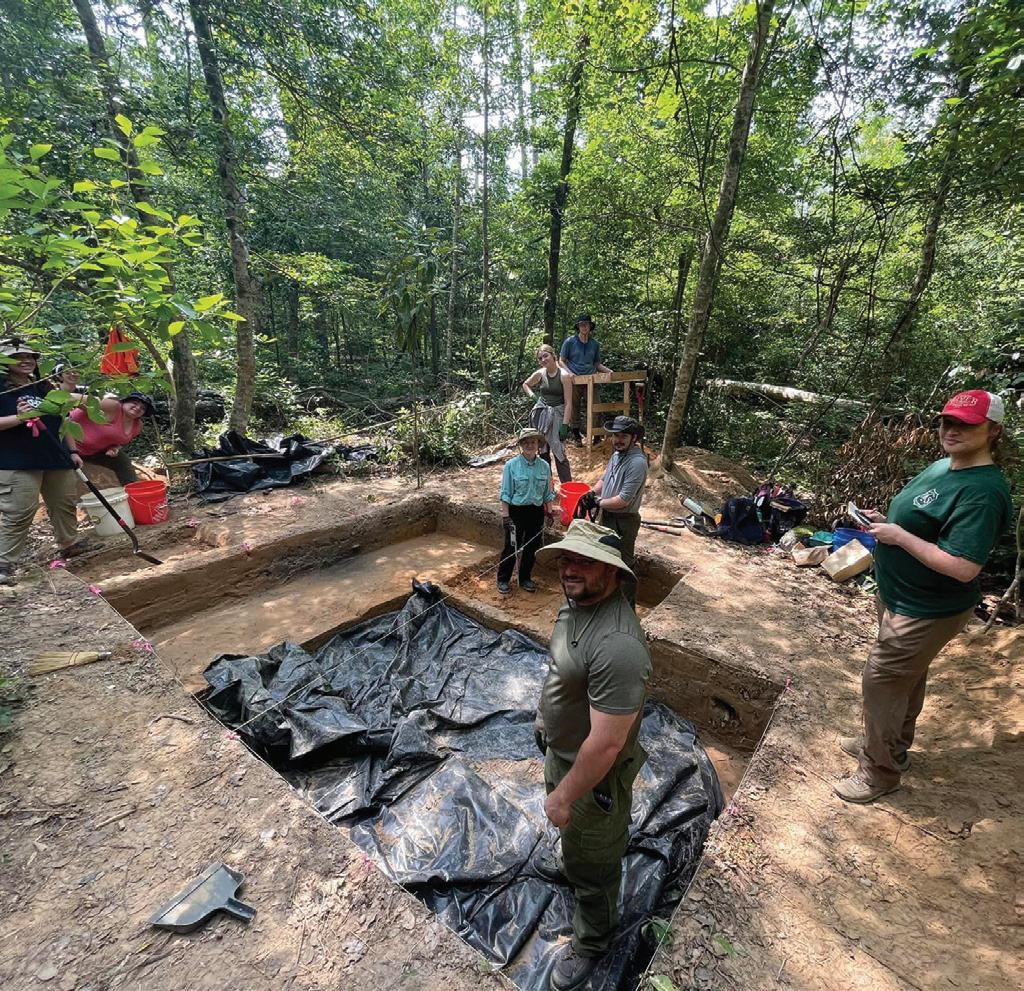
FAMILIAR
HEADING TO SPACE — AGAIN
Student researchers are creating a small satellite for a big mission. CAPE-4 will measure radiation levels in space to help NASA explore astronaut safety.
UL Lafayette’s Cajun Advanced Picosatellite Experience, or CAPE, team is among a select group chosen for the space agency’s CubeSat Launch Initiative. It enables students to conduct research in space.
Space is a familiar frontier for the multidisciplinary CAPE program, which the Department of Electrical and Computer Engineering coordinates. The CAPE-1 satellite in 2007 made the University the first in Louisiana whose students designed, built and launched a working satellite that orbited Earth. CAPE-2, in 2013, and CAPE-3, in 2021, followed.
NASA projects sending CAPE-4 into orbit sometime between 2024 and 2027. The satellite will be larger and designed differently than previous CAPE models. Readings from a neutron radiation detector, a plastic chip, and image sensors inside a modified smart phone camera will be beamed from space to the Nick Pugh Aerospace Electronics Research Laboratory, the CAPE team’s base on campus.

16 LA LOUISIANE | SPRING 2024
SOLAR COMPETITION
FRONTIER
FOREST FINDS
SUBMITTED
SUBMITTED PHOTO
DOUG DUGAS
PHOTO
LA LOUISIANE STUDENT EDITOR DIVES IN HEADFIRST
Katherine Frazer brings a passion for journalism and storytelling to her role as La Louisiane’s student editor for the Spring 2024 issue. She is a senior political science major pursuing a minor in journalism.
Frazer began her collegiate career at the Lafayette Parish School System’s Early College Academy, where she earned an associate degree before transferring to UL Lafayette. Thanks to that head start, Frazer will earn her bachelor’s degree in May – at age 19. She’ll then pursue a master’s degree at the Medill School of Journalism at Northwestern University in Illinois, one of the nation’s top journalism programs.
“I like writing. I love reading, and I like current events,” Frazer said. “When I got to college, it clicked that this is not only something I can do, but something that I would excel at.”
Frazer began her career as a news writer after enrolling at UL Lafayette. Her stories have appeared in The Current, a nonprofit newsroom; and Le Louisianais, run by Télé-Louisiane, an online news source that examines Louisiana’s culture. Among her many bylines in The Acadiana Advocate newspaper was a story that examined the experiences of Black students enrolled at the then-University of Southwestern Louisiana in the 1960s.
WRITER HAS THE RIGHT INGREDIENTS FOR SUCCESS
Kade Parker is editorial intern for La Louisiane. He is a senior majoring in mass communication with a concentration in journalism and a minor in English.
Parker joined La Louisiane in his last semester at the University of Louisiana at Lafayette. A Louisiana native, he showcases his love for food, arts and culture through his writing – and at home in the kitchen. Parker’s always on the hunt for new recipes and compelling stories, such as his profile of KRVS’ student radio revival in this issue of La Louisiane
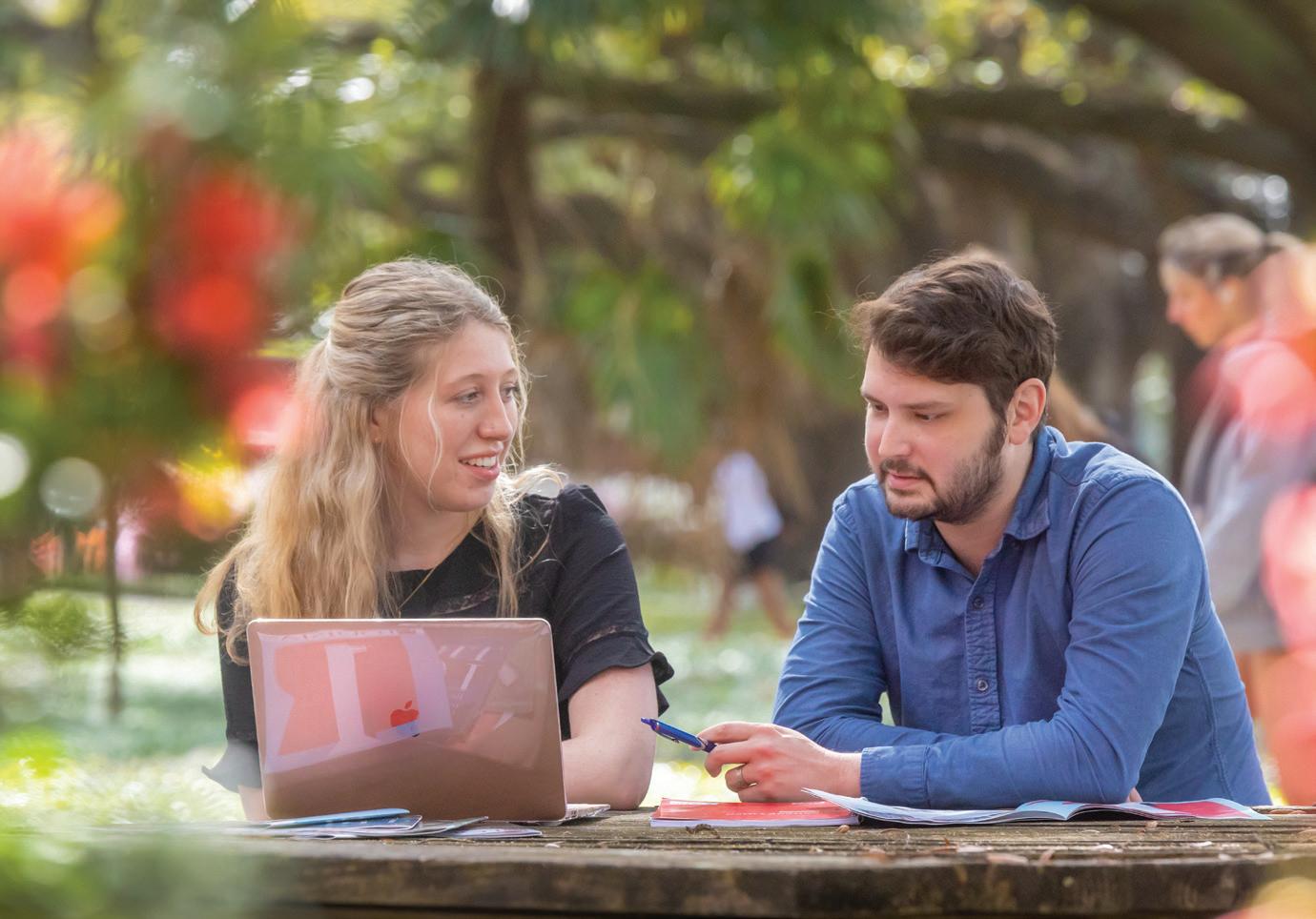
“Everybody has a story, you know,” Parker said. “It’s worth it to be able to tell it for them.”
In addition to his duties with the University magazine, Parker works as a videographer for UL Lafayette’s College of the Arts, filming and creating content to promote students and the college. Parker’s work has been featured in The Acadiana Advocate and Daily Iberian newspapers and in The Current, a nonprofit newsroom. He brings valuable multimedia experience to the La Louisiane team.
In this issue of La Louisiane, Frazer delves into University history again with a piece on Lagniappe Day, a time-honored tradition that turns 50 this year. Looking ahead, she said she hopes to one day pursue long-form investigative reporting for national publications such as The New Yorker
“Katherine is a gifted writer,” said Dr. James Savage, La Louisiane editor. “To find such natural talent in someone so young is unusual – but with this issue, the magazine is bringing the stories of two accomplished young professionals to its readers. Katherine and editorial intern Kade Parker are energetic and eager, and no doubt the future of journalism is safe in their capable, agile hands. We’re excited to feature their work in La Louisiane.”
Frazer’s résumé, with its mix of traditional and new media, reflects the evolution of journalism and mass communication. Reporters must be adaptable to meet their readers’ needs, Frazer said.
“It seems like now you’re expected to know how to do everything. It’s not just print. It’s not just broadcast,” Frazer said. “Younger journalists I’ve encountered are a little more adept at diving in headfirst.”
“Journalists today have to do everything,” Parker said. “You have to be able to take good photos, you have to be able to edit, and you have to write well. Having a background in videography is also helpful.”
His path to journalism was not linear. Before earning his associate degree, Parker considered a career in food content creation for social media. But news coverage of a recent presidential election changed his career trajectory.
“The political atmosphere was changing, and the role of a reporter was evolving in real time,” Parker said. “I realized the world needed more reporters.”
After Parker took an English class at South Louisiana Community College in Lafayette, a professor noted his strong communication skills and encouraged him to consider a career that involved writing. He began taking journalism courses after he enrolled at UL Lafayette to pursue a bachelor’s degree in mass communication.
Parker will complete his bachelor’s degree in May. He said he hopes to be a food writer, profiling new restaurants and chefs.
“Down here in Louisiana, we have a very special culture,” Parker said. “I feel like being a food journalist is a good way to export that culture to broader audiences.”
LA LOUISIANE | SPRING 2024 17
Katherine Frazer and Kade Parker discuss the Spring 2024 issue of La Louisiane
DOUG DUGAS
Celebrating
From the day of its founding, the University of Louisiana at Lafayette represented a belief in what was possible. Now 125 years later, we’re celebrating what we’ve accomplished — and anticipating the continued success that lies ahead.
This anniversary also marks an opportunity to honor the enduring connection we have to an institution that has given each of us — and this community — so much for so long.
Every “first” is a tribute to individuals who dedicated their lives to making a difference. Each milestone represents the impact of their vision on the state of Louisiana and beyond. Our history unites us with those who came before us and connects us to those who will carry our mission of service beyond our 125th year.
18 LA LOUISIANE | SPRING 2024
SERVICE. VISION. LEADERSHIP. LOUISIANA.
DESIGN BY COURTNEY JEFFRIES
1898
The Louisiana General Assembly adopted Act 162, creating SOUTHWESTERN LOUISIANA INDUSTRIAL INSTITUTE.


“
WE ARE NOT TO THINK OF THE INDUSTRIAL SCHOOL AS A TEMPORARY THING, FOR IT IS NOT. IT IS AN INSTITUTION FOR ALL TIME. A hundred years from now, it will be amongst our descendants, a hundred times more efficient. Its influence will have spread, and the parish of Lafayette will point with pride to the school, and honor the memory of those whose public spirit has built it.
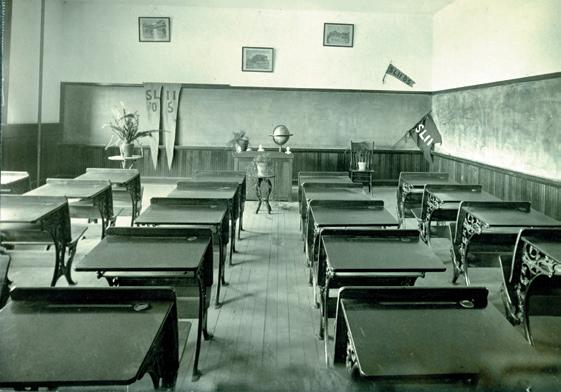
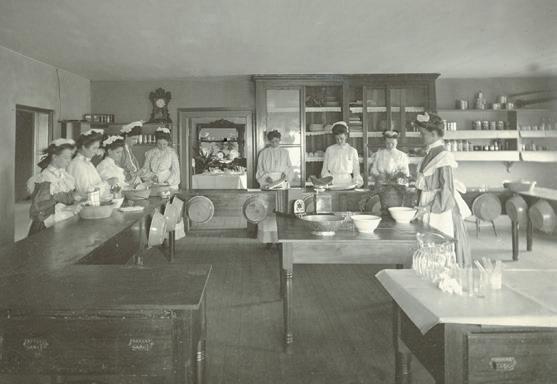


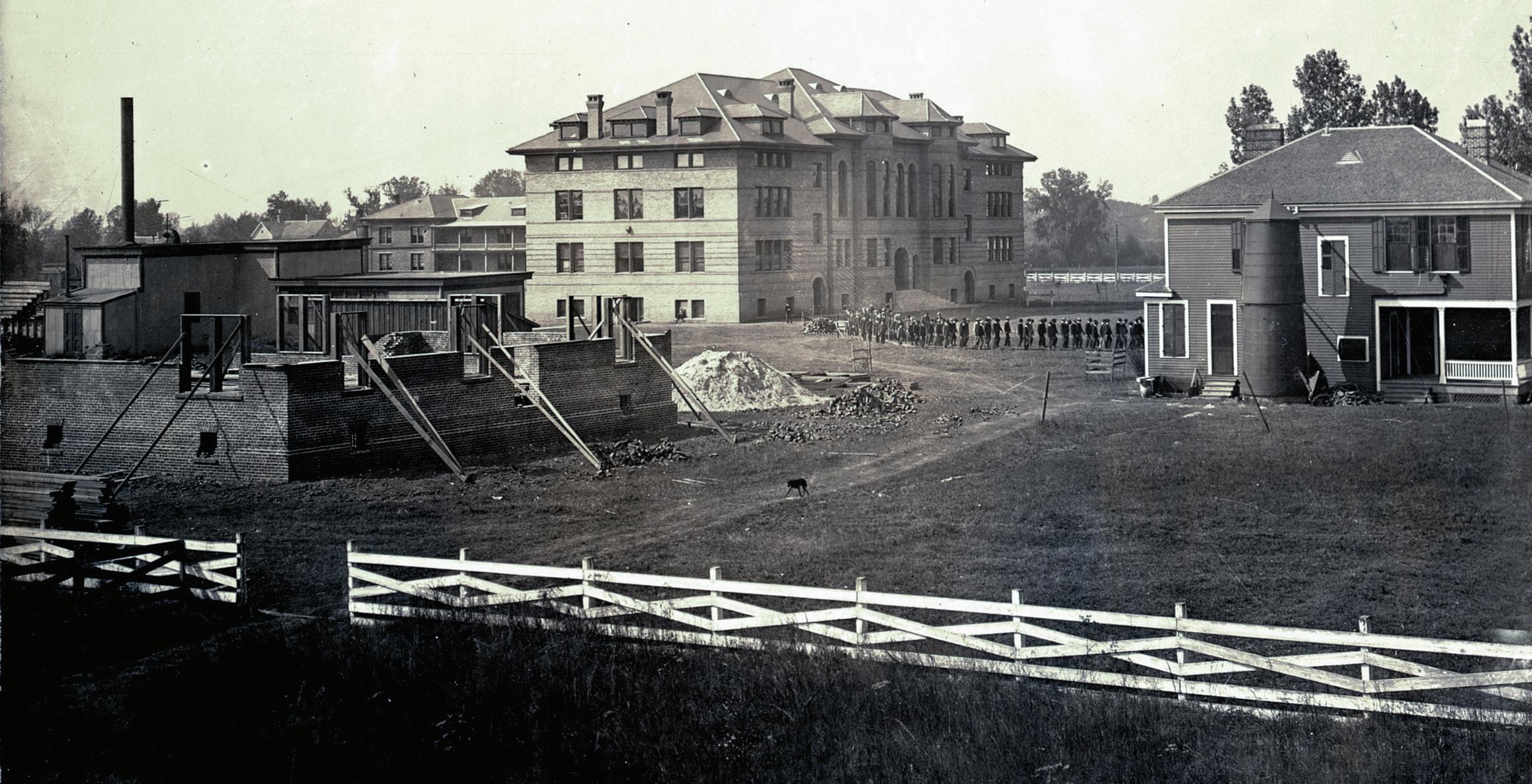 DeClouet Hall was under construction in 1903. The Main Building, later named Martin Hall, is in the background.
Lafayette Gazette, Sept. 16, 1899
A 1901 cooking class
One of the first of six classrooms
The Bread Club, 1913
A 1912 music ensemble
Sen. Robert Martin introduced legislation that created SLII. president of SLII. He served for 38 years.
DeClouet Hall was under construction in 1903. The Main Building, later named Martin Hall, is in the background.
Lafayette Gazette, Sept. 16, 1899
A 1901 cooking class
One of the first of six classrooms
The Bread Club, 1913
A 1912 music ensemble
Sen. Robert Martin introduced legislation that created SLII. president of SLII. He served for 38 years.
1903
“...when I was coming to school, a good deal of us rode down on horses or in buggies. We just hitched the mare outside a building and went on inside while the horse waited for class to be dismissed.”
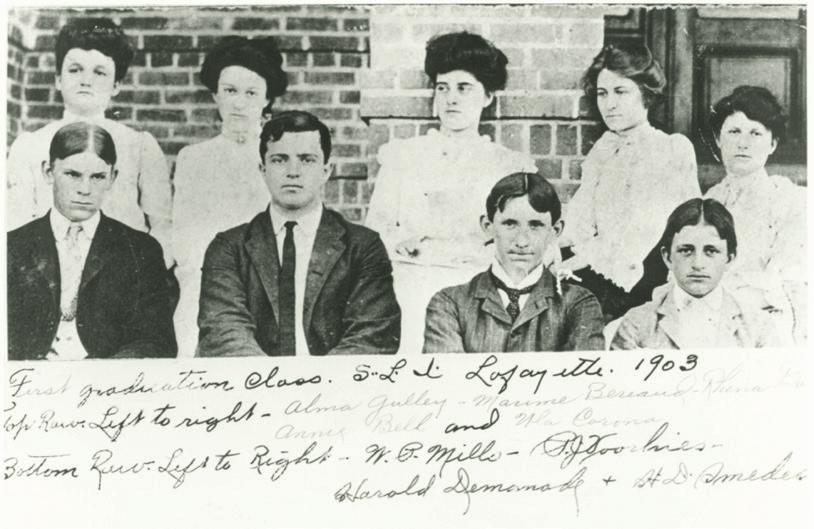

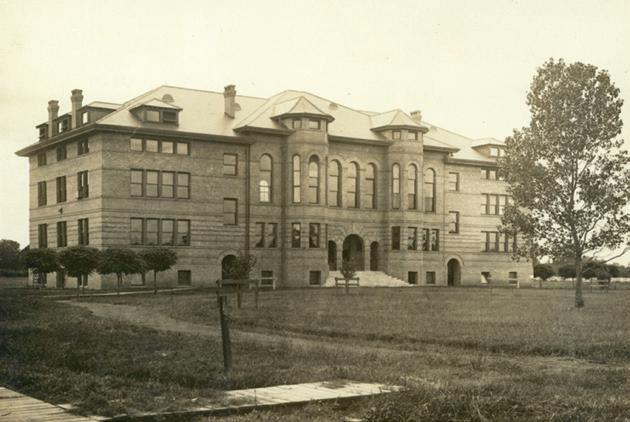
Early Construction 1904

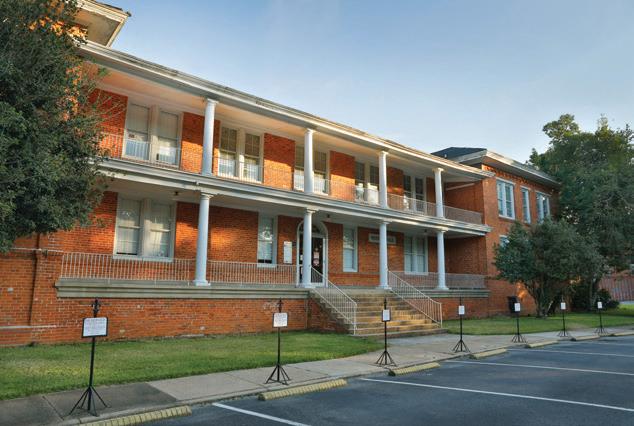
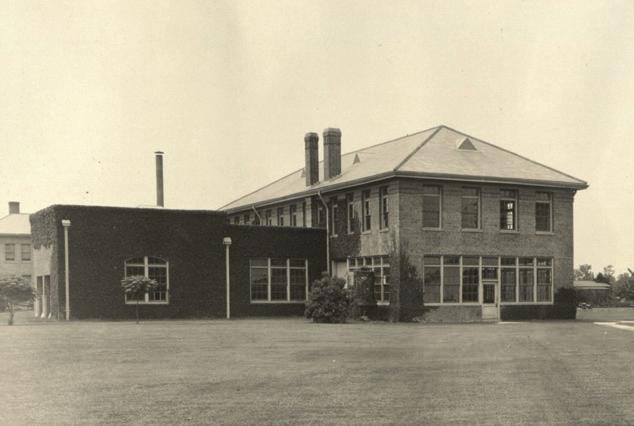

In 1903, SLII organized the Institute Athletic Association Athletics 1901-1903
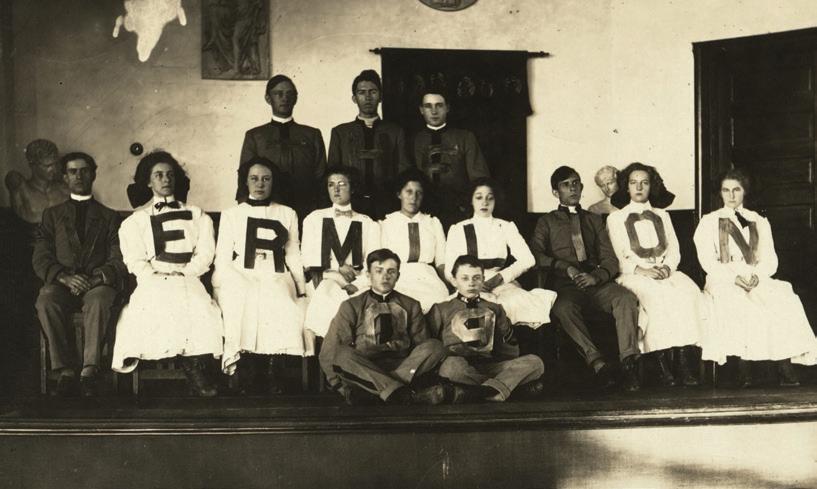
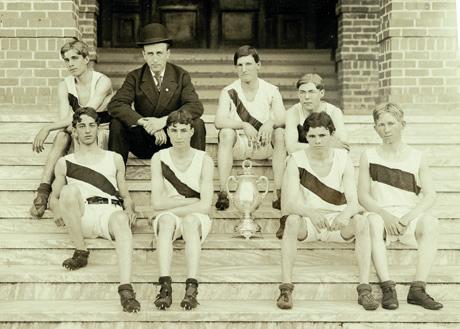
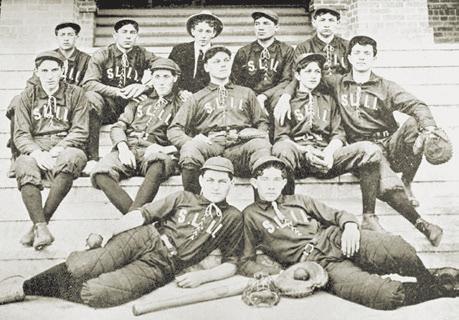

 Southwestern Louisiana Industrial Institute had eight faculty members for its first session in 1901. From left, top row: Florent Sontag, music; SLII President Edwin L. Stephens, mathematics; Beverly Randolph, drawing and gymnastics; Ashby Woodson, manual training; Gertrude Mayfield, domestic science; and V.L. Roy, science. From left, seated: L.W. Mayer, stenography, and Edith Garland Dupré, English and French.
Southwestern Louisiana Industrial Institute had eight faculty members for its first session in 1901. From left, top row: Florent Sontag, music; SLII President Edwin L. Stephens, mathematics; Beverly Randolph, drawing and gymnastics; Ashby Woodson, manual training; Gertrude Mayfield, domestic science; and V.L. Roy, science. From left, seated: L.W. Mayer, stenography, and Edith Garland Dupré, English and French.
20 LA LOUISIANE | SPRING 2024
Shown are nine of the 18 members of Southwestern Louisiana Industrial Institute’s first graduating class.
Members of The Vermilion, SLII’s student newspaper, posed for a photo in 1909. The Vermilion began publishing in 1904.
The first staff of L’Acadien, Dorothy Dunn Gagne, Laura Landrenau, Joseph Edward Lacour, Martha Pelleria and Hallie May Bibbins.
Main Hall (later named Martin Hall)
DeClouet Hall
Brown Ayres Hall, destroyed by fire in 1972
Foster Hall
1901 1910
SLII’s first baseball team, 1903 SLII’s basketball team, 1913
SLII’s first track team, 1901
SLII’s football team, 1903
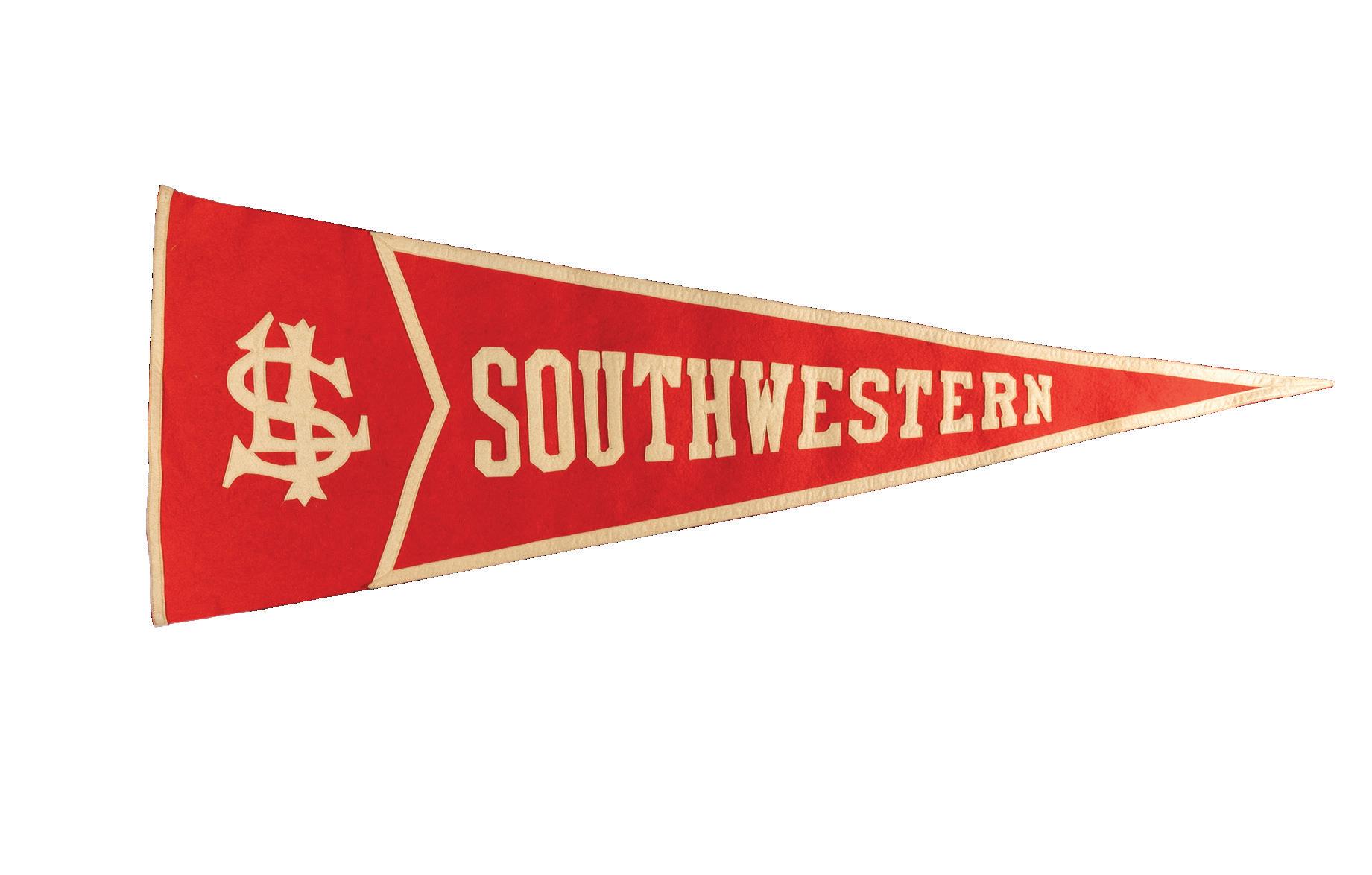
1921
The Louisiana Constitution designated the school as one of the state’s institutions of higher education and changed its name to
SOUTHWESTERN LOUISIANA INSTITUTE OF LIBERAL AND TECHNICAL LEARNING.
“
IF I WERE ASKED TODAY TO NAME THE THREE CONSTANT PRINCIPLES THAT HAVE SHAPED THE DESTINY OF THIS COLLEGE, I SHOULD SAY IN RINGING WORDS ~ LOFTINESS OF ASPIRATION, HONESTY OF PURPOSE AND GENEROSITY OF COMRADESHIP.
“
Garland Dupré, faculty member, in a speech in 1926
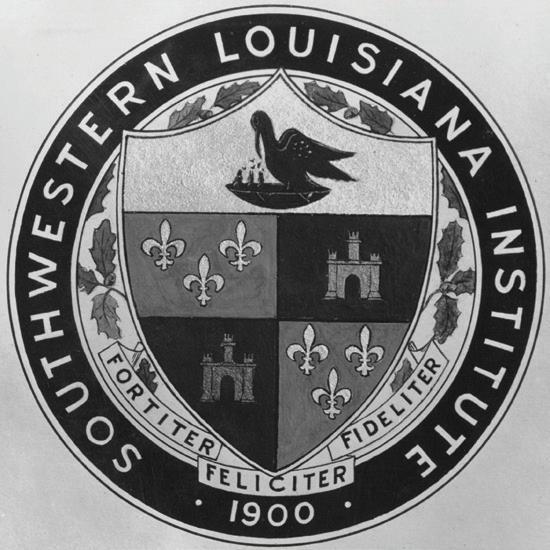
1925
President Edwin L. Stephens designed a seal to commemorate accreditation of Southwestern Louisiana Institute as a four-year college.
The emblem was adopted May 11, 1926. The shield is indicative of faith and valor. Within the circle, there is a wreath of live oaks, beloved by Dr. Stephens. The Latin adverbs are ‘Bravely, Happily, Faithfully.’


CYPRESS
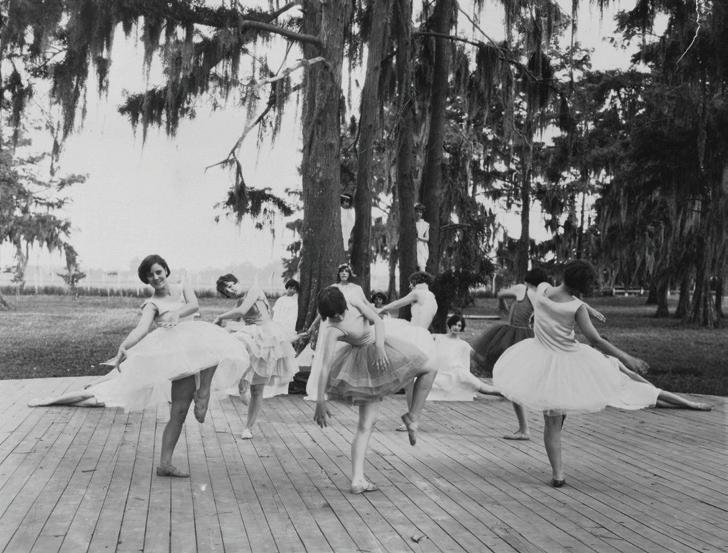
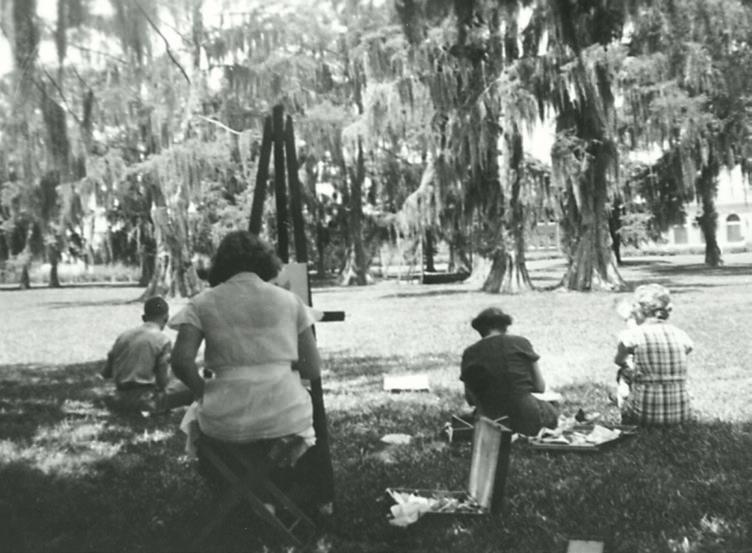
21 LA LOUISIANE | SPRING 2024 LA LOUISIANE | SPRING 2024 21
Edith
SLI’s Extension Division provided bus service to students who didn’t have transportation or couldn’t afford to live on campus. In 1932, buses transported 143 students who each paid $5-$8 per month for the service. Buses traveled to Franklin, Kaplan, Jennings and Opelousas.
In 1928, a physical education class performed “A Midsummer Night’s Dream.”
Emily Huger, an art instructor, held classes in Cypress Grove in 1937.
GROVE, ONCE A PIGSTY, WAS USED FOR PERFORMANCES AND COMMENCEMENT CEREMONIES BEFORE IT WAS INTENTIONALLY FLOODED DURING WORLD WAR II.
1938
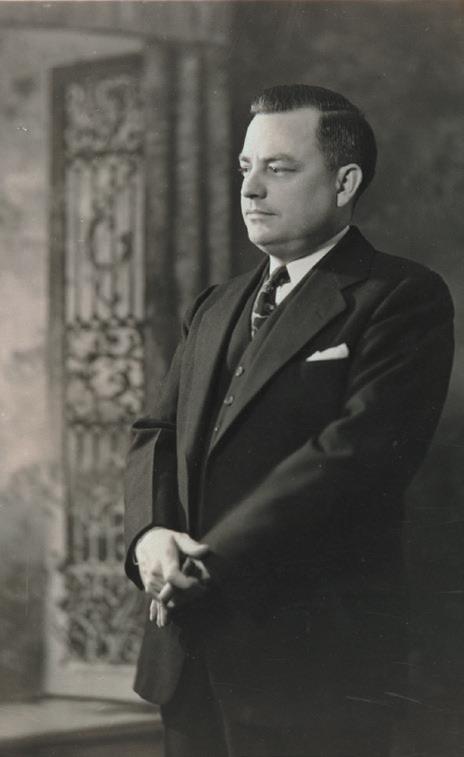
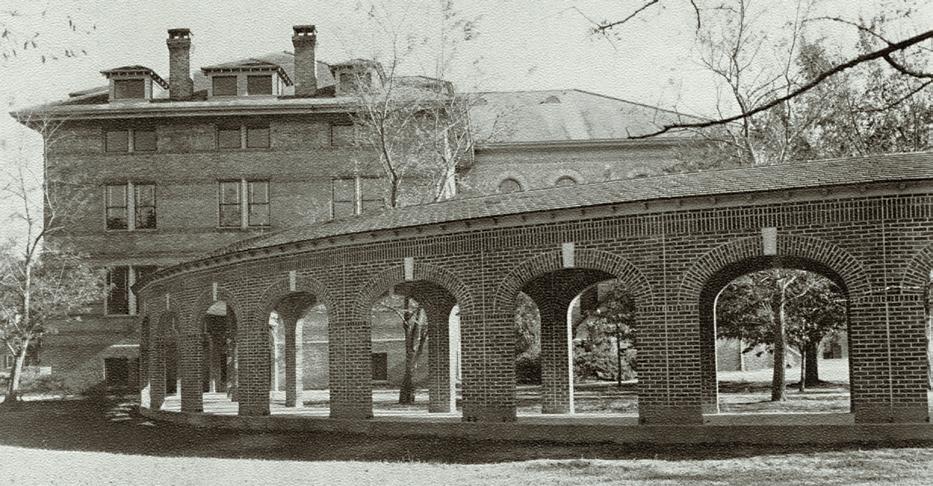
A covered walkway constructed in 1940. The brick structure, which linked all major buildings on campus, was the only one of its kind in the state, according to The Vermilion
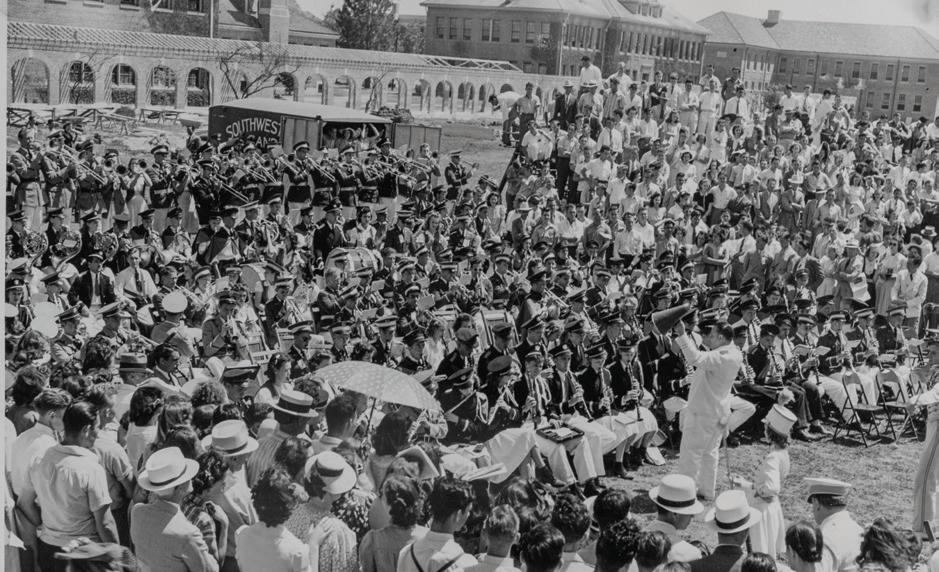
Thousands attended dedication ceremonies on May 18, 1940,
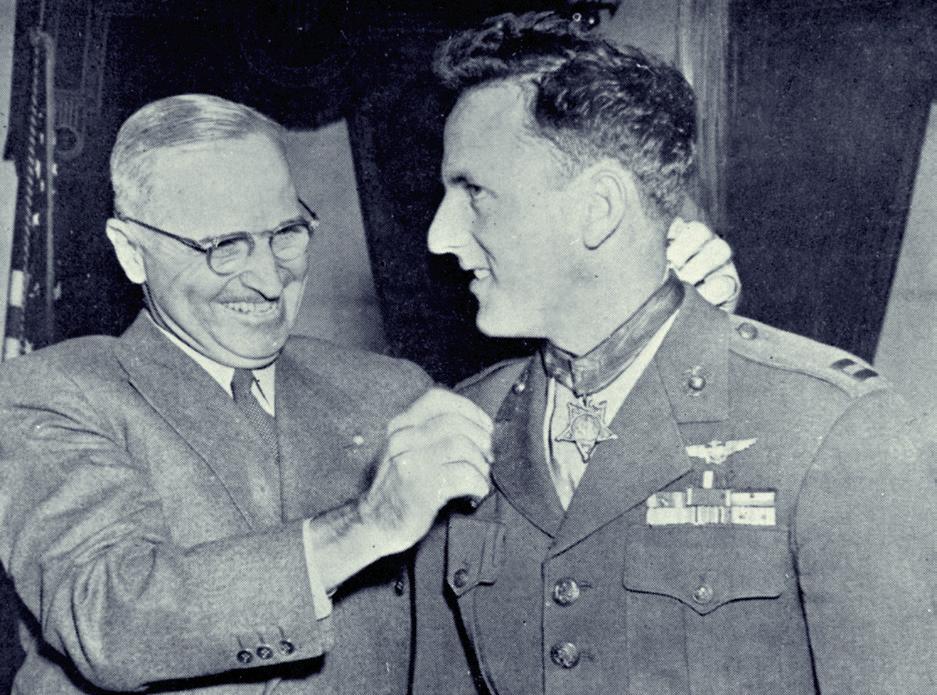
1941


In 1943, Fletcher and Dean of Men Joe Riehl were able to secure the V-5, V-7 and V-12 military training units for SLI. The armed services programs are credited with saving SLI by boosting enrollment. By the time all programs were complete in 1945, about 2,000 soldiers had passed through Southwestern’s gates.
Students marched in a parade to mark the opening of a Red Cross Relief Fund, rolled bandages and held victory dances to raise money for war bonds.

22 LA LOUISIANE | SPRING 2024
Lether E. Frazar became SLI’s second president.
Joel Lafayette Fletcher became SLI’s third president.
for 14 buildings completed during Frazar’s administration.
Right: A wishing well adjacent to Cypress Lake was a gift from the Class of 1943 to SLI’s student body. It was intended to symbolize the class spirit of optimism.
Jeff DeBlanc, '46, was the first SLI alumnus to receive the Medal of Honor. President Harry S. Truman is shown presenting the medal during a ceremony in Washington, D.C.
Fight Song
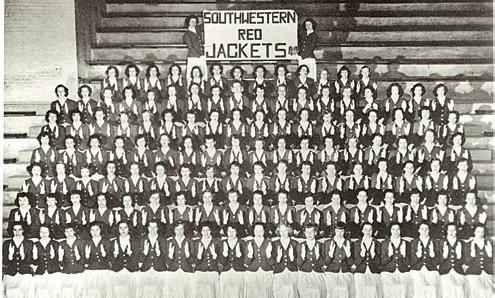
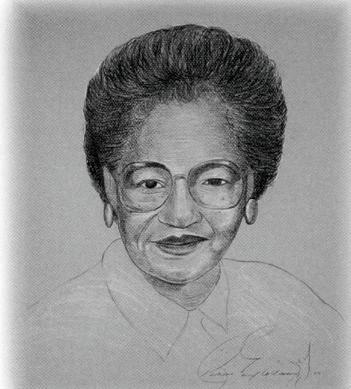
Southwestern’s official fight song was chosen during a contest sponsored by the Student Council in 1950. Hilma Labauve, an SLI freshman, wrote the winning entry and won a prize of a $100 U.S. Savings Bond.
The Red Jackets, a pep squad created in 1937, had more than 100 members in 1950. During halftime at football games, the drill team performed on the field.
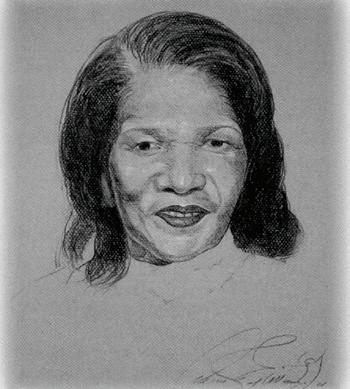
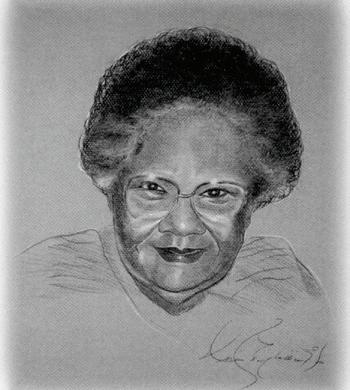
FIGHT ON, BULLDOGS, FIGHT ON TO VIC’TRY FOR THE RED AND WHITE. WE ALL SING OF TRIUMPH AND GLORY FOR OUR BOYS TONIGHT. YOU WILL HEAR THE BARK OF THE BULLDOGS SOARING TO THE SKY HUSTLE UP AND RUSTLE UP AND FIGHT ON TO VIC’TRY, S-L-I
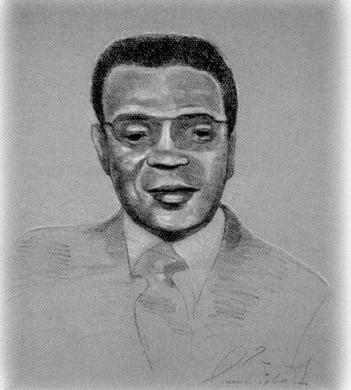
In 1953, four Black students–Clara Dell Constantine, Martha Jane Conway, Shirley Taylor and Charles Vincent Singleton–were denied admission to SLI. They filed a lawsuit in response, seeking a court order to force the institute to allow them to enroll.
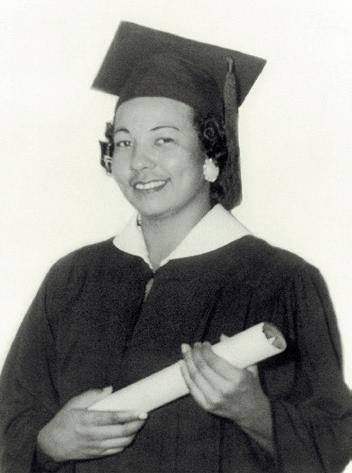
1954
On July 16, 1954, the federal court in Shreveport ruled that SLI could not refuse admission to any resident of southwest Louisiana on the basis of race or color. John Harold Taylor registered six days later. By the start of the fall semester, 80 Black students had enrolled at SLI, making the school the first formerly all-White college or university in the Deep South to desegregate.
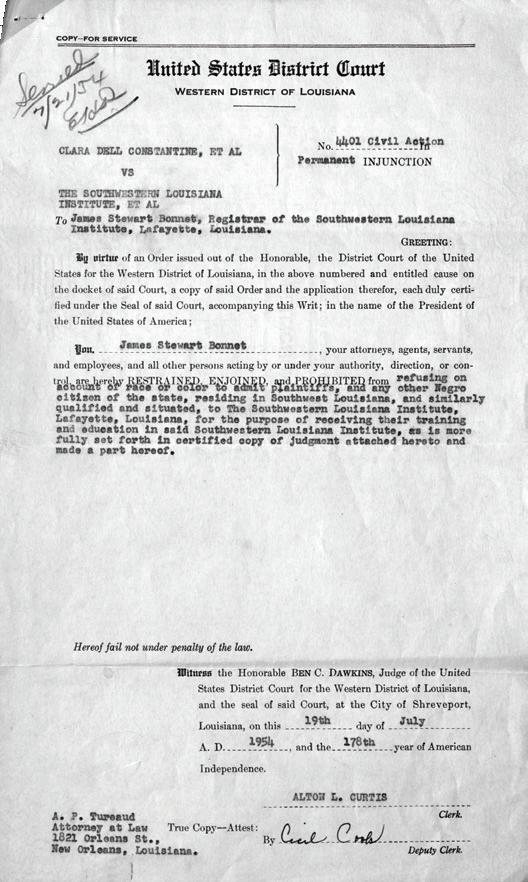
Left: In 1956, Christiana Smith became the first Black student to graduate from SLI.

Between 1957 and 1971, weightlifting teams representing SLI and USL won eight national championships, including five consecutive titles. Among the team’s members: Walter Imahara, center, one of the most decorated athletes in University history.
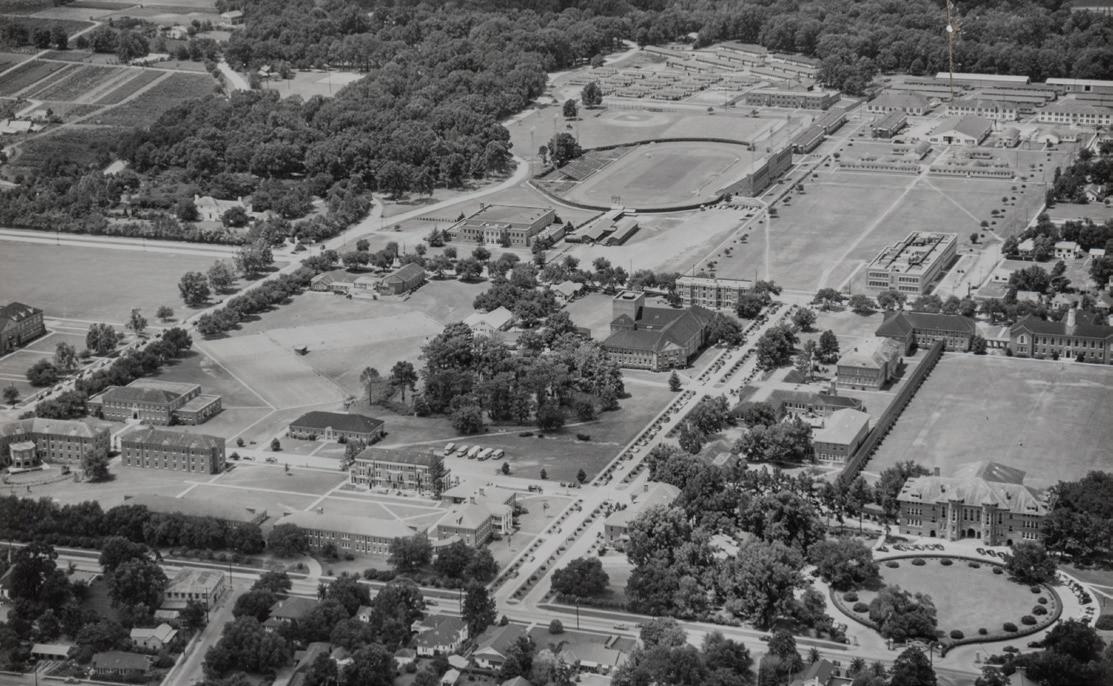
In 1956, the Louisiana Legislature authorized Southwestern to grant master's degrees in education. A Graduate School was established in 1957, positioning SLI to become a university.
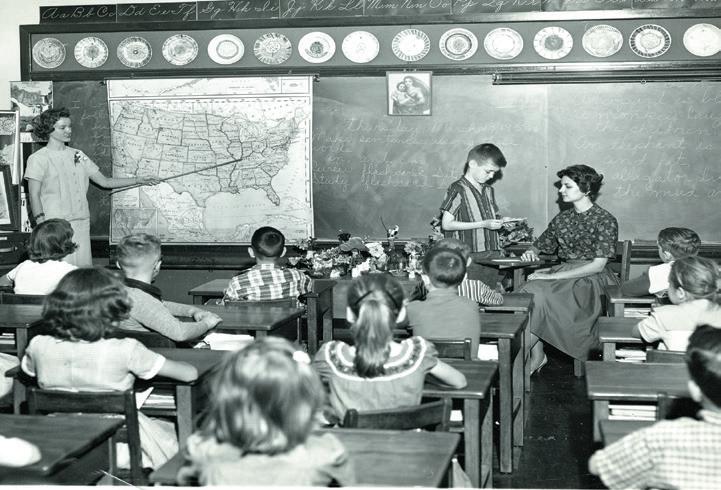
Coronna, Olivier and Guillory halls, seen here near Hebrard Boulevard, originally opened in 1957 as the Memorial Student Union.
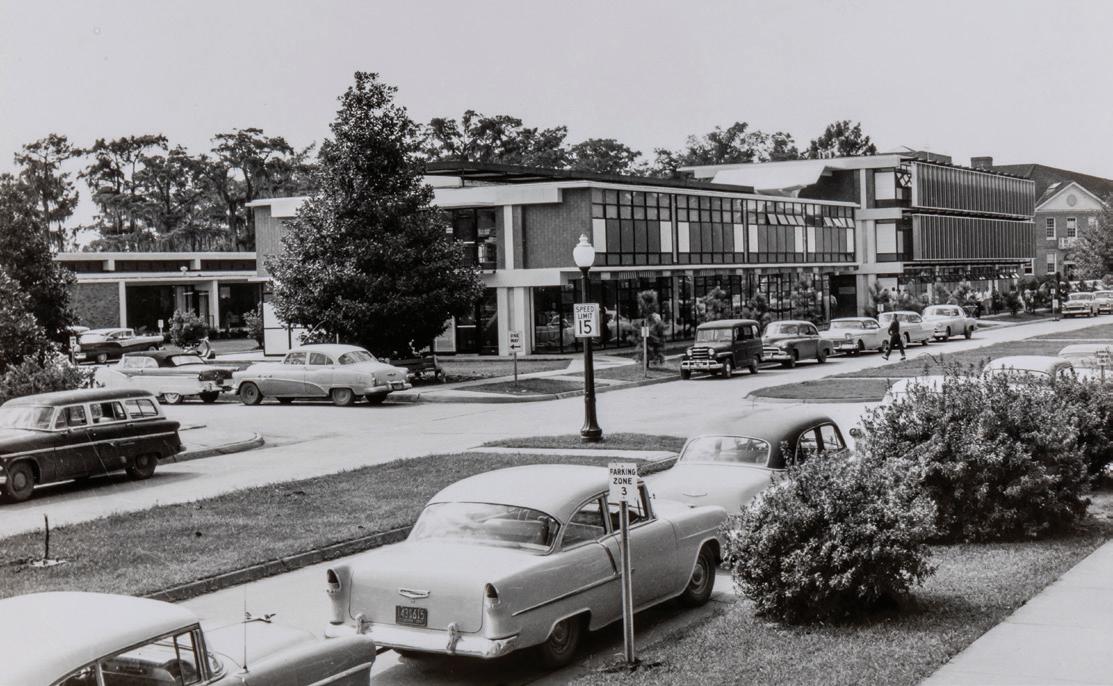
LA LOUISIANE | SPRING 2024 23
SLI’S CAMPUS IN 1954
JULY 27, 1960
Gov. Jimmie Davis signed Act 123, which changed SLI’s name to the UNIVERSITY OF SOUTHWESTERN LOUISIANA
“
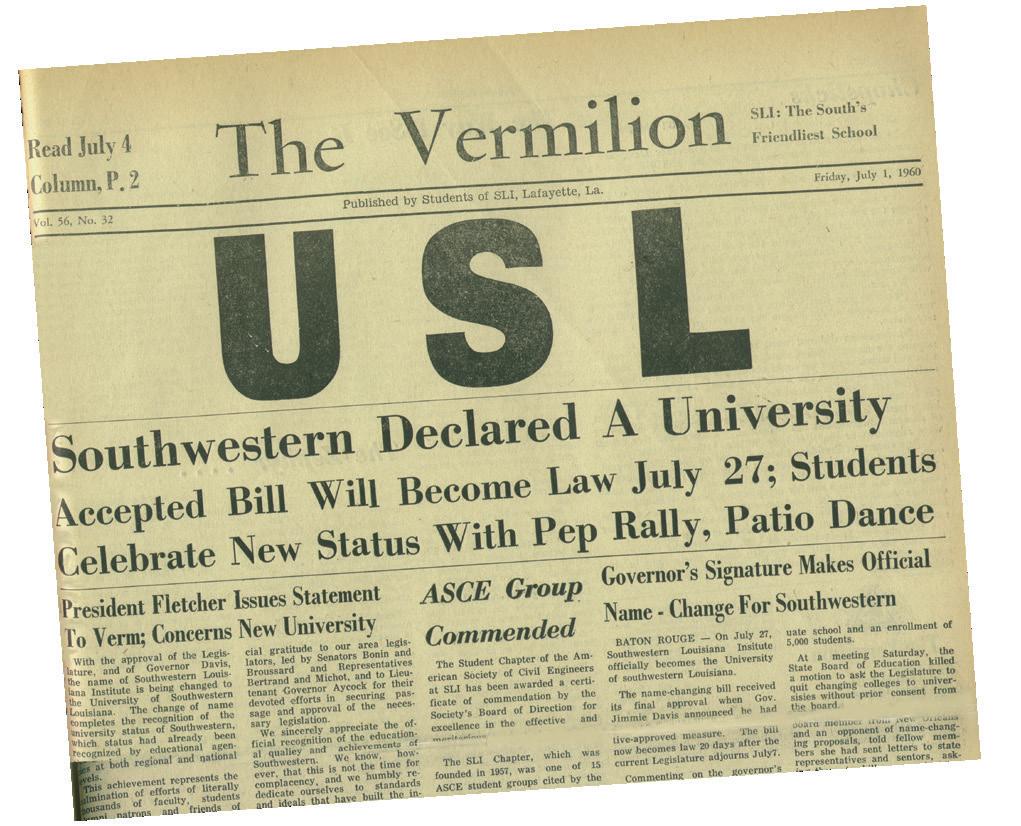
WE FIRMLY RESOLVE THAT WE SHALL BE VERY WORTHY OF OUR NAME, AND WE SHALL ADD NEW HONORS TO THAT NAME.
USL President Joel L. Fletcher in a speech thanking supporters

The July 12, 1963, edition of The Vermilion states:
“Instead of the official Battling Bulldogs, Southwestern boosters have started referring to Coach Russ Faulkinberry’s squad as the Raging Cajuns.”
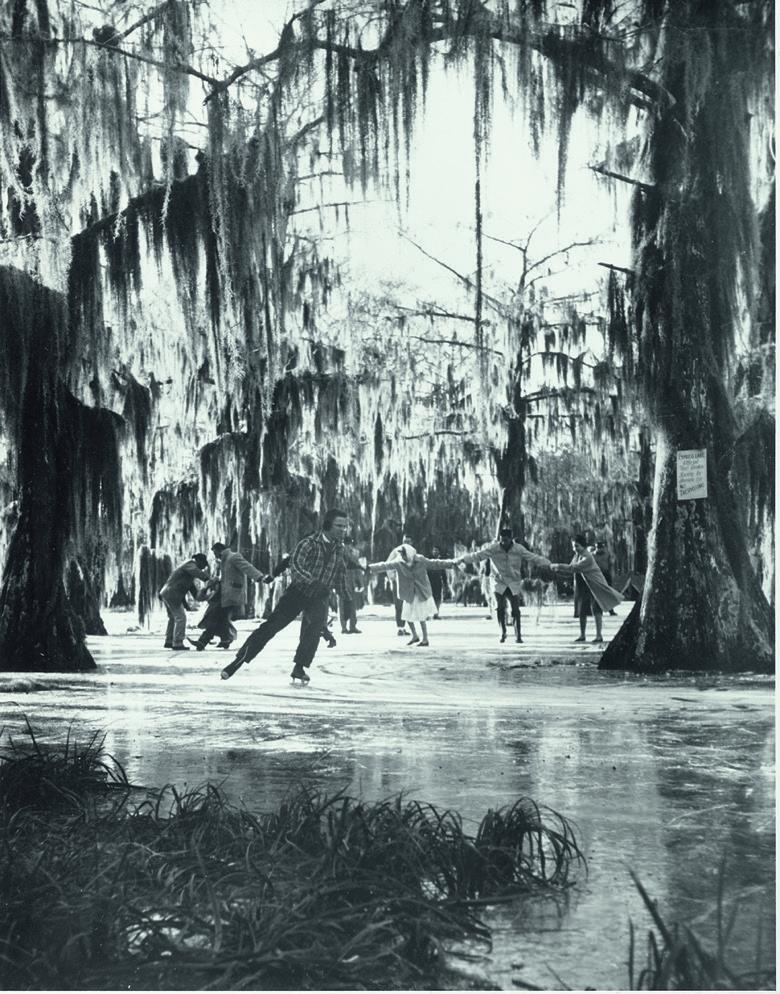
In 1962, Life magazine published this photo of a frozen Cypress Lake. Students ignored no trespassing signs and went ice skating – with or without skates.
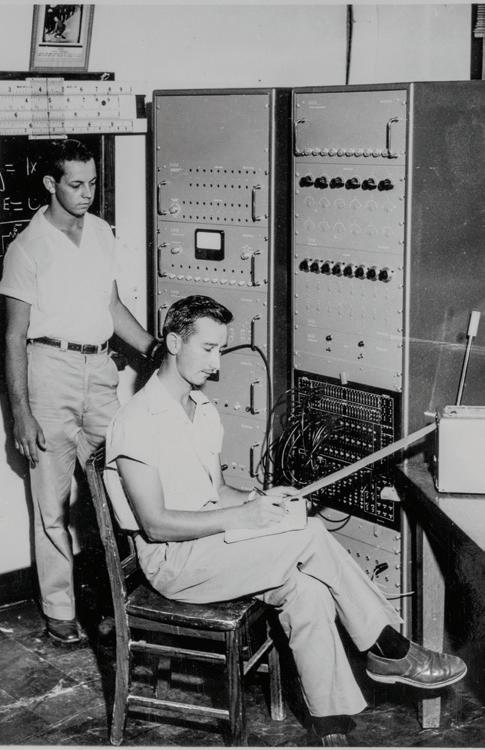
1966
Clyde R. Rougeou became USL's fourth president.
“

SLI obtained its first computer in 1954. It was used in classroom instruction and made available to local businesses and industry. By 1964, USL offered one of the first graduate programs in computer science in the U.S.
Left: Sammy Fontenot, standing, and Irving Manuel monitor Southwestern’s first “electronic brain.”
In 1971, Cajun Field opened. “The Swamp” was built to seat 27,000 fans.
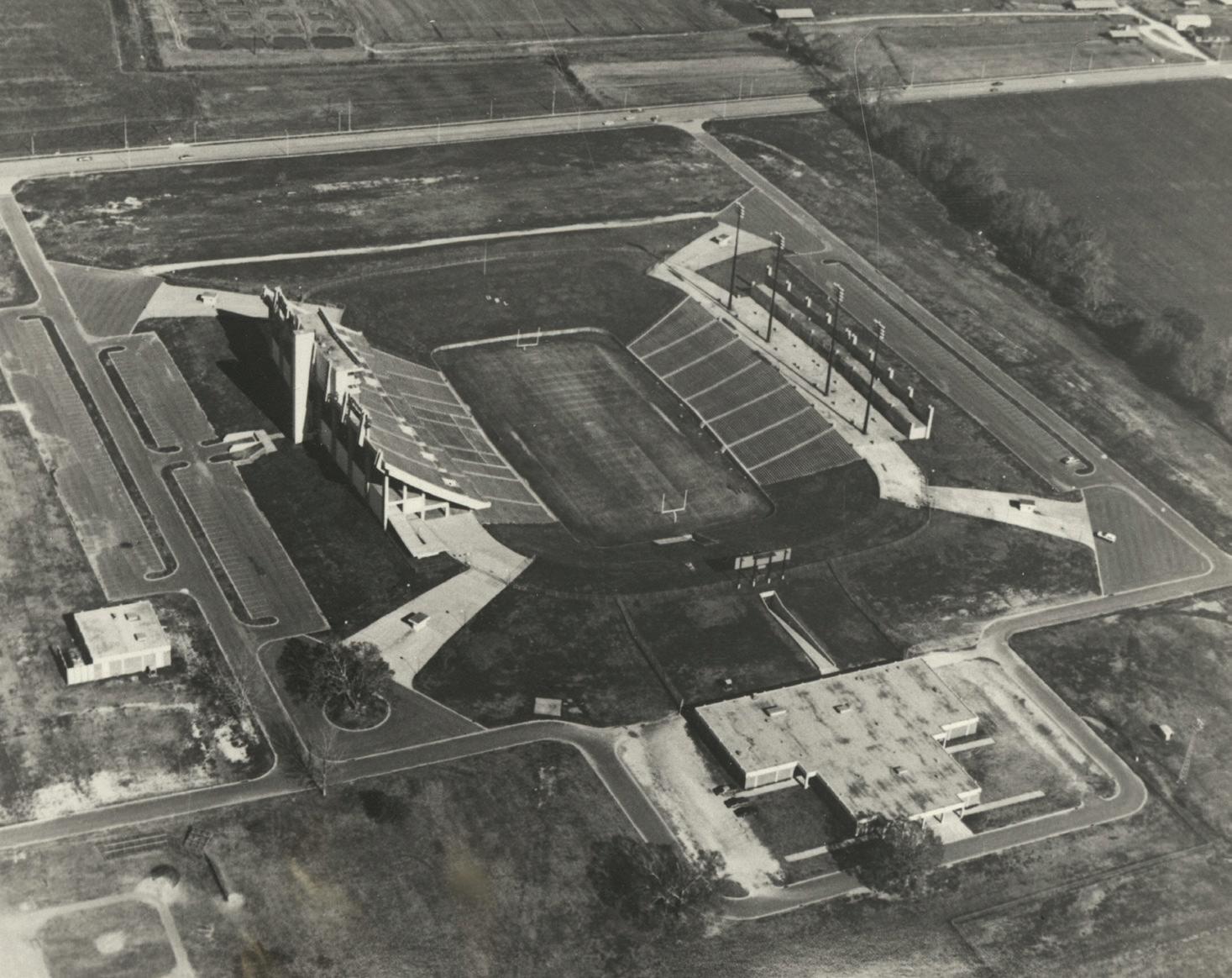
24 LA LOUISIANE | SPRING 2024

1974
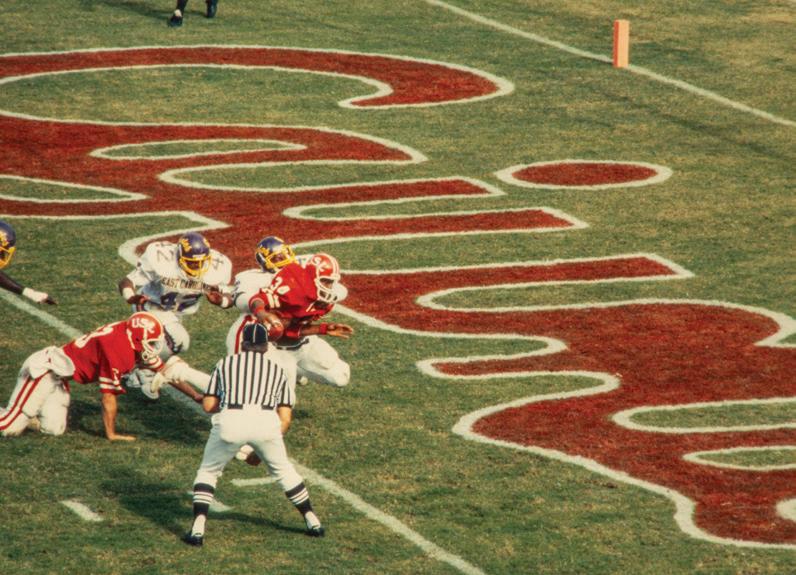
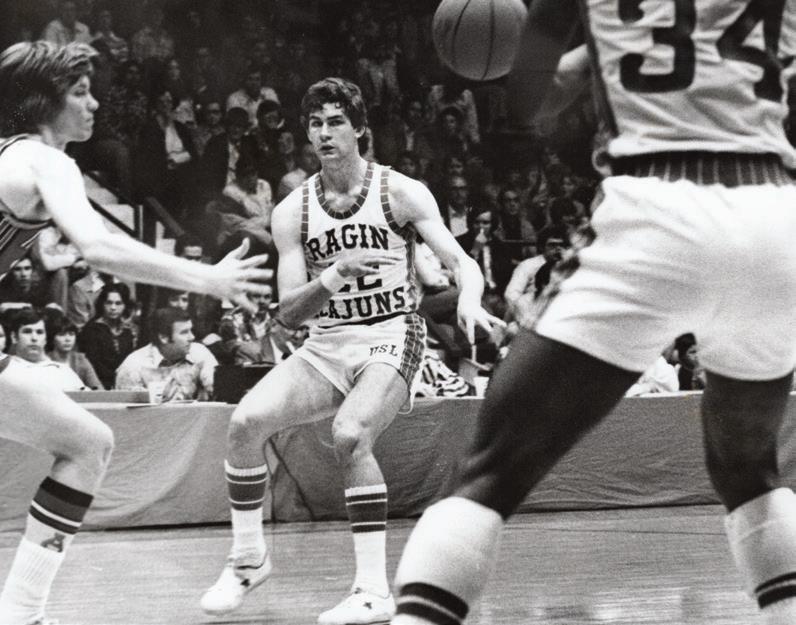

Dr. Ray P. Authement became the University’s fifth president. He retired in 2008. Authement’s 34-year tenure made him the nation’s longest-serving public university president at the time. During his presidency, the University changed its name to the University of Louisiana at Lafayette; implemented academic admission standards; became the first Doctoral II institution in Louisiana; helped diversify the economy by establishing 17 research centers; increased gifted assets to more than $150 million; and constructed over 30 buildings and facilities, and renovated or expanded more than 25 others. The Ray P. Authement College of Sciences is named in his honor.
1981
First
in southeastern U.S. to offer a graduatelevel degree in computer engineering.

bachelor’s degree in telecommunications in the nation.
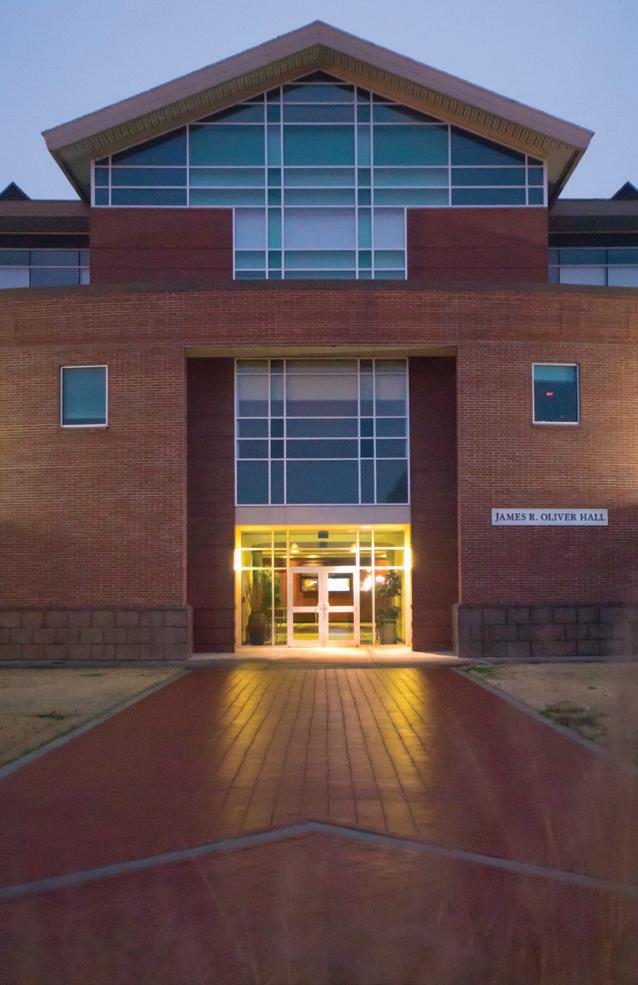
In 1984, USL formed the Center for Advanced Computer Studies. Since its inception, CACS has demonstrated a strong contribution to high-quality education and research in the fields of computer science and engineering.
In the mid-1980s, the Quadrangle got a new look when intersecting sidewalks were poured, drainage was improved and landscaping was added.
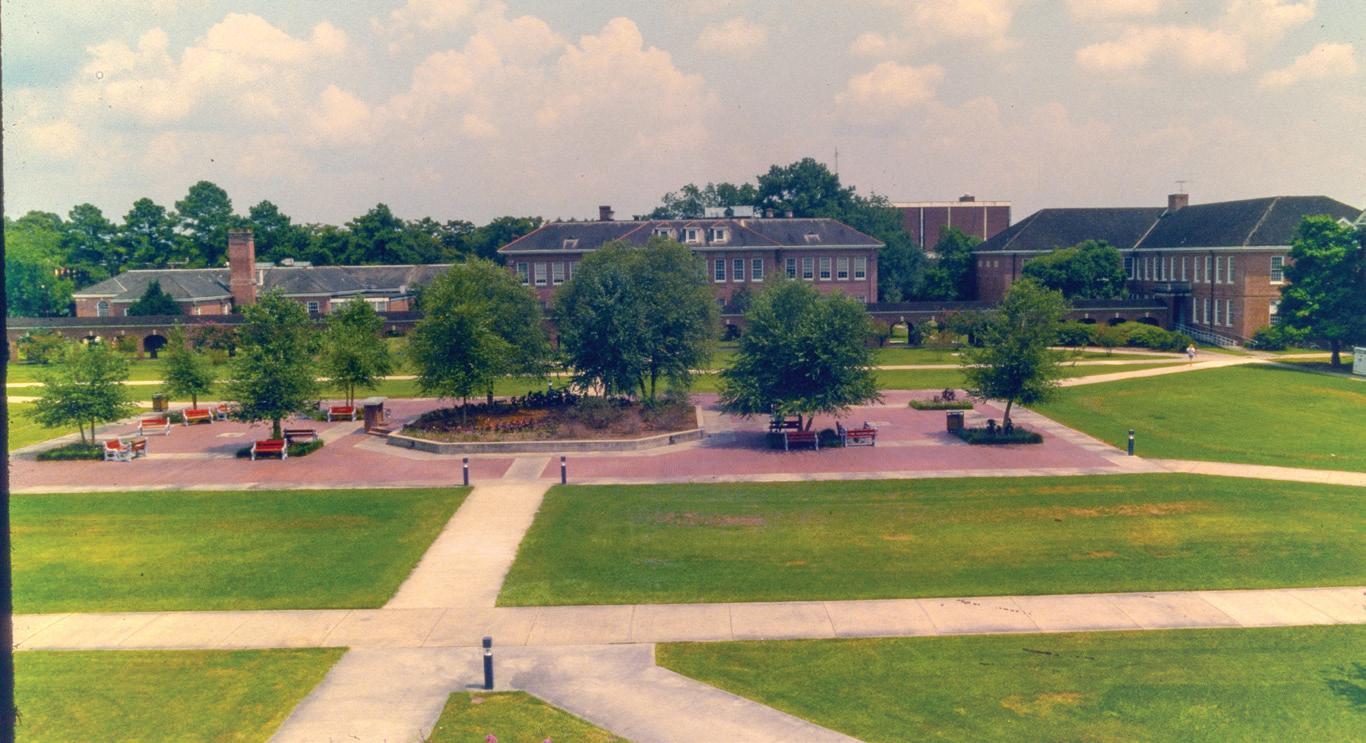
LA LOUISIANE | SPRING 2024 25
In 1974, USL joined NCAA Division I for all sports.
Ragin’ Cajuns Men’s Basketball made its first official NCAA Tournament appearance in 1982.
Track and field star Hollis Conway won the silver medal at the 1988 Summer Olympics; he earned a bronze medal at the 1992 Summer Olympics, as well.
1980s RESEARCH
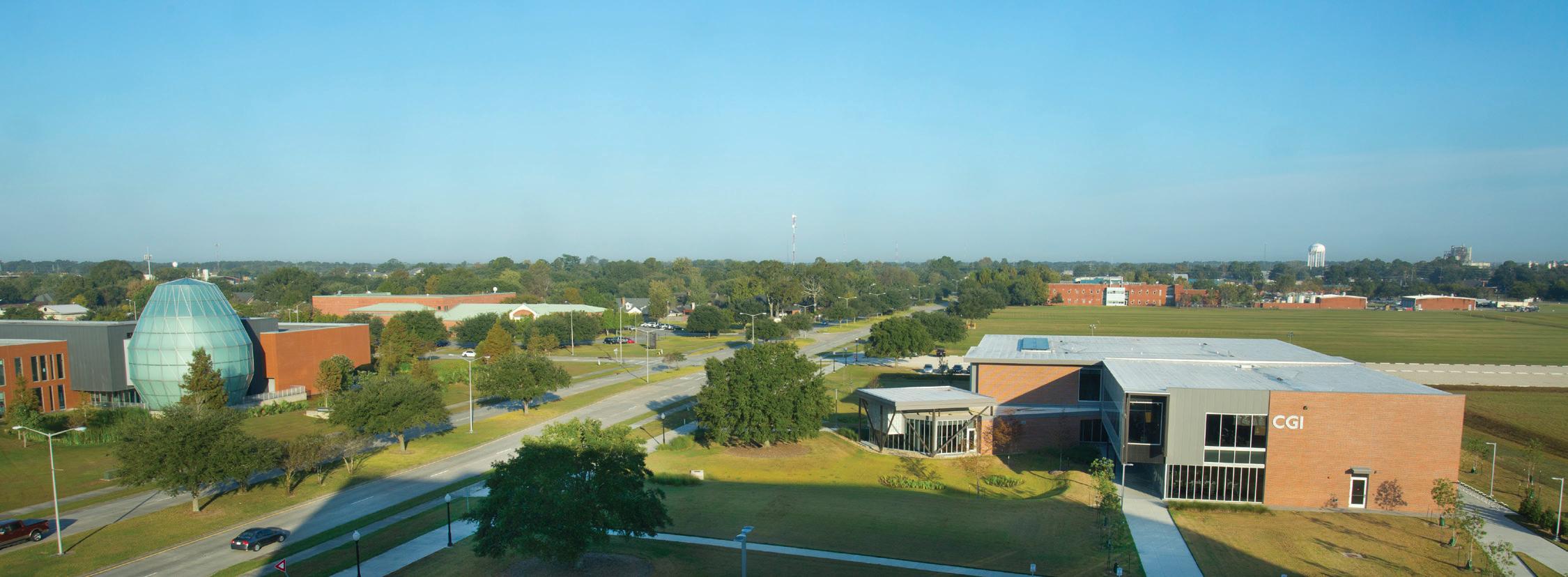
“ “
Just as Authement had concentrated on developing USL’s computer science expertise in the 1970s, he focused on biological and environmental sciences in the late 1980s and 1990s.
Kathleen Thames, 100 Years
In the mid-1980s, USL began developing University Research Park. In the decades since, the 143-acre tract has become a hub for innovation, collaboration, partnerships with business, industry and government, and cutting-edge research.
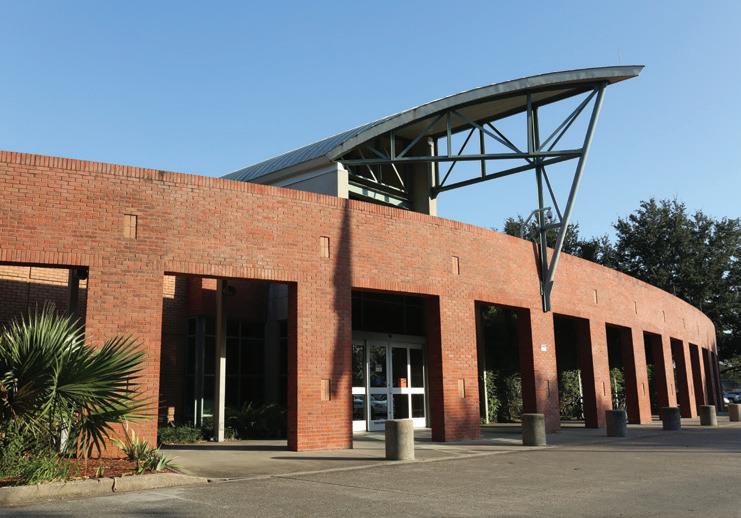
Among the first tenants in University Research Park was the National Wetlands Research Center. Its mission: to advocate for restoration and preservation of the nation’s wetlands.
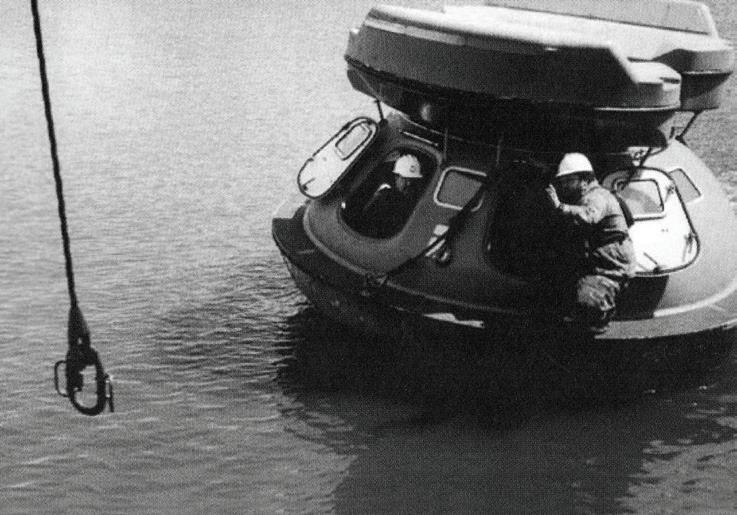
In the 1980s, USL teamed up with the oil industry to build the Marine Survival Training Center, the nation's first training facility to teach offshore workers marine survival techniques.
The 12,800-seat Cajundome opened in 1986. This photo was taken from the top of the roof during construction. The property shown in the background is University Research Park, before Cajundome Boulevard connected Congress Street with Eraste Landry Road. The Cajundome underwent renovations and an expansion to include a convention center in 2000.

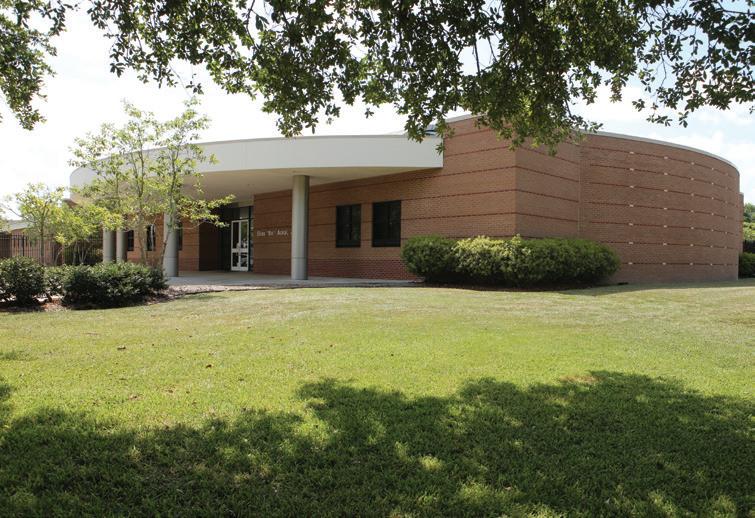
USL acquired the Gulf South Research Center in New Iberia in 1984, which it later developed into the New Iberia Research Center, a testing facility for pharmaceutical companies worldwide.
1996
RAGIN’ CAJUNS WAS FEDERALLY TRADEMARKED. A new athletic logo was adopted by USL in 1998.
1990s
Distinctions
The University sets selective admissions.
USL became the only Doctoral II university in Louisiana.
USL became the third university in the world, and the only one in the nation, to offer a doctoral degree in Francophone studies.
26 LA LOUISIANE | SPRING 2024
CONSTRUCTION & ACQUISITIONS
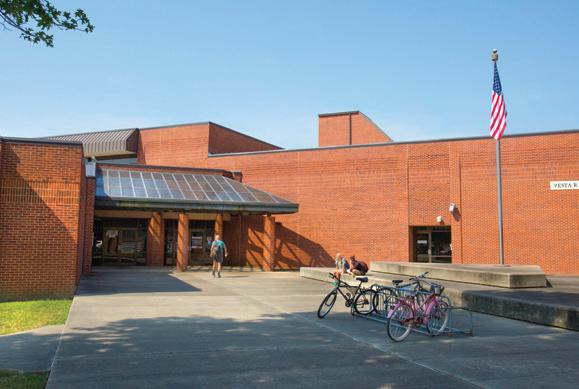
Bourgeois Hall 1986

Rougeou Hall 1988
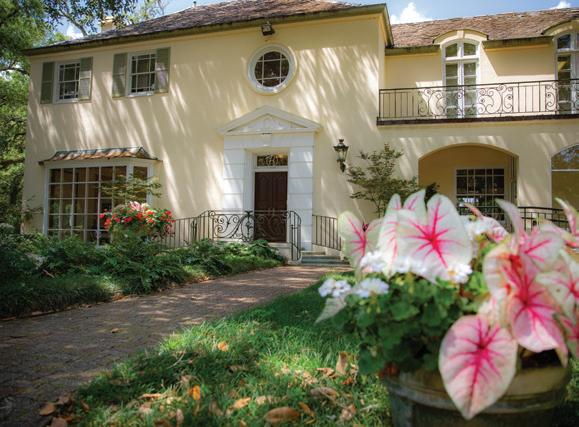
Alumni House Acquired 1991
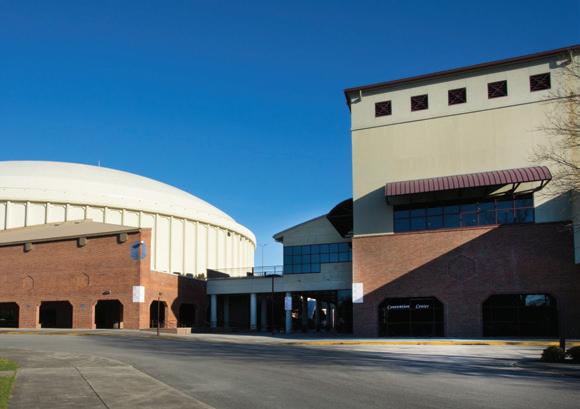
In 1990, the University announced plans to construct a convention center next to the Cajundome.
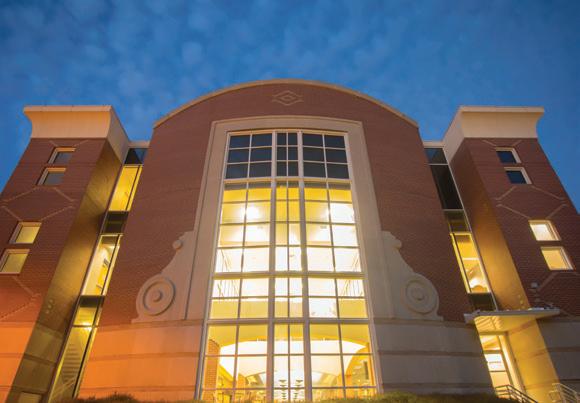

A new seal accompanied the University’s name change. While maintaining design elements from the original seal created in 1926, the new crest included portions of the Acadian and Creole flags, incorporated red, gold and green stripes to represent West African heritage, and redefined live oak tree leaves.
“
“ WE HAVE SIMPLY OUTGROWN THAT OLD SHELL... AND THIS NEW NAME REFLECTS HOW BIG WE'VE GROWN.
Dr. Gary Marotta, vice president for Academic Affairs, in a June 23, 1995, Vermilion article

In 2005, the Pride of Acadiana marched in Macy’s Thanksgiving Day Parade. The band made a second appearance in 2012.
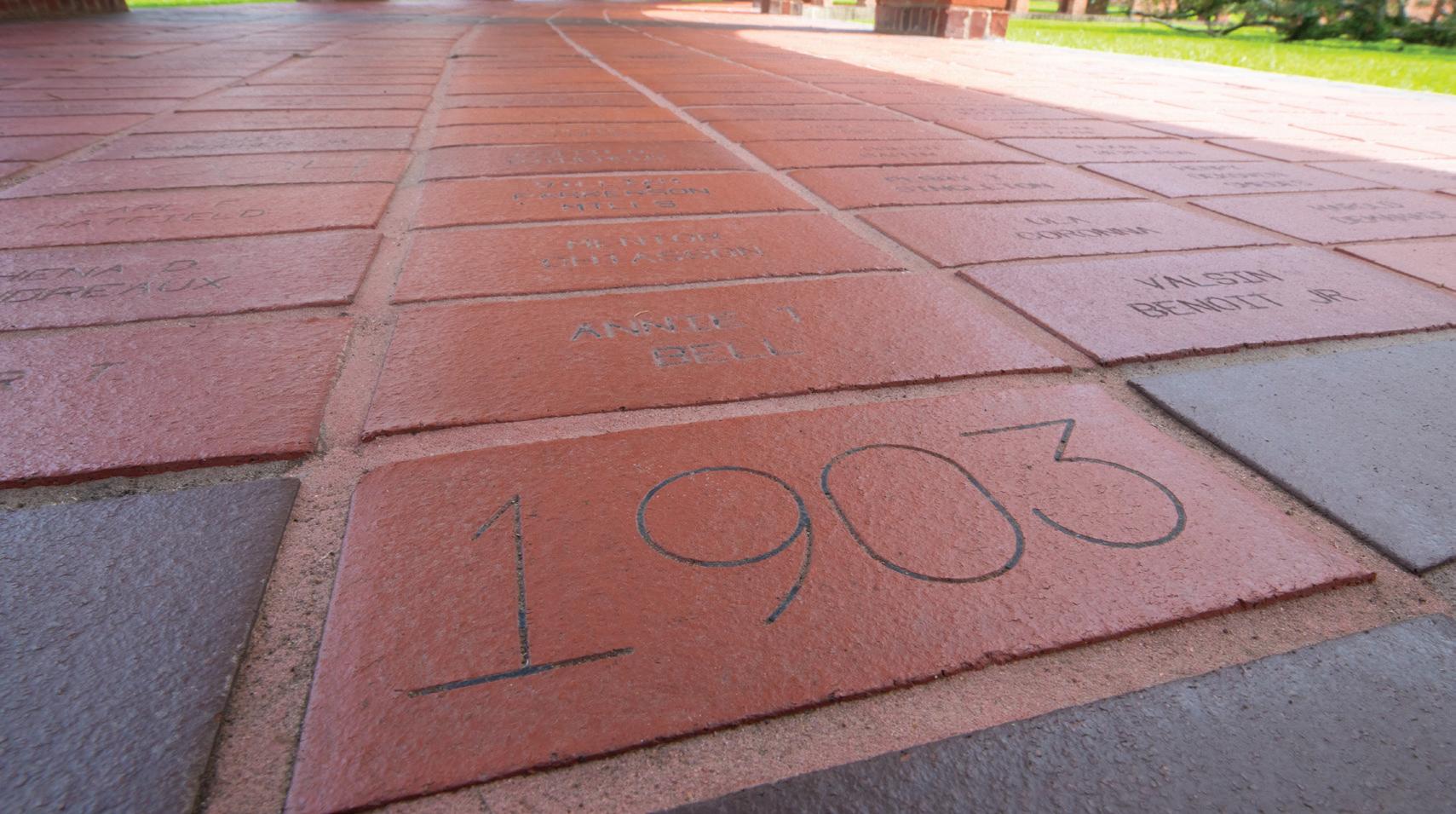
The first bricks on the distinctive – and now iconic – Walk of Honor were laid in 1990. It is paved with bricks bearing the names of graduates from SLII, SLI, USL and UL Lafayette.
LA LOUISIANE | SPRING 2024 27
Edith Garland Dupré Library underwent extensive renovations in the late 1990s.
USL became the UNIVERSITY OF LOUISIANA AT LAFAYETTE. 1999
SPACE
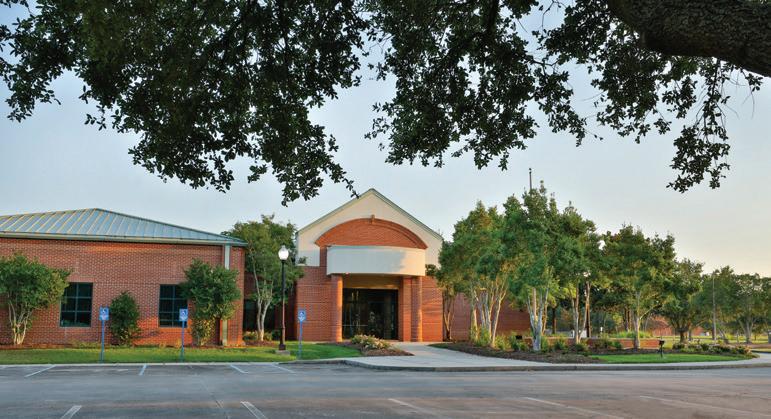
In 1997, the University became one of four NASA Regional Application Centers in the nation. Partners in government and industry use the satellite data it collects.
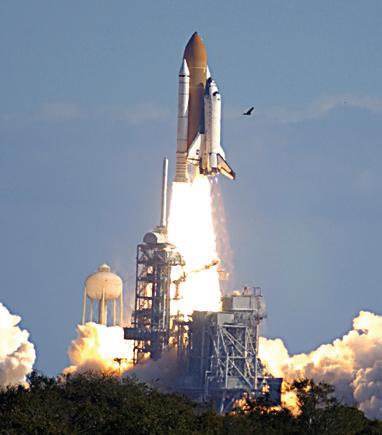
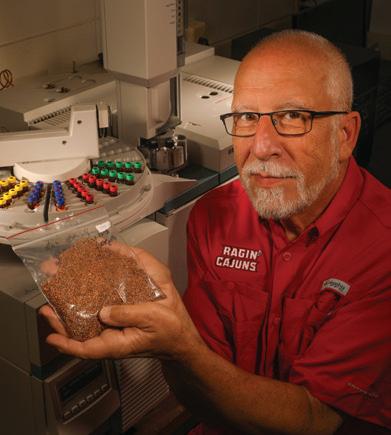
Dr. Karl Hasenstein’s research was destroyed in the 2003 explosion of Space Shuttle Columbia. In 2020, the biologist sent radish seeds to the International Space Station to test their viability in a zero-gravity environment.
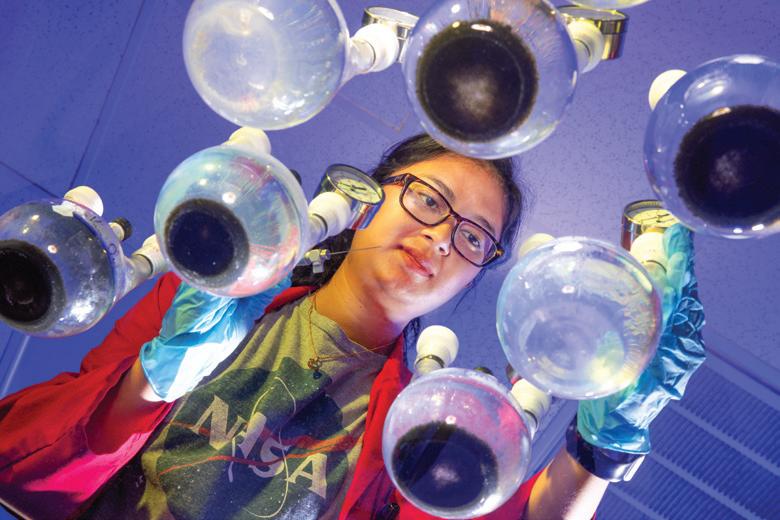
University researchers collaborated with NASA to build a biorefinery system to supply water and air for a potential human colony on Mars.

The first CAPE satellite launched in collaboration with NASA. UL Lafayette is the first Louisiana university whose students designed, built and launched a satellite.

In 1996, USL received what was then the largest federal grant in University history – $10 million to establish the Energy and Environmental Application Program. In the late 1990s, it also began to develop its Center for Ecology and Environmental Technology.
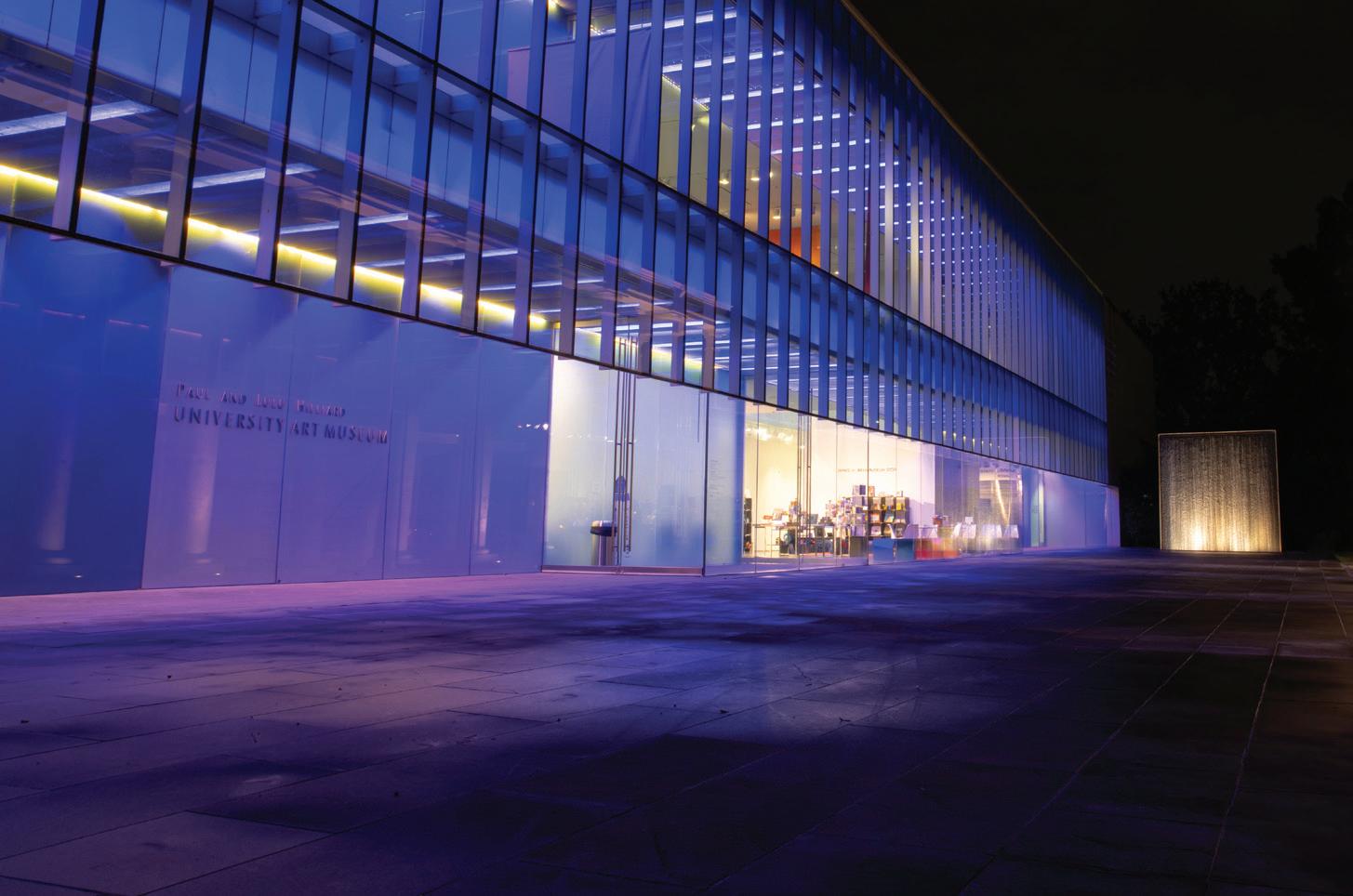
In 2004, the University Art Museum moved into a new home and was rechristened. The Hilliard Art Museum encompasses 11,000 square feet of galleries and is the largest exhibition space between Houston and New Orleans. In 2022, it earned accreditation from the American Alliance of Museums.
CajunBot – an autonomous vehicle developed by students for the DARPA Grand Challenge – drew national media attention to the University. It competed in the 2004, 2005 and 2007 contests.

28 LA LOUISIANE | SPRING 2024
2008
Dr. E. Joseph Savoie became the University’s sixth president.
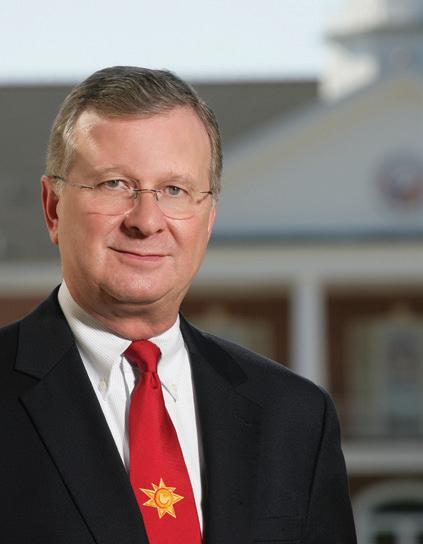
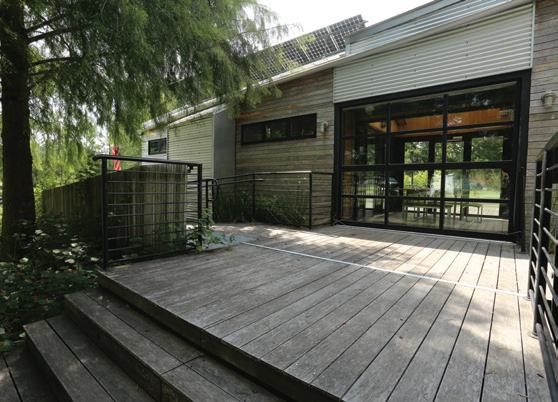
2009
“…(many people) did their part to secure a brighter future for this University and the people that it serves. But now it’s our turn. We are now the custodians of the promise, as it has been passed on to us. “
Dr. E. Joseph Savoie, Investiture Speech, Oct. 30, 2008

Students in the School of Architecture and Design and the College of Engineering competed in the U.S. Department of Energy’s Solar Decathlon with the BeauSoleil Solar House. Powered completely by solar energy, it earned first place in the People’s Choice and Market Viability competition.
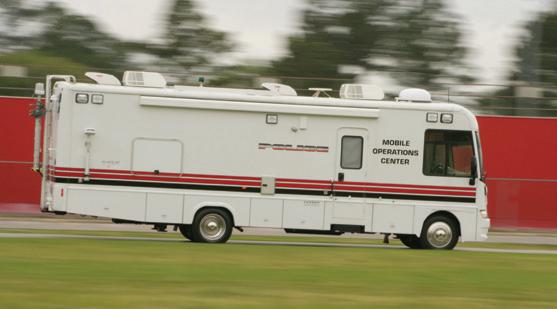
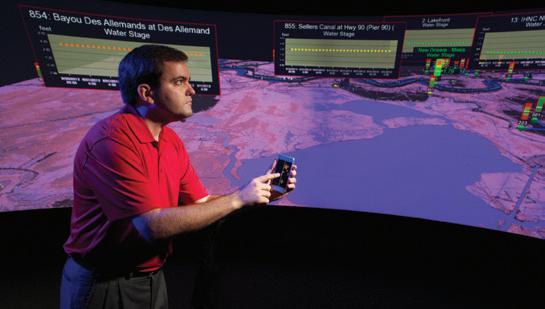

Keepers of the Culture
The Dr. Tommy Comeaux Endowed Chair in Traditional Music was established in 2010 and resulted in the launch of the University’s Traditional Music program. It is one of a handful of such programs in the nation.

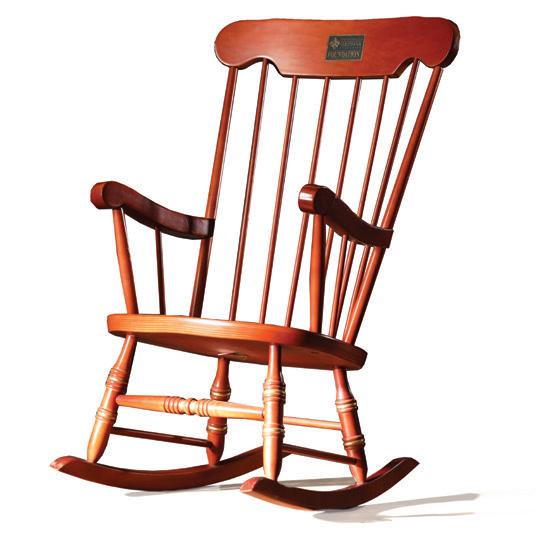

2012 2009
The National Incident Management Systems and Advanced Technologies Institute was founded. Its focus: enhancing disaster responses.
The Center for Visual and Decision Informatics was founded. It collaborates with government, industry and academia in using data to enable decision-making.
SERVING OUR COMMUNITY to make a difference

Nursing students provided medical screenings to the region’s vulnerable populations as part of their coursework. Students perform thousands of hours of community service each year.
2013
The Cleco Alternative Energy Center opened in Crowley, La. It investigates ways to provide clean, affordable energy to homes and businesses.
SERVING OUR STATE during times of disaster

Following the 2010 Deepwater Horizon explosion, researchers studied the oil spill’s effects on the Gulf of Mexico’s whale populations.
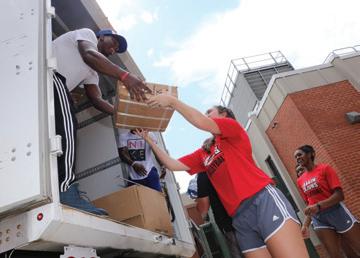
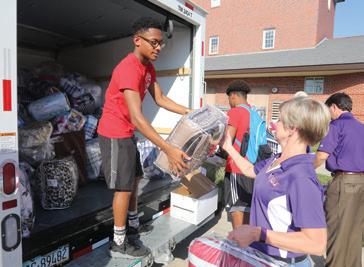
In August 2016, the University responded to historic flooding. Donations and grant monies were supplied to students in need, and diplomas lost to floodwaters were replaced for free.
2018
The PART Laboratory opened. UL Lafayette is the state’s only university that can examine solar technology both outside and in controlled environments.
SERVING OUR WORLD during times of crisis

The New Iberia Research Center, the nation’s largest academically affiliated nonhuman primate center, played a critical role in the development of the world’s first widely available COVID-19 vaccine.
LA LOUISIANE | SPRING 2024 29
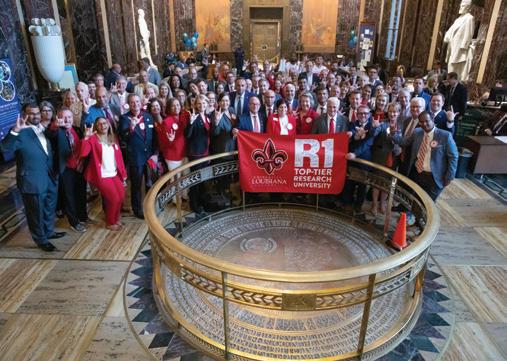
Celebrating
UL LAFAYETTE EARNED CARNEGIE’S R1 DESIGNATION IN 2021, PLACING IT AMONG THE TOP 3% OF PUBLIC AND PRIVATE RESEARCH COLLEGES AND UNIVERSITIES IN THE U.S.
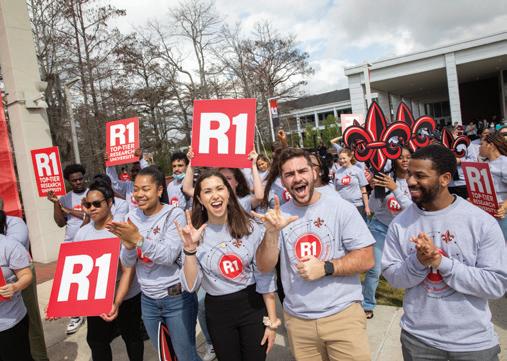
On Jan. 1, 2024, the University celebrated its 125th anniversary by planting the first new live oaks on the Health Sciences Campus that opened the previous fall. The trees are descendants of the original Century Oaks planted by founding President Dr. Edwin Stephens on Jan. 1, 1901.
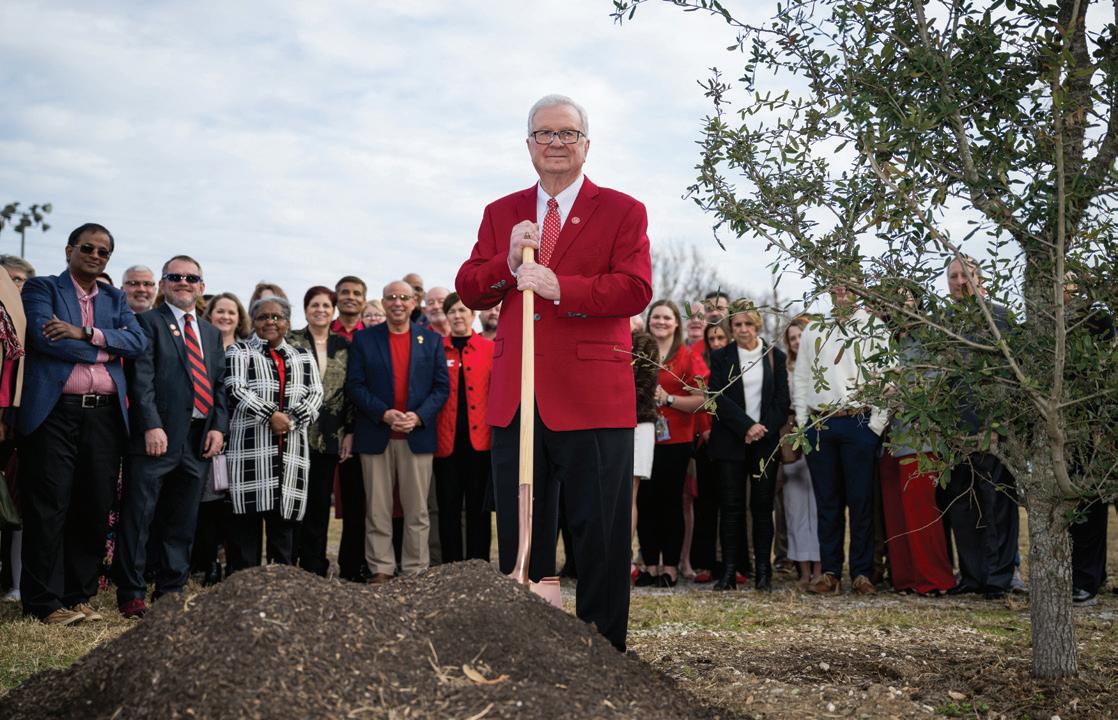
SECURING A BRIGHTER FUTURE
As it looks ahead to its future, the University has positioned itself for growth and success through construction and renovation projects. Among the plans: new classroom buildings for engineering and sciences. In addition, the University is working to transform the former National Marine Fisheries Service Building in University Research Park into a lab school.
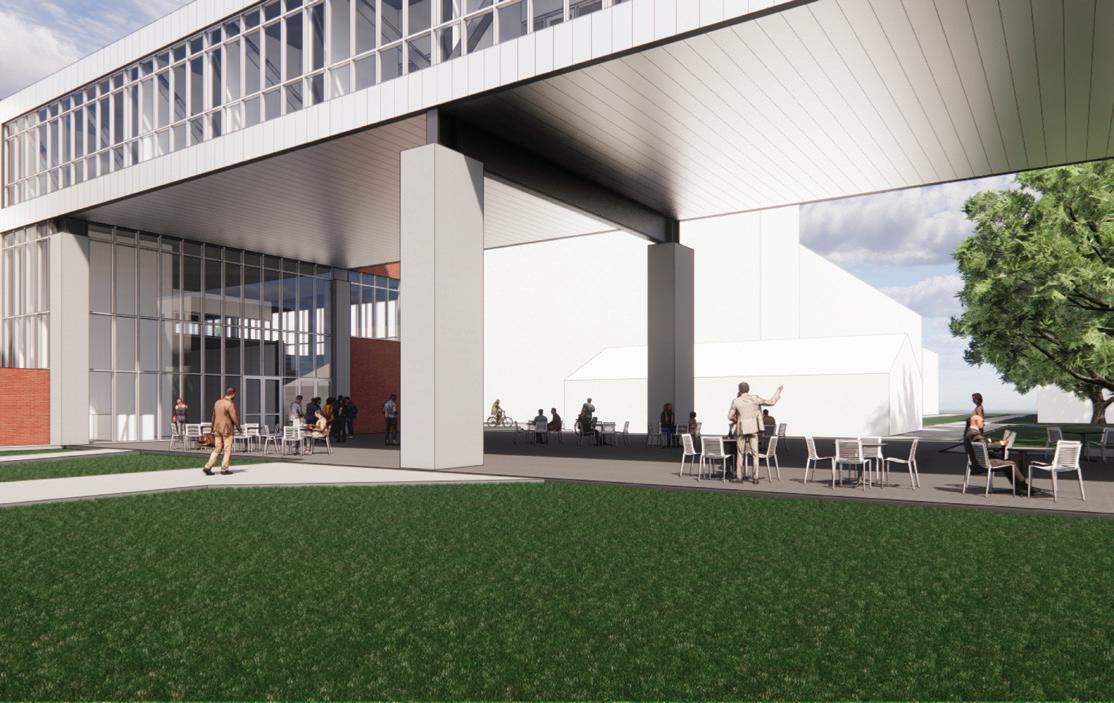

“
The tenets of service, vision and leadership are as much a part of our history as sugarcane fields and oak trees. They are the threads that tie the beginning of our story to the present day. WE INHERITED THEM FROM THOSE WHO CAME BEFORE. AND WE WILL LEAVE THEM FOR THOSE WHO COME AFTER.
Dr. E. Joseph Savoie, University President, in the 2023 State of the University speech
30 LA LOUISIANE | SPRING 2024
Engineering Classroom Building Lab School
“
For three decades, when the azaleas began to blossom and students’ summertime cravings reached a crescendo, Phil Beridon prepared to take the plunge. The former student took the day off from work, dressed in his finest tuxedo, and returned to campus for a little something extra.
Standing on the red-brick wall surrounding Cypress Lake, Beridon led a backward countdown from 10. And as an eager chorus of students reached “one,” he lifted his hands to the sky and leapt –headfirst – into the managed wetland in the heart of the University of Louisiana at Lafayette campus. Over the years, he perfected a midair twist, landing with a graceful back flop before waving to the audience. Beridon served as a producer and member of the board for the Abbey Players Theatre in Abbeville, but this on-campus performance made him famous. The act he began spontaneously for a video shoot during his college years continued until his death in 2006.
For outside observers, voluntarily diving into a swamp might seem unusual. For University students, watching Beridon jump into Cypress Lake (with the option to join him after) was a centerpiece of the perfectly irrational revelry of Lagniappe Day.
Lagniappe Day was born in 1974 after the NCAA put the basketball team on suspension for two years. The University planned the festivities to boost morale. It caught on fast. Lagniappe Day is now a time-honored tradition and is celebrating its 50th anniversary in 2024.
“Lagniappe” means “a little something extra” in Cajun French. On Lagniappe Day, students take time away from classes to relax and “pass a good time.” What this looks like has evolved. More recently, students have decompressed by racing canoes, competing
BY KATHERINE FRAZER
in jalapeno-eating contests and listening to live musical performances.
But for 50 years, the staple of the event has been a campus-wide crawfish boil – with the average feast in recent years topping out at 20,000 pounds.
Glenn Menard worked as the director of the Student Union after graduating in 1971. He described Lagniappe Day’s early years as a cross between a county fair and music festival. One year, the crawfish were not delivered in time and jambalaya was served instead. That didn’t go over so well, he recalled.
“The next time the contract came up, there was a provision in there that said they had to have 10,000 pounds of crawfish on the loading dock at the Student Union 24 hours before the crawfish boil so we could physically see them,” Menard said.
The anomaly of a giant crawfish boil and administration-approved skip day drew disapproving headlines in Lagniappe Day’s earliest years, but for students, it epitomized the joys of south Louisiana life, and still does. Dr. Annie Wingate Spell graduated from UL Lafayette in 2002 and helped carry on the Lagniappe Day tradition as Student Government Association treasurer.
“It’s one of the events that is quintessential to the culture,” Spell said.
For Spell, a third-generation alumna, Lagniappe Day is reflective of the generosity that permeated her student experience. She said the University’s emphasis on adding a little something extra extends past the springtime festivities. The commitment from staff, faculty and her peers followed her for the rest of her life.
“That is somewhat an unexpected gift,” Spell said. “Their extra time, their extra attention, their extra motivation toward me as a student who wanted to do well.”
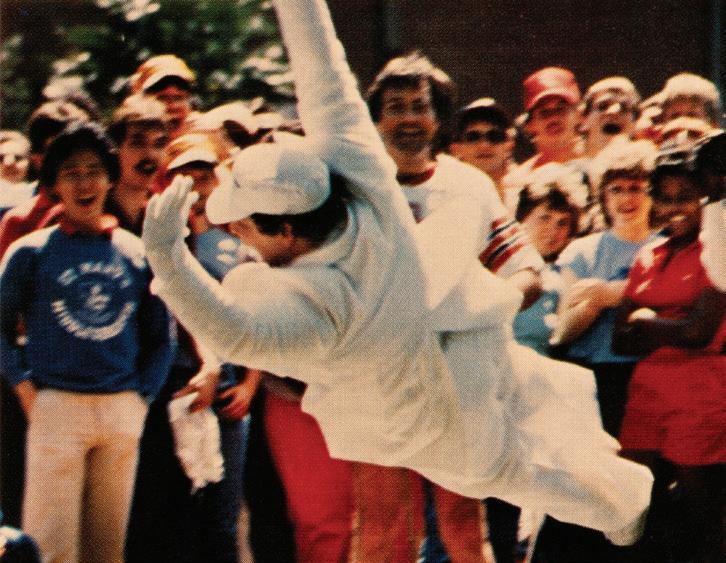
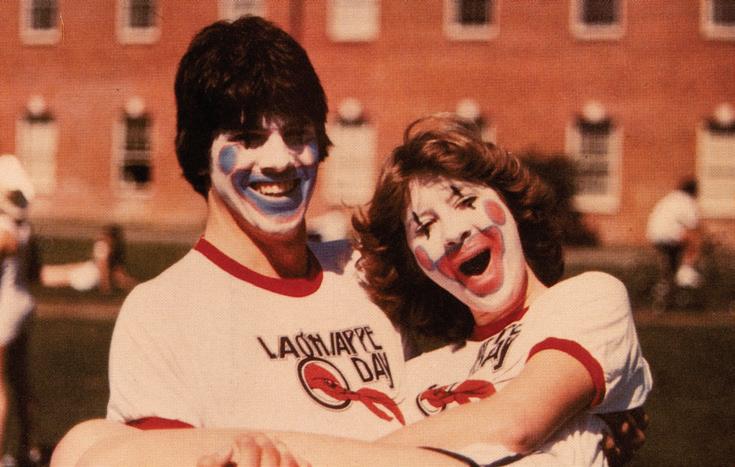
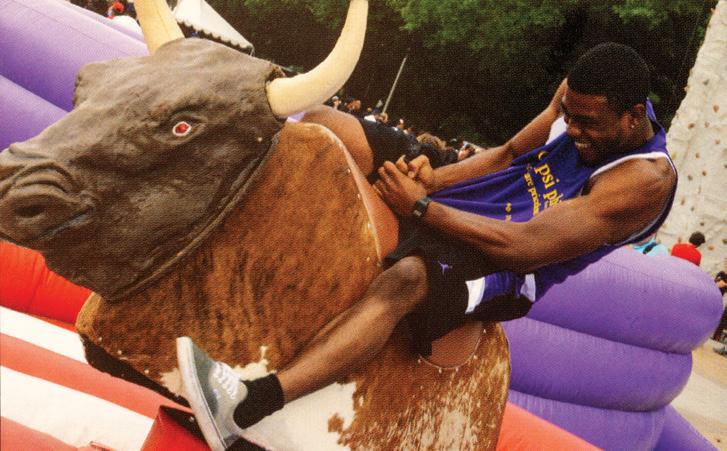

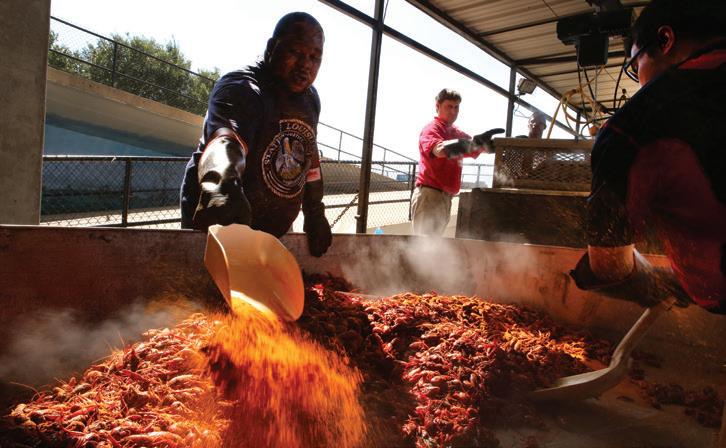

LA LOUISIANE | SPRING 2024 31


SUN KING

Researcher shines as international force in solar energy
by charlie bier
DOUG DUGAS

The College of Engineering’s Dr. Terrence Chambers traces the origins of his career to a 22-acre plot of land in Kansas bordered by wheat fields. There, just outside the family home and “miles from anything,” sat his father’s aviation mechanic’s business. Federal Aviation Administration-mandated overhauls of airplane engines were the elder Chambers’ specialty. He catered to pilots and planes from nearby Wichita, where the presence of some of the world’s largest aerospace manufacturing companies make the city the “Air Capital of the World.”
Young Terry’s world revolved around the 12,000-squarefoot building that held the family business. The workspace provided a playground that became a place for Chambers, at age 8, to make money. “I grew up working in that repair shop, got interested in aviation, and that’s really where my interest in engineering started,” he said. Sweeping floors and emptying trash cans gave way to disassembling and cleaning plane engines. By age 14, Chambers had saved enough from paychecks built on 50 cents an hour to buy a $500 car. He transformed the 10-year-old clunker “into a hot rod at the shop, because we had all the tools. My dad and my uncle mentored me.”
The brothers did a good job – and received a nice return. Chambers soon graduated to repairing and reassembling plane engine accessories. He also leaned on skills acquired in a high school mechanical drawing class to draft blueprints for a turbocharger kit his father invented and marketed. The turbocharger was designed to enable planes to climb higher and fly faster. Chambers helped to outfit it with instrumentation and install it on a Cessna airplane for test flights. As his father piloted the plane, Chambers compiled flight data that was later analyzed with input from a professor at a nearby university. “We needed to see if our modifications would change the plane’s weight balance or cause problematic vibrations or other issues,” Chambers explained. “I guess you could say it was my first research and development project.”
LA LOUISIANE | SPRING 2024 33
Dr. Terrence Chambers among the Louisiana Solar Energy Lab’s 4,200-panel solar field.
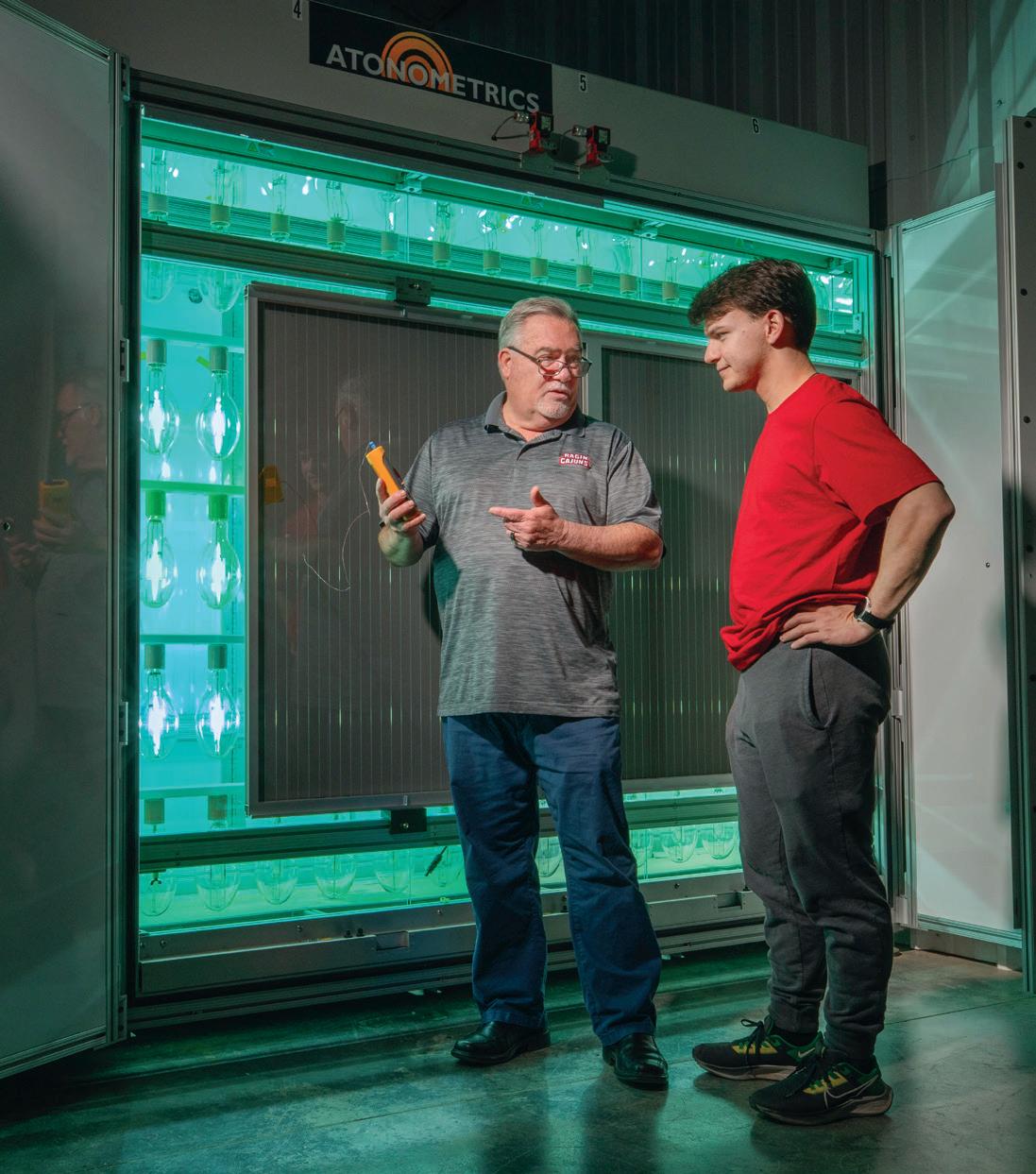
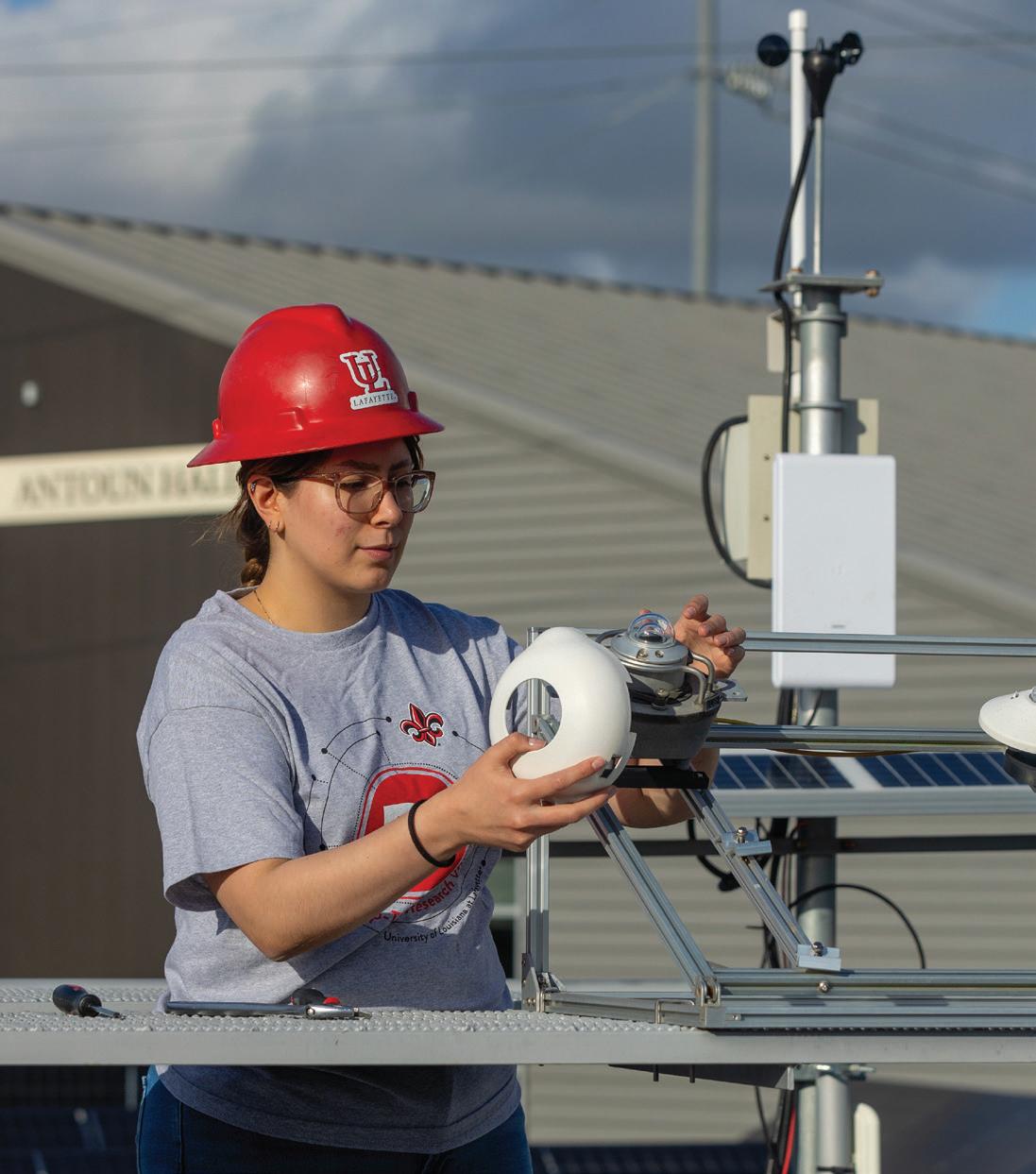
During high school, his proficiency in Science, Technology, Engineering and Mathematics, or STEM, subjects brought a full scholarship to Brigham Young University in Provo, Utah. Chambers enrolled intent on studying aeronautical engineering. “But, an aeronautical engineer advised me to study mechanical engineering. He said, ‘With mechanical, you can do aero, but also automotive, manufacturing…it’s a broader field.’” Chambers heeded the advice. It turned out to be a wise decision. After graduating from BYU in 1986, he couldn’t find aeronautical engineering work. Chambers instead landed at the Naval Undersea Warfare Engineering Station in Keyport, Washington, conducting performance and reliability studies on U.S. Navy torpedoes. It was a satisfying job, though not in the field Chambers wanted. He continued pursuing aeronautics, and hearing a similar refrain during job interviews: “It would be, ‘OK, what have you been doing lately?’ And I’d say, ‘Torpedoes.’ And they’d say, ‘Well, we don’t have any flying torpedoes here,’” Chambers said with a laugh.
Feeling pigeonholed, he returned to BYU, set on adding a master’s degree in engineering design to his bachelor’s degree in mechanical engineering. “I intended to complete the requirements as quickly as possible, then remarket myself in aviation,” Chambers explained. An academic committee, however, grounded those plans after reviewing his master’s thesis prospectus. The topic –combined use of AI and traditional mathematical methods for design optimization – was to blame. At a time when AI represented nothing more than an odd pairing of vowels for most people, Chambers’ cutting-edge ideas about artificial intelligence wowed the committee. “It recommended I take a few extra classes, write a dissertation rather than a thesis and get a Ph.D. in mechanical engineering. I was like, ‘You can do that?’ And they were like, ‘Oh yeah, it’ll be easy.’ So, five years later,” Chambers said wryly, “I got my Ph.D.”
The commitment paid off. Chambers attracted interest from industry and academia – and watched the door to aeronautics
swing open. In 1995, he accepted a position at Lamar University in Beaumont, Texas. “The department head who hired me, Dr. William Simon, had spent about three decades at NASA and brought me in to do NASA-sponsored research,” Chambers explained. At NASA, Simon had worked on Project Apollo that sent the first astronauts to the Moon and the International Space Station. Of hiring Chambers at Lamar, Simon recently said: “It was one of the best moves I ever made. We wrote 14 proposals for NASA and 13 were funded. Terry was simply outstanding in every way.” So good, in fact, that Simon hired Chambers twice. After leaving Lamar for UL Lafayette, he recruited Chambers to follow. “I ended up learning as much from Terry over the years as he learned from me,” said Simon, who retired from UL Lafayette in 2021.
Chambers’ tenure at the University began in 1997 as an assistant professor. His focus was teaching and researching disciplines such as design optimization. Much has changed since. Chambers has evolved into an internationally recognized authority on solar energy technologies. His wide-ranging expertise includes photovoltaics, solar thermal, thermal energy storage and systems design. Chambers’ research extends to other renewable areas, including green hydrogen and electric vehicles. He also excels in fields such as virtual reality, artificial intelligence, genetic algorithms and programming, and engineering software development. Chambers is an able administrator, too, having served as associate dean for six years under Dr. Mark Zappi, the College of Engineering’s former dean.
Zappi is now executive director of the Energy Institute of Louisiana, the University’s comprehensive research unit for traditional and sustainable energy. Among the institute’s many centers and labs are several led by Chambers, including the Green Hydrogen Center of Excellence and the Louisiana Solar Energy Lab. “Terry is one of those rare researchers who’s always thinking about the technical and application side of his research, about how it affects the user community and industry. He’s always searching
34 LA LOUISIANE | SPRING 2024
Dr. Terrence Chambers and student researcher Wyatt Stoute next to a light-soaking chamber.
Student Maritza Guadarrama conducting research outside Antoun Hall with a pyranometer, which measures solar energy.
DOUG DUGAS DOUG DUGAS
for the next big solution,” Zappi said. “And he’s just such a generous guy. He has a true gift and passion for helping students and young faculty and staff progress.” Chambers, the Donald and Janice Mosing BORSF Endowed Chair in Mechanical Engineering, also shines in the classroom. He has earned two Eminent Faculty Awards from the UL Lafayette Foundation – the Dr. Ray P. Authement Excellence in Teaching Award and the Leadership Service Award. Eminent Faculty Awards are the highest recognition the University confers on faculty members.
Terry is one of those rare researchers who’s always thinking about the technical and application side of his research, about how it affects the user community and industry. He’s always searching for the next big solution.
Dr. Mark Zappi, executive director enerGy institute of louisiana
For Chambers, it all adds up to a successful, rewarding career that leaves aeronautics crossing his mind only when he feels nostalgic about his youth. “I’ve got my dream job. And besides, I’ve got access to the biggest, coolest toys,” he said. Chambers isn’t kidding. In this case, he’s referring to the Louisiana Solar Energy Lab, located at University Research Park. The lab’s 4,200-panel solar field makes it one of the largest outdoor solar testing facilities in the southeastern United States. The solar array is adjacent to Antoun Hall, a 4,500-square-foot building that holds state-of-the-art solar testing equipment, a classroom, a conference room and other amenities. As a whole, the Louisiana Solar Energy Lab offers “a hub for research, operational testing and technology development,” said Chambers, who oversaw its formation. Just as notably, he added, the lab is a hub for economic and workforce development, providing instruction and training to meet industry needs.
Case in point: First Solar, the largest solar energy manufacturer in the Western Hemisphere, announced in October it will build its fifth U.S. manufacturing facility in New Iberia, La. Along with research and technology development, the Louisiana Solar Energy Lab will educate and train students and industry professionals to fill many of the more than 700 direct jobs the manufacturing giant will bring to Acadiana. First Solar’s chief executive officer, Mark Widmar, summed up the state’s and the University’s reputation, innovativeness and significance as an energy leader this way: “As we evaluated our options, Louisiana’s ability to deliver the talent we need stood out, thanks to its extensive workforce development initiatives and the presence of academic institutions such as the University of Louisiana at Lafayette which now features a worldclass solar energy lab.”
For his part, Chambers traces his role in the University’s status
as an international leader in solar research and technology to Zappi, “who tapped me to be our solar guy about 15 years ago.” In 2010, planning began on the University’s Cleco Alternative Energy Center in Crowley, La. Researchers there examine methods for generating power by using renewable resources, including solar. Commissioned in 2012, the center houses the nation’s first pilot-scale solar thermal power plant owned and operated by a university. Among the center’s infrastructure are two banks of large, parabolic-shaped troughs that capture sunlight for producing electricity via concentrating solar thermal technology. “That was the dominant solar technology when we got started at the center, and we’ve been doing solar-related work there ever since,” Chambers said.
Other technologies evaluated at the alternative energy center include biomass-fed gasification, torrefaction, anaerobic digestion and, most recently, green hydrogen. UL Lafayette will install hydrogen test beds at the center after receiving a $6 million award from the U.S. Department of Economic Development. Chambers deflects credit for leading the University-wide effort that resulted in the H2theFuture grant. “It represents the longstanding work of dozens of researchers who collectively examine all forms of energy,” he said. “It’s also indicative of the University’s diversified, strategic push to help Louisiana and the U.S. adapt to a changing energy market. We’ve been moving very deliberately in that direction for quite some time.”
So has Chambers, who has come a long way from readying aircraft engines for FAA inspections and drafting blueprints for turbochargers. The latest feather in the researcher’s cap? The largest award in the University’s history – $87 million as part of the Hubs for Energy Resilient Operations strategic initiative. Chambers is principal investigator for the HERO initiative. Its end goal: to create a network of hubs powered by distributed solar and battery microgrids that provide communities with access to electricity and other vital services during natural disasters. The lead role the University will play in the multi-entity HERO (see sidebar) rests on “the capabilities and capacities at our multi-use facilities, which continue to grow and evolve,” Chambers explained. “We just keep moving forward and creating new opportunities by leveraging and building on what we already have.” So does Chambers.
Historic grant supports HERO-ic effort
The largest award in University history – $87 million as part of the Hubs for Energy Resilience Operations strategic initiative – carries an objective as substantial as the allocation.
The HERO initiative will provide access to electricity and other vital services during natural disasters by way of a network of Community Resilience Hubs powered by distributed solar and battery microgrids. The University will produce the microgrids at its Louisiana Solar Energy Lab, New Iberia Research Center, and Cleco Alternative Energy Center. The statewide network of microgrids will be integrated with utility-owned electrical grids
and backup energy generation sources, bolstering emergency response capabilities.
The University will also collaborate with clean energy company Power Strategies to build microgrids at several Louisiana National Guard bases, and train workers to install the microgrids. As a whole, the HERO initiative is being funded with a $250 million grant from the U.S. Department of Energy, coupled with a $250 million match from state partners. The University’s $87 million award makes it the largest single recipient of HERO initiative funding.
LA LOUISIANE | SPRING 2024 35
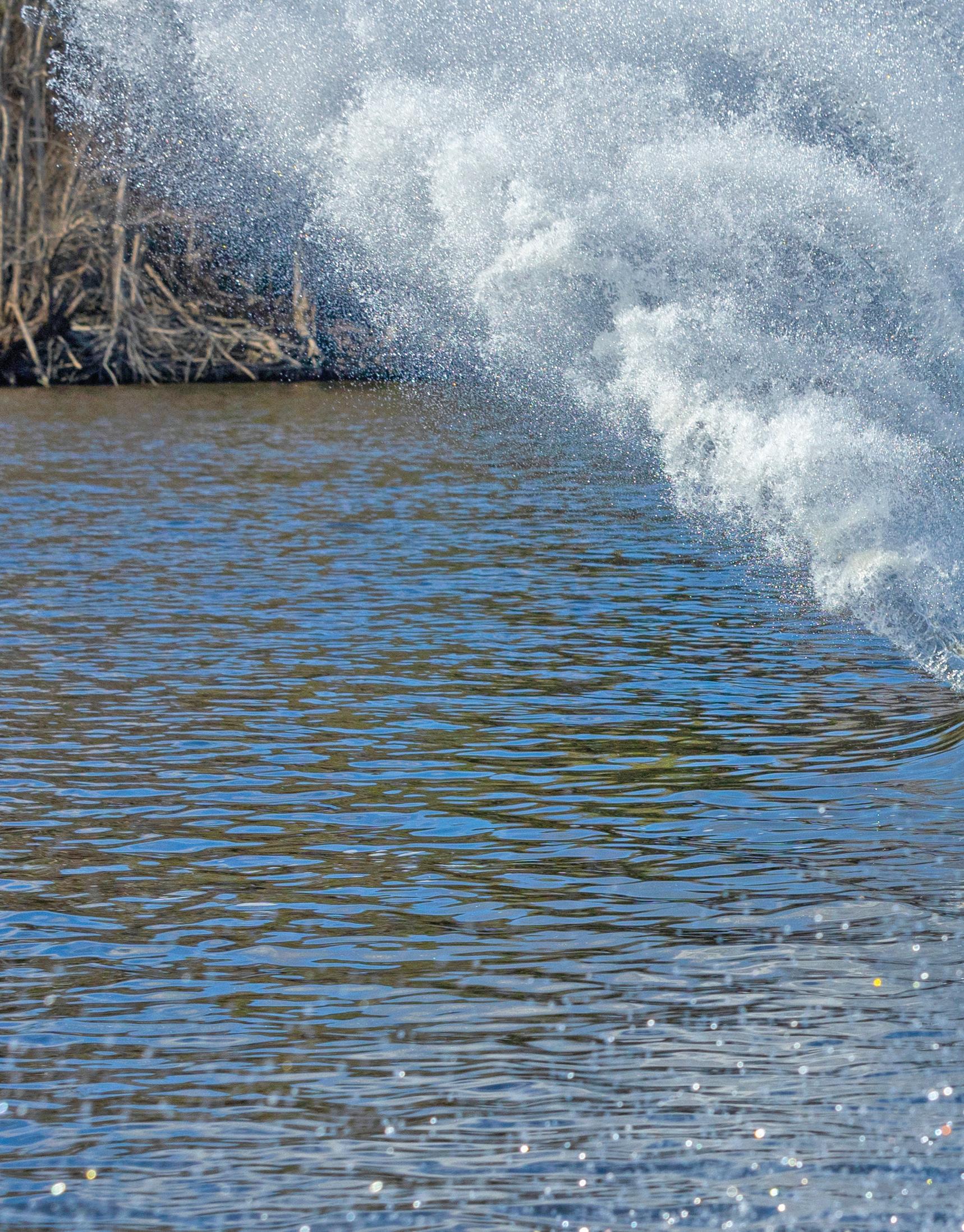
Domination

National title run cements Ragin’ Cajuns Water Ski Team’s status as country’s best
BY CHARLIE BIER
The Ragin’ Cajuns Water Ski Team has won the last four national championships for a total of 10, the second-most national titles by any team in the intercollegiate club sport’s history. Had COVID-19 not canceled the 2020 National Collegiate Water Ski Association championships, “I’m confident we’d have 11 titles and five in a row,” said Ryan Gonzales, the team’s volunteer head coach.
Gonzales, UL Lafayette’s assistant director of Veteran and Military Student Services, makes a good point. The team hasn’t been beaten in competition of any kind since 2019, a nod to the sort of dominance that brought it national championships in 2023, 2022, 2021, 2019, 2015, 2010, 2005, 2003, 1997 and 1995. The dynasty took shape quickly after the team’s founding in 1988. Since 1994, it has placed first or second at the national championships every year but two, carving out an international reputation as a collegiate powerhouse. “We’ve become known around the world as the place to send your kids to become champions,” Gonzales said.
Last year’s championship team included studentathletes from nine countries – the U.S., Argentina, Austria, Canada, England, Germany, Italy, New Zealand and Switzerland. Among them were Kennedy Hansen, who is from Florida, and Edoardo Marenzi, who is from Italy. The skiers claimed overall 2023 national championships in women’s and men’s individual competition, respectively. Assistant coach Harry Spavin, a former team member from England, cited “word of mouth” as the reason “so many high-level water skiers from across the globe choose to enroll at the University.”
“Waterskiing is a small world. Everyone hears about our success, our degree programs, the city, the campus, the people, the way of life. We’re an attractive pick for the world’s best junior skiers, who want a good education and to train with the best,” said Spavin, who earned a bachelor’s degree in civil engineering from the University in 2020.
Ragin’ Cajuns water skiers also want chances to prove they’re the best – and why. That happens at the national championships, where spots are claimed based on regular season tournament performances. As with track and field,
how a team finishes depends on points accumulated by individual competitors. Scores of water skiers boosted the Ragin’ Cajuns to the team championship in 2023, but none more heavily than Hansen. She placed first in jumping and second in both slalom and tricks, the three events in which collegiate water skiers compete.
That gave Hansen, a junior majoring in kinesiology, her second individual title as overall women’s national champion in as many years. Beyond innate ability and a tireless devotion to a sport she picked up at age 3, Hansen attributes her success, in part, to the fact that “I love it here and the people here. Definitely the people. The ski team is really close. We’re a family.”
It’s a family that does more than study, practice and compete together. Club sports, which the NCAA doesn’t regulate, are dependent on grassroots efforts. While the University is among just a handful of schools that offer scholarships to water skiers, the team is largely self-run and self-supported. Like all club sports, it’s responsible for recruiting; coordinating its tournament schedule and practices; and securing sponsorships and raising money for everything from boats and gear to travel and lodging.
Student-athletes shoulder much of the load, and in ways that can be measured beyond championships, Gonzales said. Case in point: a recent documentary film – The Unknown Sport of Waterskiing. A company led by several former water ski team members created the film to counter assumptions that the sport is strictly a recreational pursuit. UL Lafayette features prominently, in interviews and in shots of academic halls, athletics facilities and research labs. There’s also footage of skiing on Airport Lake, which gives the team, unlike at many other universities, a place to train without having to drive far distances.
“The beauty of this team and what we’ve built is that the students deserve the bulk of the credit for their success, and I’m not talking only about on the water,” Gonzales said. “They’re ambassadors. They help with recruiting, train and support each other, conduct community service and shine in the classroom, too. You name it. Oh, and they win.”
Ragin’ Cajuns waterskier Kennedy Hansen, a junior, has carved out a reputation as the country’s best, winning two straight individual national championships.

FIELD WORK
Ragin’ Cajuns will kick off the 2025 season in renovated home
Louisiana Ragin’ Cajuns Football will soon have a new kind of home-field advantage. The transformation of Cajun Field to Our Lady of Lourdes Stadium will change the way football fans experience game day.
The $65 million project began late last year and is anticipated to be completed ahead of the 2025 season. Renovations to the stadium’s west side are the most significant changes to the storied home of Ragin’ Cajuns Football since the facility opened in 1971.
The stadium’s new name comes after a $15 million investment from Our Lady of Lourdes Regional Medical Center. Support from Lourdes and other investors will help “transform
the game day experience” for fans, said Dr. Bryan Maggard, vice president for Intercollegiate Athletics. “From the premium seating products, a new lower west bowl and state-of-the-art amenities, Our Lady of Lourdes Stadium will be a premier venue improving the overall atmosphere for our fans and student-athletes. This project would not have been possible without the support of University administration, Our Lady of Lourdes and so many others.”
Demolition of the west grandstands began in December and construction is now underway. No seating will be available on the stadium’s west side during the upcoming season.
Visit buildtheculture.com for the latest.

38 LA LOUISIANE | SPRING 2024
LOURDES STADIUM BY THE NUMBERS

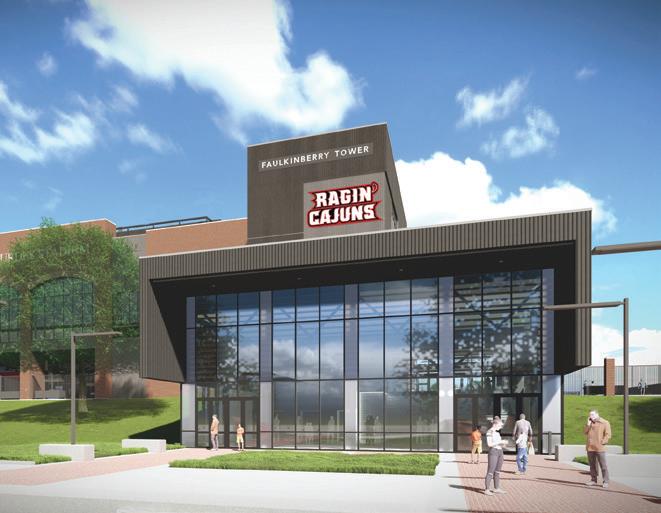
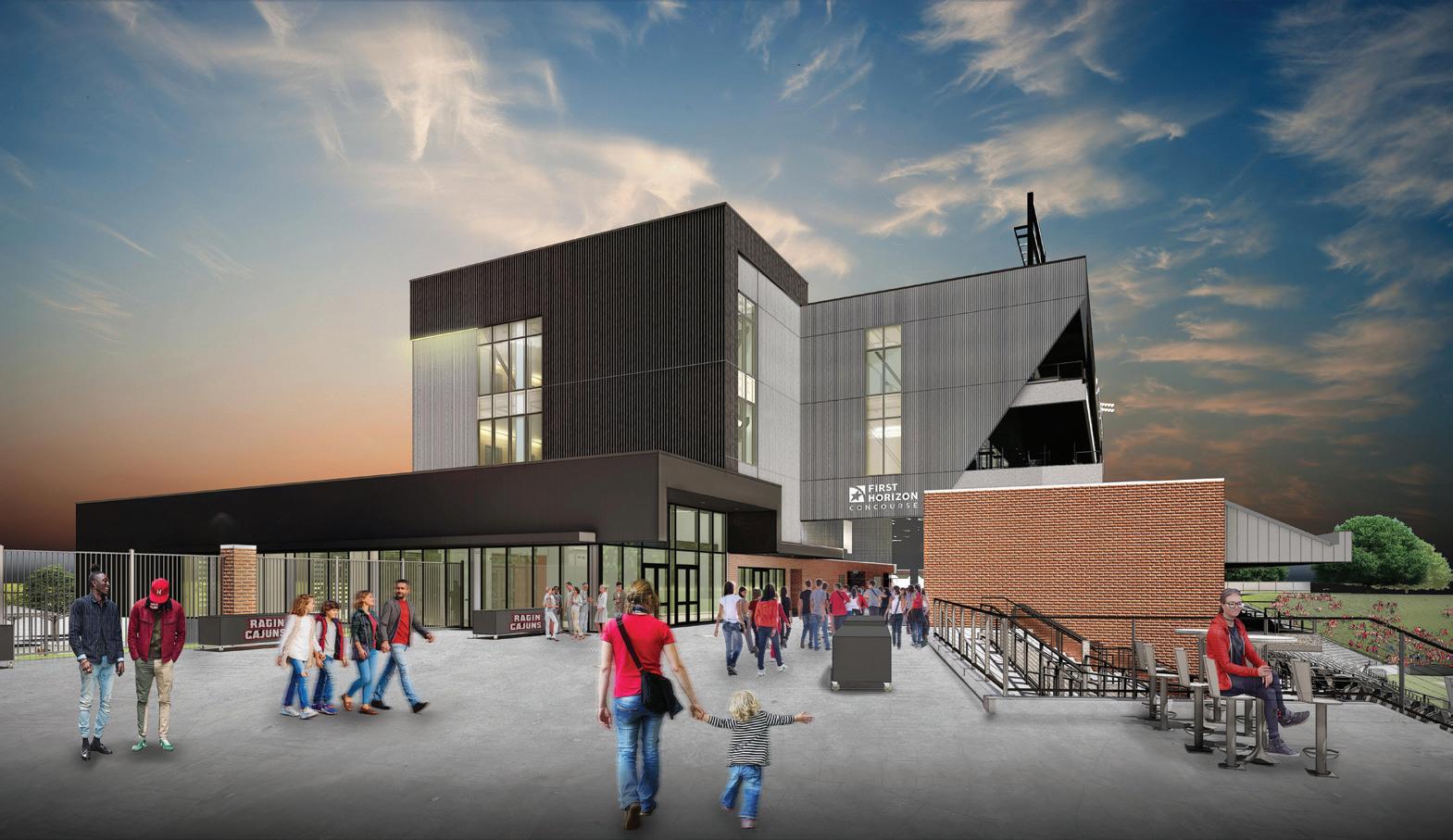

LA LOUISIANE | SPRING 2024 39
Geaux Cajuns® seating capacity suites loge boxes club seats lower bowl chair back sections 30,000+ 34 40 524 5
ENDURING LEGACY Founding Alumni president’s diploma returns to campus
BY MARIE ELIZABETH OLIVER
Pothier Jean (P.J.) Voorhies received his diploma from Southwestern Louisiana Industrial Institute in 1903, along with 17 other members of the institution’s inaugural graduating class. His imprints can still be found across Lafayette – from a Legacy Park apartment building on campus to a tiny plaque on a side door at the Cathedral of St. John the Evangelist to vintage photographs at multiple Raising Cane’s restaurants.
Voorhies served as a founding member of the basketball and baseball teams and the first president of the now-University of Louisiana at Lafayette Alumni Association in 1903. A few years ago, Voorhies’ descendants donated his original diploma to the Alumni Center. Dan Hare, the association’s director of community engagement, said the artifact is especially meaningful because it represents the rich traditions and growth initiated by that first graduating class.
“Now the Alumni Association is housed in a historic landmark and has its own staff and board,” said Hare. “It has grown tremendously, but he got it all started.”
After graduation, Voorhies launched a handful of successful businesses, primarily the Lafayette Lumber Co., where he served as general manager and president until his death in 1968. His civic leadership

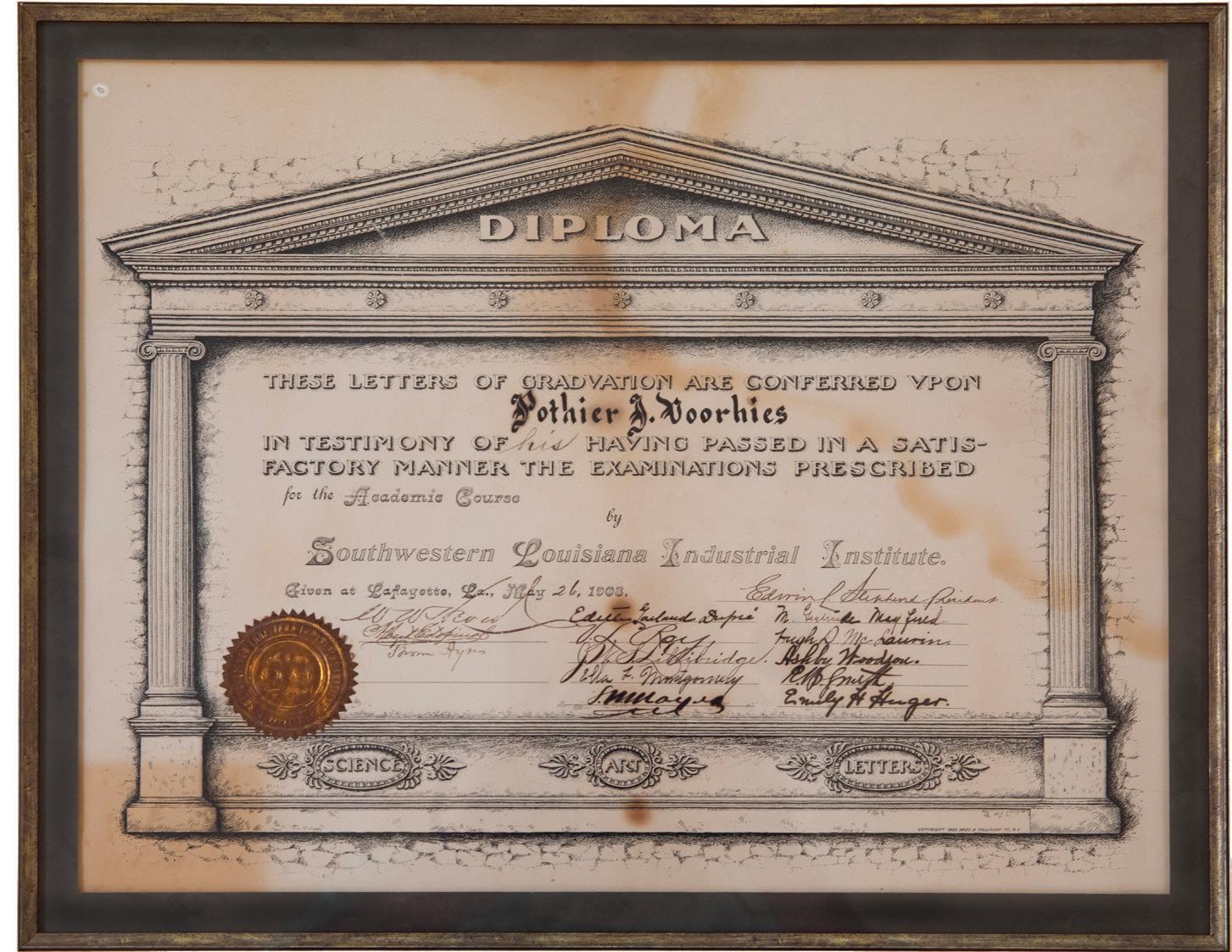
40 LA LOUISIANE | SPRING 2024
Pothier Jean (P.J.) Voorhies, the first Alumni Association president
Voorhies’s original diploma from the University’s first graduation ceremony features signatures from SLII’s founding faculty, including Edith Garland Dupré, Dr. Edwin Stephens and V.L. Roy.
SUBMITTED PHOTO

included the Knights of Columbus, Woodmen of the World, Kiwanis, Rotary Club and Boy Scouts of America, to name a few. During World War II, he commanded the South Louisiana District of the U.S. Coast Guard Auxiliary between Southwest Pass and Morgan City.
But to his family, he was simply “Grandpa” – the guy who, in his golden years, performed backflips into the water off his shiny Chris-Craft boat and took long strolls down Myrtle Place Boulevard suited up in white linen with a cup of coffee in hand. He was an avid outdoorsman and early adapter to color television, where he eagerly watched the space race unfold. And he was always singing.
“He had a music room in his house. He played any instrument you could think of – piano, organ, flute, harmonica. He had a parakeet. It sang, too,” said Voorhies’ granddaughter, Susan Henke Romero, who fondly remembers her grandfather teaching her the melodies to old songs like Till We Meet Again to sing to her grandmother.
Kenneth Henke, Voorhies’ grandson, who graduated from USL in 1966, said his grandfather took every opportunity to remind his family of the value of higher education. After Voorhies’ father died, he paid for most of his own siblings to attend SLI. He made the same commitment to his children.
“I’m sure he’d be impressed with how many generations came to be here,” said Dr. Lucy Henke, a professor of marketing in the B.I. Moody III College of Business Administration.
She said five generations of Voorhies family members have graduated from the University. Voorhies’ great-great-grandson, Sam Dunand, is currently enrolled in the Graduate School pursuing a degree in computer science, and his brother, Tucker Dunand graduated with a degree in biology in 2019.
P.J. Voorhies III, who graduated from USL in 1977, said his grandfather used the business skills he learned in school to help contribute to the development of Lafayette. He remembers his grandfather explaining how he built a subdivision near the current Heritage Apartments to house faculty at SLI. “He built just about all the houses in the Saint Streets,” he added.
His son, P.J. “Sport” Voorhies IV, played on the Louisiana Ragin’ Cajuns baseball team one century after his great-grandfather. Voorhies said he wasn’t aware of the connection until he received a call for an interview after his team played in the NCAA College World Series in 2000. “I don’t know who figured it out and realized it, but I brag about it now,” he laughed.
Richard Henke, Voorhies’ grandson who graduated from USL in 1978, recalls how proud his grandfather was of being one of the first fullbacks on the football team. He said he loved to tell the story of the team’s first game, where they had only seven players and had to borrow four from the opposing team – Lake Charles High School. “I think they won,” Henke said.
Hare said the Alumni Association plans to hang Voorhies’ diploma in a prominent location for visitors to view.
LA LOUISIANE | SPRING 2024 41
Voorhies’s descendants gathered recently on campus. From left are Sharon McCarthy, ’67, Richard Henke, ’78, Mike Voorhies, ’75, Mary Henke Prudhomme, Kenneth Henke, ’66, P.J. “Sport” Voorhies IV, ’05, P.J. Voorhies III, ’77, Susan Henke Romero and Dr. Lucy Henke.
PAUL KIEU
1960s
The Upper Peninsula Poet Laureate Foundation selected DR. BEVERLY MATHERNE, ’69, ’71, as its 20232024 poet laureate. Matherne will promote poetry through interactive lessons and writing activities in schools and through public readings. She is professor emerita of English at Northern Michigan University. The author of seven poetry books, she is a recipient of the Hackney Literary Award for Poetry. She earned a doctoral degree in drama from St. Louis University and bachelor’s and master’s degrees in English from USL.
WARREN PERRIN, ’69, is an attorney, author and internationally recognized advocate for the FrenchAcadian heritage. His latest book is The Weight of History, the Power of Apology: Remembering Lifter David Berger 50 Years After the Munich Olympics. Published in 2023, it tells the story of a friend of Perrin’s who was among 11 Israeli athletes killed by terrorists during the 1972 Olympic games. Perrin is married to MARY BROUSSARD PERRIN, ’70, ’03, a preservationist and author.
1970s
ANTHONY LANDRY, ’71, is a retired MetLife insurance agent. He and his wife, Linda Breaux Landry, are the parents of two daughters, including CALLIE LANDRY SAWVEL, ’05, who holds a bachelor’s degree in insurance and risk management from UL Lafayette.
JOHN S. COMEAUX, ’76, and PHYLLIS COMEAUX, ’79, have written three novels. Their latest, Winnie and the Voodoo Trolls, is scheduled for publication in 2024. John holds a bachelor’s degree in chemical engineering and worked for Chevron for 40 years. Phyllis
earned a bachelor’s degree in biology from USL, a bachelor’s degree in physical therapy from LSU, and a master’s degree from Texas Women’s University. She worked as a pediatric physical therapist and was director of Women’s and Children’s Hospital’s therapy department in Lafayette. The couple have three children, including JULIE LEMAIRE, ’13, who earned a bachelor’s degree in business management from the University.
1980s
CONNIE ALPOUGH WRIGHT, ’82, is a registered health information administrator and certified coding specialist. She holds a bachelor’s degree in medical records.
Louisiana-based Investar has named HOLLY HIDALGO-DEKEYZER, ’83, its chief banking officer. HidalgoDeKeyzer has been with the bank since its 2006 founding. She previously worked 18 years for Hibernia. The New Orleans native holds a bachelor’s degree in finance.
DR. HOLLIS MICHAEL TARVER, ’83, ’90, is a retired professor of history. Tarver served two terms as chair of the Arkansas History Commission. He holds a bachelor’s degree in general studies and a master’s degree in history from USL, and a doctoral degree in history from Bowling Green State University. From 2002 to 2023, he was a professor of history at Arkansas Tech University and was dean of its College of Arts and Humanities.
The American Association of State Colleges and Universities named CLAIRE BABINEAUX-FONTENOT, ’85, as its 2023 Distinguished Alumnus. She is CEO of Feeding America, the nation’s largest domestic charity and its largest hunger-relief organization. She
earned a bachelor’s degree in criminal justice from the University, which honored her with its 2023 Distinguished Alumni Award; it’s the highest recognition UL Lafayette bestows on graduates. Before joining Feeding America, she held leadership positions at Walmart, PwC, and Adams and Reese LLP. In 2020, she was named one of Time magazine’s “100 Most Influential People.”
WUI LIAN SEOW, ’87, is a senior manager of cargo operations with Singapore Airlines. He earned a bachelor’s degree in management. He is the father of JIA YING JOLYN SEOW, ’23, who holds a bachelor’s degree in mass communication, and JING WEN JOANN SEOW, who is pursuing an undergraduate degree in mass communication.
1990s
The LSU Office of Research & Economic Development named DR. STEPHANIA CORMIER, ’91, its associate vice president of health and human security. Cormier earned a bachelor’s degree in biology and chemistry from UL Lafayette and a doctoral degree in biochemistry and molecular biology from LSU Health New Orleans.
DIANA CASH LENNON, ’93, has published her second children’s book, Pets and the Fruit of the Spirit. The illustrated book explains how pets display nine characteristics – love, peace, patience, joy, generosity, gentleness, kindness, faithfulness and selfcontrol. She holds a bachelor’s degree in mass communication.
JULIE PICHAUFFE HAMMONDS, ’96, earned a master’s degree in human services from East Tennessee State University in December 2023. She holds a bachelor’s degree in
child and family studies from UL Lafayette.
DR. MARCY BOUDREAUXJOHNSON, ’97, ’02, is a reading interventionist at Prairie Vale Elementary School in Edmond, Oklahoma. She was selected as Prairie Vale’s 2021 Teacher of the Year and the Deer Creek School District’s 2021-2022 Teacher of the Year. She was one of 12 finalists for the Oklahoma Teacher of the Year Award in 2023. She earned a bachelor’s degree in special education and a master’s degree in curriculum and instruction, both from UL Lafayette, and a doctoral degree in education from LSU.
2000s
TIA TRAHAN, ’02, principal of Lafayette Middle School, is Louisiana’s 2023 Principal of the Year. She was the 2007 Lafayette Parish School System Teacher of the Year. Trahan earned a bachelor’s degree in elementary education from UL Lafayette and a master’s degree in educational leadership from LSU Shreveport.
The Louisiana Science Teachers Association honored DR. SARAH BERGERON, ’05, with its 2023 William Craig Outstanding University Educator Award. It recognizes university faculty members who have made meaningful connections with K-12 educators and their students. Bergeron joined the Nicholls State University faculty in 2020 as an assistant professor of chemistry. She holds a bachelor’s degree in microbiology from UL Lafayette and a doctoral degree in molecular and cellular biology from the University of Iowa.
CHRIS WELCKER, ’05, received an Emmy for Outstanding
42 LA LOUISIANE | SPRING 2024
Sound Mixing for a Limited or Anthology Series or Movie for his work on the Amazon Prime and Hello Sunshine series Daisy Jones & The Six at the 75th Emmy Creative Arts Awards held earlier this year. The New Orleans native’s work on Daisy Jones also earned him a Cinema Audio Society Award nomination. Welcker’s previous credits include Keanu (2016), a Key & Peele comedy feature; the Mötley Crue biopic The Dirt (2019); and Bill and Ted Face the Music (2020). He holds a bachelor’s degree in music media.
The Milken Family Foundation honored CHRISTINE BAYARD, ’09, ’17, with a $25,000 Milken Educator Award. She is one of 75 educators from across the U.S. to receive the award during the 2023-2024 school year. Bayard is a sixth-grade math teacher at Johnston-Hopkins Elementary School in New Iberia, La. She earned a bachelor’s degree in psychology and later completed the alternative teacher education program in middle school math.
2010s
ANDRÉ ALBERT FAVORS, ’11, ’13, is an instructor in the Department of Communication and Media at Lamar University in Beaumont, Texas. The Southeast Texas Young Professionals Organization named him a 2023 “40 Professionals Under 40” honoree. Favors holds bachelor’s and master’s degrees in communication from UL Lafayette.
CHANEY M. BENNETT, ’13, is an upper exceptional student services resource teacher at Broadmoor Elementary School in Baton Rouge. She works with students in third through fifth grades. Bennett holds a bachelor’s degree in English literature.
DR. TRACY MAY STONE, ’14, is an assistant professor of
English at LSU Eunice. McFarland published her Reading the Great American Zombie: The Living Dead in Literature in 2023. The book evolved from the dissertation Stone wrote while pursuing her doctoral degree in English at UL Lafayette.
ANDREW M. ALBRITTON, ’17, is among 20 young lawyers named to the Leadership Louisiana State Bar Association’s 2023-2024 class. Albritton is an associate in the New Orleans office of McGlinchey Stafford. He was a 2023 finalist for the Louisiana State Bar Association Young Lawyer’s Hon. Michelle Pitard Wynne Professionalism Award. Albritton holds a bachelor’s degree in business administration from UL Lafayette and earned his law degree from Tulane.
BRANDY MILLIMAN ROY, ’17, co-owns and operates Southern Magnolia Soirée LLC, a wedding and events venue in Broussard, La. Her business partner is TORI LEBLANC-ARCENEAUX, ’17, who holds a bachelor’s degree in education from UL Lafayette. Roy earned a bachelor’s degree in art education from the University. She also works as a teaching artist with the Acadiana Center for the Arts.
DR. JEREMI EDWARDS, ’19, is scheduled to make his international music debut as one of 12 composers selected for the Alba International Music Festival in Italy in summer 2024. Edwards is an assistant professor of music at McNeese State University in Lake Charles, La. He earned a bachelor’s degree in music education from McNeese, a master’s degree in music theory and composition at UL Lafayette, and a doctoral degree in music education from LSU.
IN MEMORIAM
BRAXTON “B.I.” MOODY III, ’49, namesake of the College of Business Administration, died Sept. 13, 2023. He was 97. Following service in the U.S.
Navy during World War II, the Acadia Parish native earned a bachelor’s degree in accounting from SLI. Moody was a founding partner of the CPA firm Moody, Broussard, Poché and Guidry. He later served as president and CEO of Chart House Inc., which operated numerous restaurants in several states. He was chairman of the board for First National Bank in Lafayette and Louisiana State Newspapers, which publishes 22 newspapers. The University awarded him an honorary doctorate in business administration in 2017. He and his wife, the former Thelma Hebert, had nine children, ROSALIND ROBERTSON, ’70, BRAXTON I. MOODY IV, ’74, VALERIE HENSGENS, ’74, Beverly Lagroue, Kathy Hundley, KEVIN MOODY, ’80, Charlotte Leonards, STEPHEN MOODY, ’89, and Elizabeth Gielen.
FLORIAN “FLO” MONTTE LANDRY, ’53, died Aug. 22, 2023, at 91. While pursuing a bachelor’s degree in elementary education at SLI, she met ROY LOUIS LANDRY, ’52. The couple later married and had five children, GREGORY LANDRY, ’78, DEBORAH BROWN, ’80, PATRICK LANDRY, ’83, retired director of University Computing Support Services, VIRGINIA WALKER, ’85, and STEPHEN LANDRY, ’93
JOHN MAMOULIDES, ’54, who served 24 years as Jefferson Parish district attorney, died Aug. 1, 2023. He was 90. A native of Crowley, La., he earned a bachelor’s degree in business administration from SLI before completing a law degree at Tulane in 1960. He was a U.S. Air Force veteran. Mamoulides was elected district attorney in 1972 and held the position until 1996. He served two terms as president of the Louisiana District Attorneys Association.
KARLEEN GUILBEAU BARRY, ’55, ’76, a Cajun humorist,
storyteller and cookbook author, died Oct. 23, 2023. She was 90. While still in high school, the St. Landry Parish native adopted the stage persona of “Madame Sauce Piquante” and performed at conventions and on radio and television. While pursuing a bachelor’s degree in home economics, she was a member of the Red Jackets spirit squad. She later earned a master’s degree in education from the University. Barry taught second grade at Sunset Elementary School. Her husband, DR. JOSEPH ROBERT BARRY JR., taught horticulture at the University. The couple had eight children, ROBERT BARRY III, ’75, D’ANN PLAUCHE, ’81, DR. MICHAEL D. BARRY, ’81, KARL BARRY, ’83, DR. MARK G. BARRY, ’92, DR. TIMOTHY J. BARRY, ’90, Linda B. Player and the late Dr. Charles P. Barry.
WILMA BOURQUE LANDRY, ’55, died Dec. 31, 2023, at age 90. The Milton, La., native earned a bachelor’s degree in home economics from SLI, then taught at Church Point, Youngsville, Milton and Comeaux high schools. She also ran a successful catering business.
DR. REXFORD C. HAUSER, ’56, died Dec. 31, 2023. He was 93. Hauser was instrumental in the development of the University’s MBA program and served as its first director. After becoming dean of the College of Commerce in 1977, he helped oversee its name change to the College of Business Administration. A native of New Iberia, La., Hauser was a U.S. Army veteran. Following his discharge in 1953, he took advantage of the G.I. Bill to pursue a bachelor’s degree in business administration at SLI. He later earned an MBA from LSU and a doctorate from the Harvard University Graduate School of Business Administration. Hauser was the College of Commerce’s Outstanding Professor in 1970 and was among the USL Foundation’s
LA LOUISIANE | SPRING 2024 43
ALUMNI INFORMATION FORM
If you enjoy reading about where your former classmates are now and what they’re doing, consider this: They’d like to read about you, too. Please fill out the form below and mail it back to UL Lafayette or go to louisiana.edu/lalouisiane to submit the information online. NAME FIRST MIDDLE LAST MAIDEN NAME ADDRESS
Distinguished Professor honorees in 1972. Hauser was a member of the board of directors of Our Lady of Lourdes Regional Medical Center; he was the first lay person to serve as board chair. Hauser retired from USL in 1994. Hauser’s wife of 69 years, DORIS CONZELMANN HAUSER, ’51, a retired educator, preceded him in death.
development of Moncus Park in Lafayette, Mazie Movassaghi died Dec. 3, 2023, at age 79. The couple had two children.
E-MAIL
MAJOR & DATE OF GRADUATION
OR THE SEMESTER YOU LAST ATTENDED THE UNIVERSITY
CURRENT JOB TITLE
BUSINESS NAME
BUSINESS ADDRESS
PROFESSIONAL DUTIES
ACCOMPLISHMENTS
SPOUSE’S NAME
FIRST MIDDLE LAST MAIDEN NAME
SPOUSE’S USL OR UL LAFAYETTE GRADUATION DATE
AND MAJOR, IF A FORMER UL LAFAYETTE STUDENT
CHILDREN
(IF ANY ARE UL LAFAYETTE STUDENTS OR USL GRADUATES, PLEASE INDICATE)
CURRENT DATE
Please mail this form to P.O. Box 43567, Lafayette, LA 70504-3567 or email your information to lalouisiane@louisiana.edu
ALLISON “BOB” MECHE, ’61, died April 26, 2022. He was 88. He served in the U.S. Air Force before completing a bachelor’s degree in business from USL. In 1976, Meche founded Amko Fence in Gonzales, La., and operated the business until his retirement in 2001. He served on the Ascension Parish Library Board for 25 years and was president of the Gonzales Chamber of Commerce. A daughter, ROBIN KUBE, ’86, is among his survivors.
DR. KAM MOVASSAGHI, ’63, retired professor of civil engineering and former secretary of the Louisiana Department of Transportation and Development, died Nov. 2, 2023. He was 83. Movassaghi held a bachelor’s degree in civil engineering from USL; he later earned master’s and doctoral degrees from LSU. He was a member of the USL engineering faculty when Louisiana Gov. Mike Foster appointed him DOTD secretary in 1998. During his tenure, Movassaghi initiated some of the largest projects in state history and was instrumental in the creation of the Interstate 49 Corridor Task Force. His term ended in 2004; he joined Fenstermaker as president the following year and retired in 2015. He was married for 57 years to DR. MAZIE BODDEN MOVASSAGHI, who taught in the University’s Department of Modern Languages. She held a doctorate in French literature; she also taught Spanish and English as a second language. A master gardener who was active in the
DR. EDWARD C. BABIN, ’65, a retired geography professor, died March 5, 2023, at age 78. A native of Donaldsonville, La., he earned three degrees in geography: a bachelor’s from USL, a master’s from the University of Arkansas in 1967, and a doctoral degree from the University of Georgia in 1974. He taught geography at USL before joining the University of South Carolina Upstate as a professor of geography. Babin was department chair twice before his retirement in 2015. His wife, Joanne Walsh Babin, survives him.
LT. BILLY RAY ABRAMS, a 23-year veteran of the UL Lafayette Police Department, died Oct. 11, 2023, at age 61. At the time of his death, he was the department’s public information officer. Abrams was a graduate of Breaux Bridge High School. Before joining ULPD, he was an officer with the Houston Police Department and ran a security company.
DON ALLEN, longtime “Voice of the Cajuns,” died Dec. 6, 2023. He was 76. Starting in the early 1970s, the Oklahoma native provided play-by-play and color commentary alongside Ron Gomez, the original “Voice of the Cajuns,” before he assumed the lead broadcast role in 1979.
Allen retired in 2001. He reported some of the most memorable moments in Louisiana Ragin’ Cajuns history, including the upset of nationally ranked Texas A&M football in 1996. Allen was the lead announcer for the Cajuns’ five NCAA Tournament appearances between 1982 and 2000.
DR. CHIU YEUNG CHAN, professor emeritus of mathematics, died Jan. 16, 2024. He was 82. Chan held a bachelor’s degree from the University of Hong Kong, a master’s
44 LA LOUISIANE | SPRING 2024
STREET OR BOX CITY STATE ZIP PHONE HOME OFFICE
degree from the University of Ottawa, and a doctorate from the University of Toronto. He joined the USL faculty in 1982. He was a 1988 recipient of the Distinguished Professor Award, the highest honor the University bestows on faculty. He retired in 2016. Chan’s research interests included nonlinear partial differential equations, applied analysis, mathematical modeling and computational mathematics. He mentored 21 doctoral students at UL Lafayette and authored 135 refereed research publications.
DR. THOMAS D. SCHOONOVER, professor emeritus of history, died Dec. 24, 2023, at age 87. A native
of Winona, Minnesota, he earned a bachelor’s degree in liberal arts and a doctorate in history from the University of Minnesota in 1958 and 1970, respectively. Schoonover received a master’s degree in history from LSU in 1961. He joined the USL history faculty in 1969 and taught until his retirement in 2005. A prolific international scholar who conducted research throughout Europe, Mexico and Central America, he published several books, including The Banana Men (1994), Uncle Sam’s War of 1898 and the Origins of Globalization (2003), and Hitler’s Man in Havana (2008). He also wrote or edited numerous book chapters and refereed journal
ALUMNA MAKES HISTORY
Before Natalie Kingston won an Emmy for her cinematography on the Apple TV+ miniseries Black Bird, before she was named a “rising star” by the American Society of Cinematographers and before she collaborated on music videos with Billie Eilish, she graced the Burke-Hawthorne Hall Theater stage — covered in gold feathers — in a 2003 adaptation of Aristophanes’ The Birds
Kingston, who made history at the 75th Emmy Awards as the first woman to win for Outstanding Cinematography for a Limited or Anthology Series or Movie, admits the stage ultimately wasn’t her calling. Still, her time as a mass communication major and theater minor at the University left a lasting impact.
“That community just really had an effect on me as an artist,” said Kingston, over a video call from her home in Los Angeles. “I really got to just let go and tap into my inner artist. It was a magical time.”
Kingston recently wrapped production on a feature film, The Shallow Tale of a Writer Who Decided to Write about a Serial Killer, directed by Tolga Karaçelik and starring Steve Buscemi, John Magaro and Britt Lower.
Life, she says, has been moving especially fast since she got the call for Black Bird, which was developed for television by Dennis Lehane of The Wire and gave Kingston the opportunity to film in New Orleans. The 2022 drama earned three Golden Globe nominations and four Emmy nominations, including its cinematography recognition. Kingston’s win made her the first woman in Emmy history to receive top honors in cinematography for a work of fiction.
articles. His wife of 57 years, EBBA W. SCHOONOVER, ’79, ’83, a retired instructor in the Department of Modern Languages, survives him.
DR. MATTHEW J. SCHOTT SR., a retired professor of history, died Aug. 22, 2023, at age 88. His research interests included Louisiana Gov. John Parker, early 20th century U.S. history and the experiences of German prisoners of war incarcerated in Louisiana during World War II. He was past president of the Louisiana Historical Association. A New Orleans native, Schott was a graduate of Loyola and Tulane universities. He completed his doctoral degree in history at
Vanderbilt University before joining the faculty at USL, where he taught for 35 years. Among his survivors is his daughter, KATHLEEN ESPINOZA, a geography instructor at UL Lafayette.
DR. JOHN TANNER, a professor of marketing in the B.I. Moody III College of Business Administration, died Sept. 17, 2023. He was 79. Tanner was a faculty member since 1990 and received two of the highest recognitions the University honors faculty with – the Ray P. Authement Excellence in Teaching Award and the Distinguished Professor Award.

was a documentary-style show for KDCG television in Opelousas, where she leaned on skills acquired in her broadcast journalism courses. The experience became her working film school and led to other opportunities to collaborate with Lafayette-area creatives.
There’s still a soulful south Louisiana aesthetic to her work, no matter where she’s filming.
“There’s just such a grit and a texture to where we’re from,” said Kingston. “I tried to bring that to my imagery and never make anything so clean and perfect. And let it be a little rough around the edges.”
“It really felt surreal, just going back home,” said Kingston of her time shooting in her native Louisiana. “It was a hard shoot. We were in a prison for a long time. We went through Hurricane Ida. We went through COVID. I’m really proud and really honored for the nomination.”
Originally from New Iberia, La., Kingston said her Cajun roots shaped her work behind the camera. One of her first productions
Kingston said even though she didn’t always know she wanted to be a cinematographer, she was raised to appreciate the power of creative storytelling. She credits her family and community for cultivating the empathy that is so crucial to her artistic process.
“We’re storytellers at heart,” she said. “We tell stories around the table eating gumbo. We tell stories through music and through our culture. It’s just so ingrained in us.”
LA LOUISIANE | SPRING 2024 45
EMMY WINNER
SUBMITTED PHOTO
Natalie Kingston, ’04, said her experience in the mass communication and performing arts departments shaped her perspective as a cinematographer.
PRESCRIPTION FOR SUCCESS
Donor support is the lifeblood of Health Sciences Campus’ development
Hailey Frank is a historymaker. Over 200 other nursing students are historymakers, too.
At the start of the Fall 2023 semester, Frank and her fellow juniors and seniors became the first to occupy the University’s new Health Sciences Campus. It’s adjacent to the main campus on a 25-acre tract formerly occupied by Our Lady of Lourdes Regional Medical Center.
“It feels like a new beginning,” Frank said in an interview before graduating with her bachelor’s degree in nursing in December. “We’re in a space designed for our needs and dedicated to helping us succeed.”
Donor support is proving to be just what the doctor ordered for the Health Sciences Campus’ development. Such generosity is also a prescription for student success.
The fourth floor of the former St. Francis Medical Office Building – now known as James D. Moncus Hall – welcomed students last fall. Extensive renovations created six classrooms, two conference rooms, a student lounge and wellness space, a faculty and staff lounge, and office space for faculty.
Renovations were made possible by a philanthropic investment from LHC Group, part of the largest single gift UL Lafayette has ever received. The University announced the $20 million investment from the in-home health services company in 2021.
“We remain very grateful to LHC Group for its generous investment in health sciences education at the University,” said Dr. Lisa Broussard, interim dean of the College of Nursing & Health Sciences and a professor in the LHC Group • Myers School of Nursing. “A portion of their historic gift enabled these renovations and allowed us to begin transferring students to the new Health Sciences Campus more quickly.”
Another gift – $7 million from the James Devin Moncus Family Foundation – also will enable the campus’ continued growth and fund an endowment to support the College
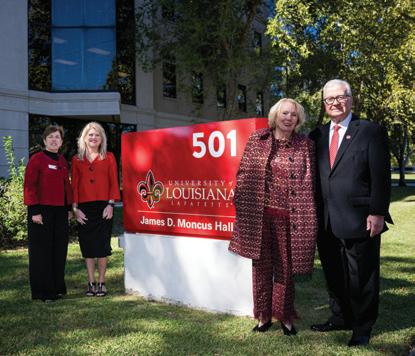
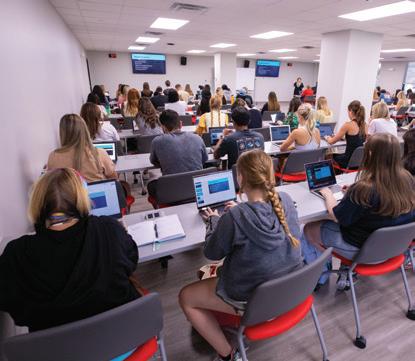
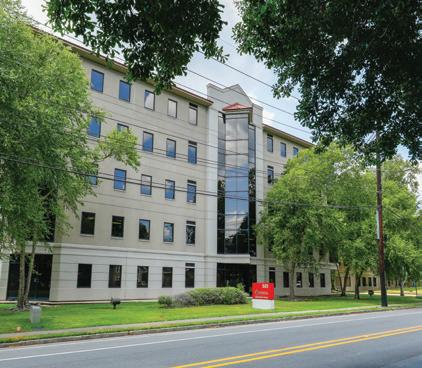
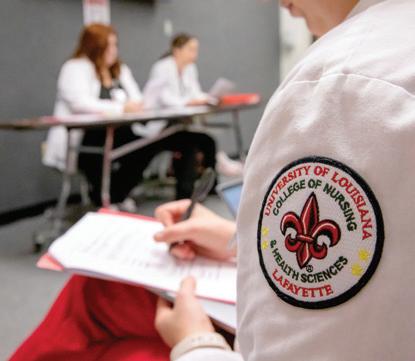
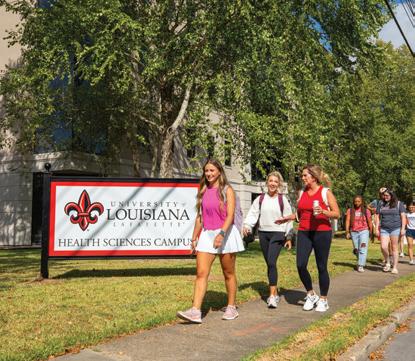
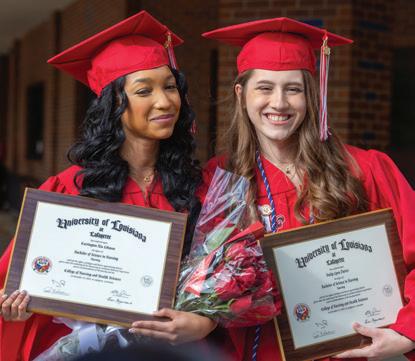
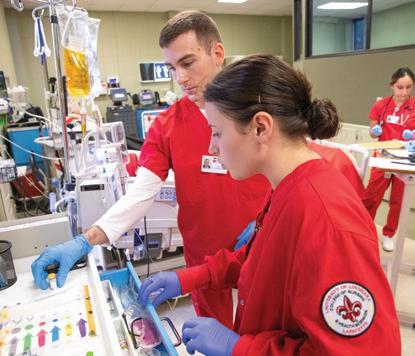
of Nursing & Health Sciences. The University recognized the foundation’s generosity last year when it renamed one of the Health Science Campus’ buildings after Moncus, a philanthropist, businessman and community leader who died in 2021.
Debbie Spallino, Moncus Foundation trustee, said the University “always held a special place in Jim Moncus’ heart.”
“The Moncus Foundation is proud to carry on his legacy by investing in the College of Nursing & Health Sciences and helping to fulfill the University’s vision for the development of its Health Sciences Campus. We are confident that the students who learn within the walls of James D. Moncus Hall will improve the quality of life for so many in the communities in which they serve through this very vital career choice,” Spallino added.
The $20 million investment from LHC Group and the $7 million gift from the Moncus Family Foundation are part of Together: The Campaign for the University of Louisiana at Lafayette, the largest comprehensive fundraising initiative in University history.
Such support – and the continued generosity of donors – will enable UL Lafayette to fulfill its vision for the campus while also strengthening the region’s health care landscape, said Dr. Joseph Savoie, University president.
“Developing the Health Sciences Campus opens a new era for health care in the region. Over time, it will become a center for health sciences education, research and practice,” Savoie said.
Donor support “lets us dream big,” Broussard added. “Donors are providing opportunities that will benefit our students and faculty and enhance the college’s reputation as the primary producer of the region’s health care workforce. They’re helping us write a new chapter – and we’re excited and grateful.”
46 LA LOUISIANE | SPRING 2024
‘A WONDERFUL LIFE’
Gift honors couple’s love for the University – and each other
BY CHRISTI LANDRY BELL
While touring the University of Louisiana at Lafayette under a clear February sky, Dr. Harold Travasos, ’48, was surprised – and proud – of how the campus has grown since his time as a student nearly 80 years ago.
The 98-year-old retired veterinarian recalled the dairy barn –which once stood where Moncus Park is now located – where he worked to earn tuition. He remembered Evangeline Hall, a women's dormitory, where he first met his wife, the former Theresa Russo, ’48. They were married for 75 years before she passed away in 2023. A shared love of their alma mater led Theresa to leave nearly $1 million to UL Lafayette to support scholarships and student veterans. It was a decision he happily agreed with.
“Giving back was very important to her and to me, too,” Travasos said.
An Avoyelles Parish native, Travasos enrolled at what was then Southwestern Louisiana Institute in 1942 to study dairy husbandry. With World War II underway, Travasos received a deferment that enabled him to attend college rather than be drafted into the U.S. Army. Two years into his studies, however, he enlisted. “I just wanted to go,” he said.
Travasos soon found himself at Camp Beauregard (now Training Center Pineville) in central Louisiana. Travasos’ infantry division was sent first to England and France, then to Belgium, where he fought in the Battle of the Bulge in late 1944. During the battle, his “best buddy” was killed, and Travasos was shot in the chin. The bullet entered one side and exited the other.
“Every morning when I shave, I remember it,” he said. After a two-week convalescence, he returned to the thick of the action. Travasos received the Purple Heart for his bravery.
The war ended in 1945, and Travasos returned home. He
By the numbers
8
The campaign has resulted in the creation of
47 Endowed Chairs Endowed Professorships
180 Endowed Scholarship Funds
Visit together.louisiana.edu to give today.
These numbers are as of March 27, 2024.

resumed his studies at SLI and reunited with Theresa, who was completing her bachelor’s degree in business. In 1948, they graduated and married.
An Abbeville native, Theresa then taught at Forked Island Elementary School and handled bookkeeping for the Abbeville Adult Education Program.
By 1950, the couple headed to Auburn University in Alabama, where Travasos was one of six Louisiana students selected to attend veterinary school. Theresa found a job at the university and settled into their new surroundings. Travasos said she often joked that Auburn should have awarded her a Ph.T. – Putting Husband Through.
Following his graduation, the couple returned to Abbeville. Travasos practiced veterinary medicine and served as one of the first commissioners of the Teche-Vermilion Fresh Water District. Theresa was at his side during his 35-year veterinary career, managing the practice, assisting with research projects and supervising her family’s real estate holdings. The couple had one son, the late Todd P. Travasos.
Through the years, their love for their time at SLI never wavered. It was where they met, established goals for their professional lives and built their foundation.
“We had a wonderful life,” Travasos said. “College meant so much to Theresa, to the both of us. That’s why she wanted to leave something to the University. I think that’s one of the biggest accomplishments of our lives.”
THE TOGETHER CAMPAIGN HAS REACHED $426.4M OF ITS $500M GOAL
$313.8 MILLION $112.6
MILLION has benefited academics and research has benefited the athletics program
29K individuals and organizations have made campaign gifts
Estate and planned gifts make up
$36.8 MILLION in pledged support
59% employees & alumni
7% corporations, foundations & organizations NEARLY
34% friends, parents & students
LA LOUISIANE | SPRING 2024 47
Dr. Harold and the late Theresa Travasos

The Ragin’ Cajuns Water Ski Team is turning the sport upside down. It has won four national championships in a row, for a total of 10. That translates to the second most titles in the intercollegiate club sport’s history. Since 1994, the team has placed first or second at every national championship other than in 2002 (third) and 2009 (fourth). Read more about the team — and its dominance — on page 36.
48 LA LOUISIANE | SPRING 2024
PAUL KIEU

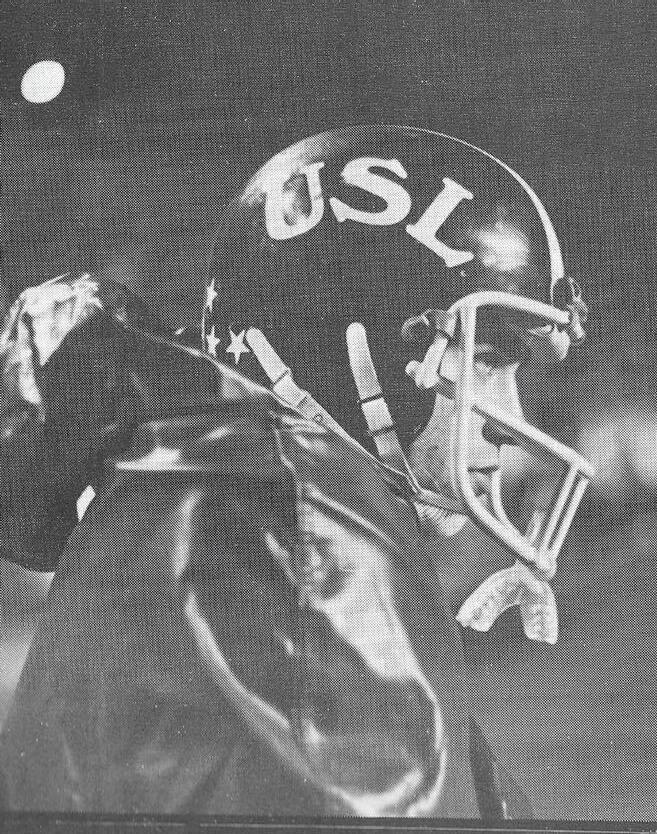

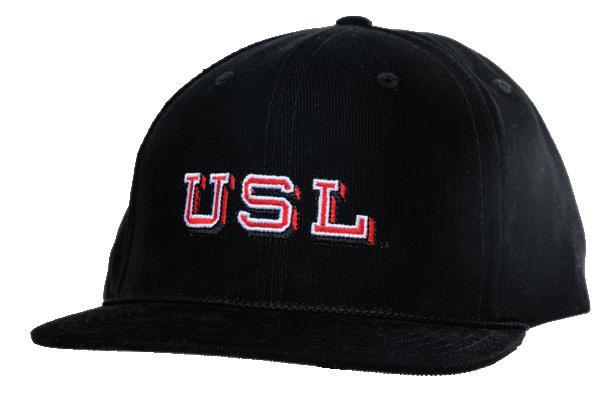
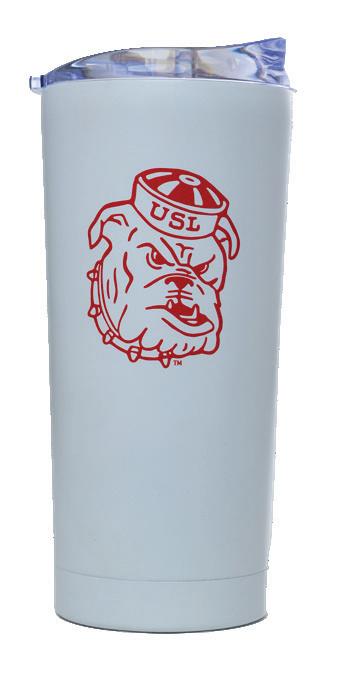

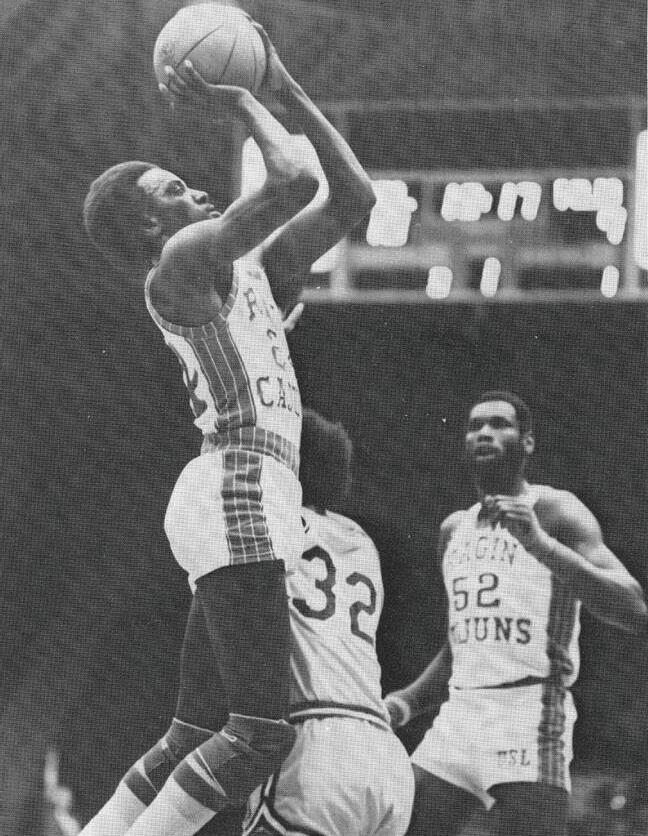



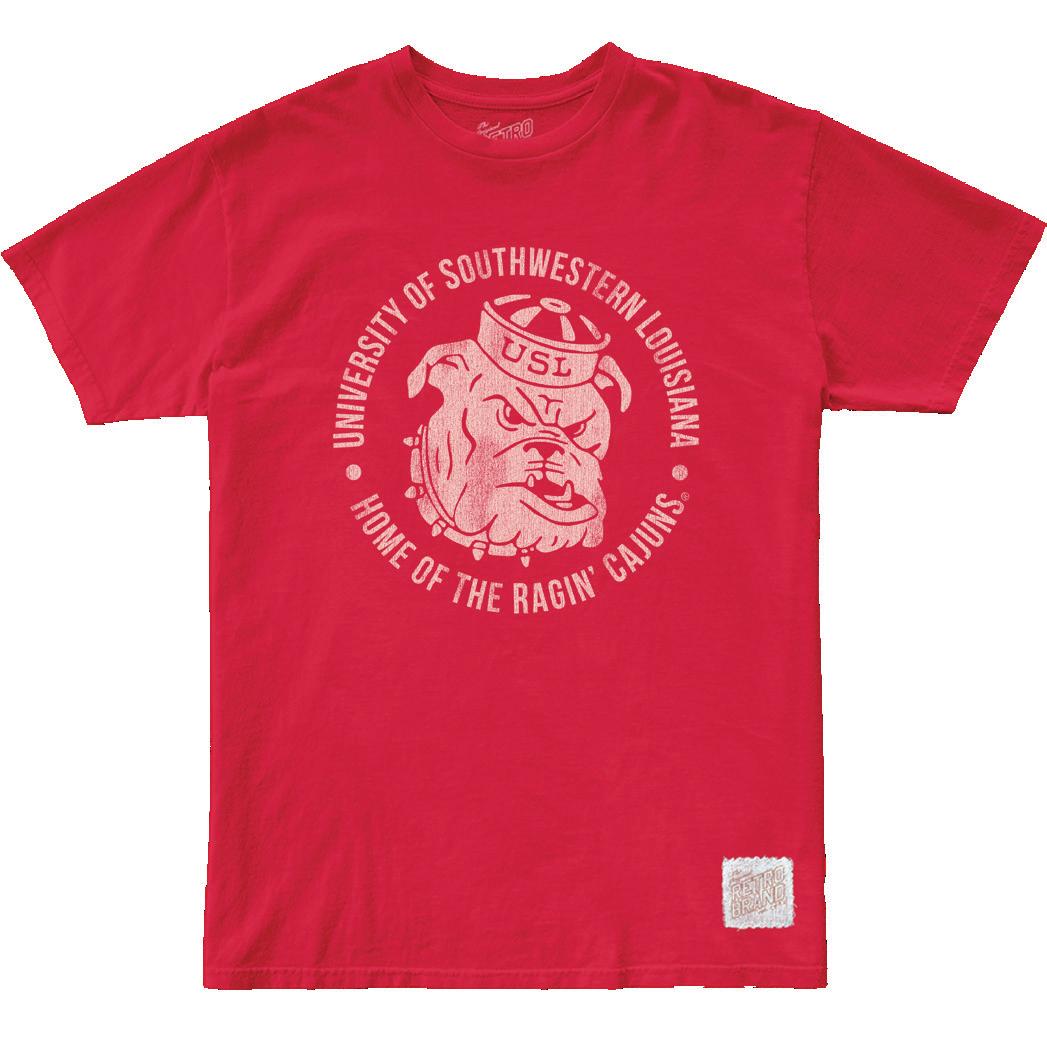


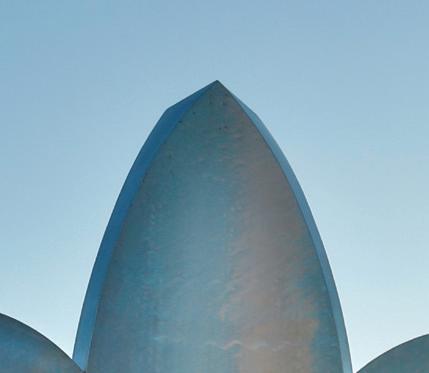


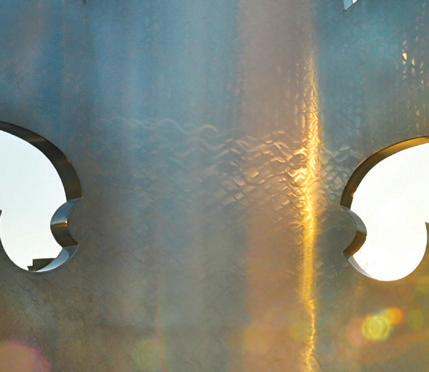
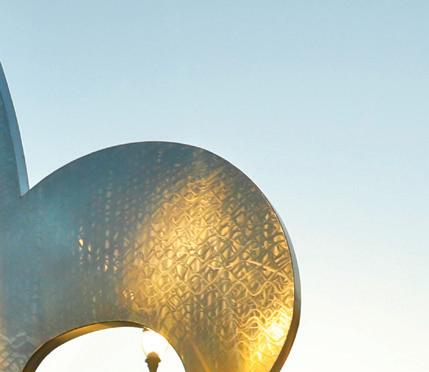

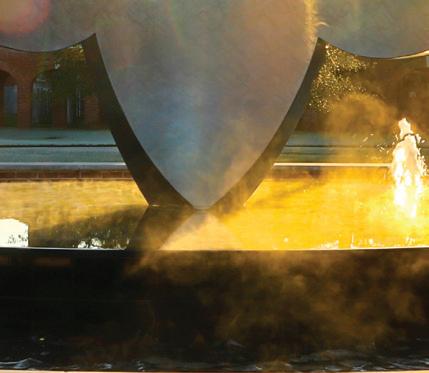
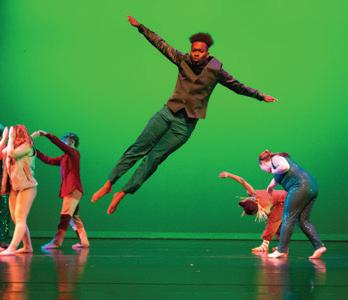
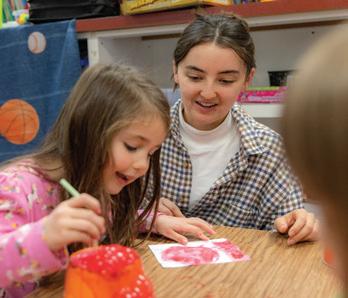
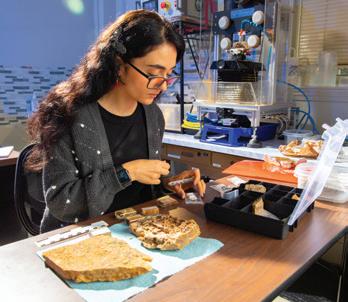
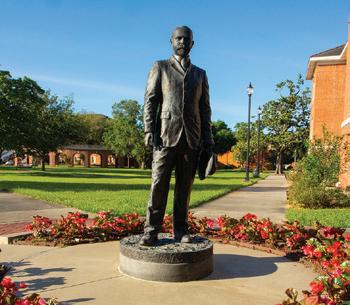
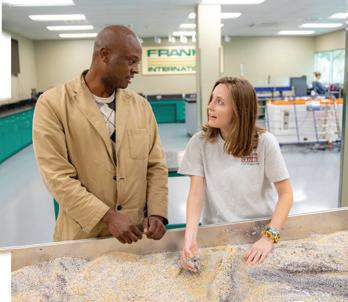


JOIN THOUSANDS OF DONORS WHO ARE HELPING TO SHAPE THE FUTURE OF UL LAFAYETTE BY VISITING t TOGETHER.LOUISIANA.EDU IT'S TIME TO TAKE THE NEXT STEP. P.O. Box 43567 Lafayette, LA 70504-3567 THERE ARE MANY WAYS YOU CAN BE A PART OF THE TOGETHER CAMPAIGN. Cash Estate and Planned Gift Bequest IRA Charitable Rollover Stocks, Bonds and Securities DonorAdvised Funds Corporate Matching Gifts Retirement Plan Beneficiary Designation We see tomorrow as an opportunity for greatness, a blank canvas on which we can leave our mark by empowering student success, advancing faculty research and deepening our service to the community.





















 DOUG DUGAS
DOUG DUGAS
DOUG DUGAS
DOUG DUGAS





















 DeClouet Hall was under construction in 1903. The Main Building, later named Martin Hall, is in the background.
Lafayette Gazette, Sept. 16, 1899
A 1901 cooking class
One of the first of six classrooms
The Bread Club, 1913
A 1912 music ensemble
Sen. Robert Martin introduced legislation that created SLII. president of SLII. He served for 38 years.
DeClouet Hall was under construction in 1903. The Main Building, later named Martin Hall, is in the background.
Lafayette Gazette, Sept. 16, 1899
A 1901 cooking class
One of the first of six classrooms
The Bread Club, 1913
A 1912 music ensemble
Sen. Robert Martin introduced legislation that created SLII. president of SLII. He served for 38 years.











 Southwestern Louisiana Industrial Institute had eight faculty members for its first session in 1901. From left, top row: Florent Sontag, music; SLII President Edwin L. Stephens, mathematics; Beverly Randolph, drawing and gymnastics; Ashby Woodson, manual training; Gertrude Mayfield, domestic science; and V.L. Roy, science. From left, seated: L.W. Mayer, stenography, and Edith Garland Dupré, English and French.
Southwestern Louisiana Industrial Institute had eight faculty members for its first session in 1901. From left, top row: Florent Sontag, music; SLII President Edwin L. Stephens, mathematics; Beverly Randolph, drawing and gymnastics; Ashby Woodson, manual training; Gertrude Mayfield, domestic science; and V.L. Roy, science. From left, seated: L.W. Mayer, stenography, and Edith Garland Dupré, English and French.






































































































































